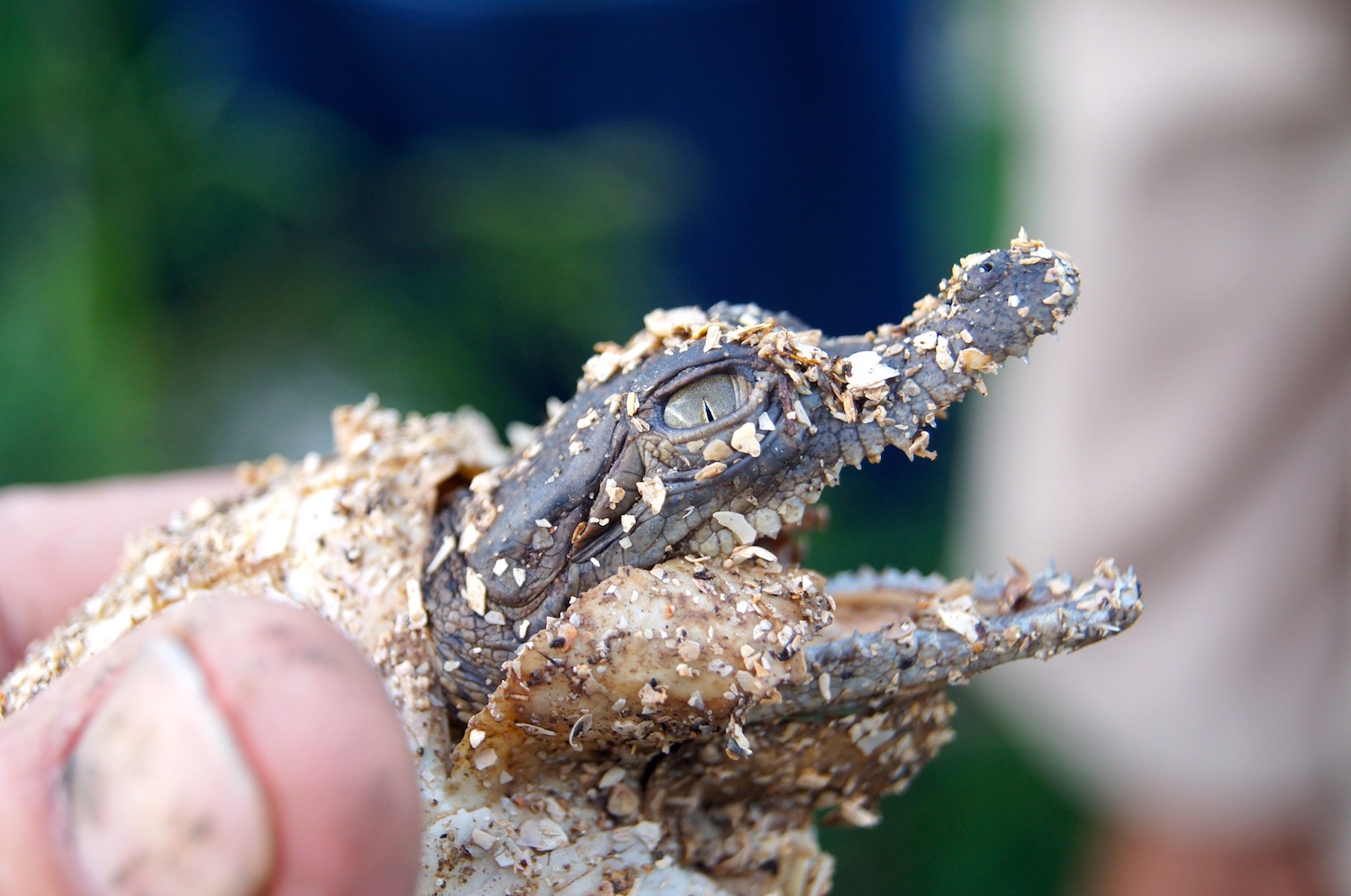The 100 Best Science Photos of 2019
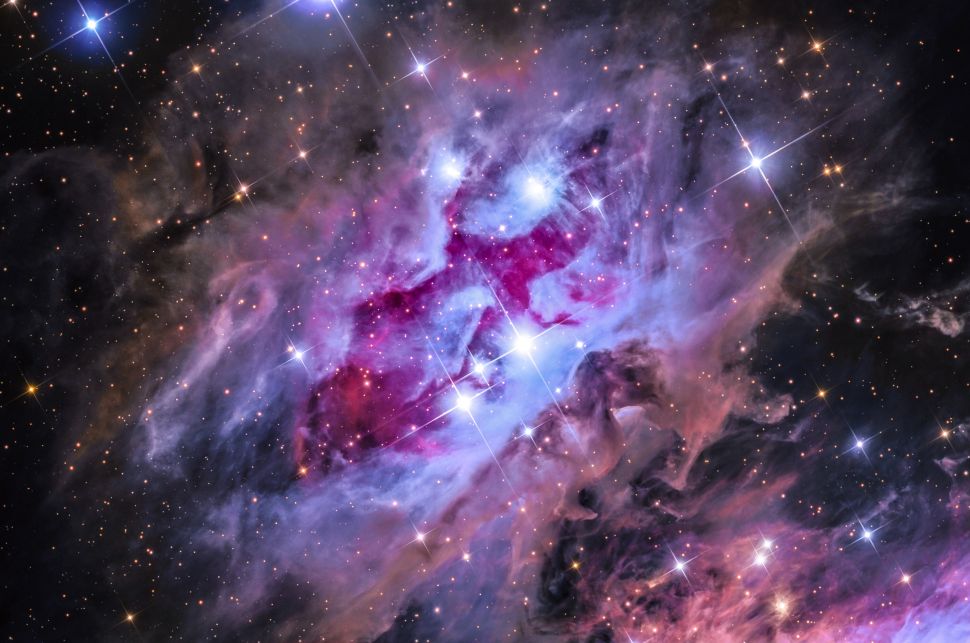
Science can be beautiful, and gross, and surprising, and awe-inspiring. From stoic primates and graceful sea creatures, to cosmic cannibals and black hole jets, to bloody waterfalls and sparkling glaciers, this year was full of visual treasures in the science realm. Here are 100 of our favorite science photos of 2019.
World river maps
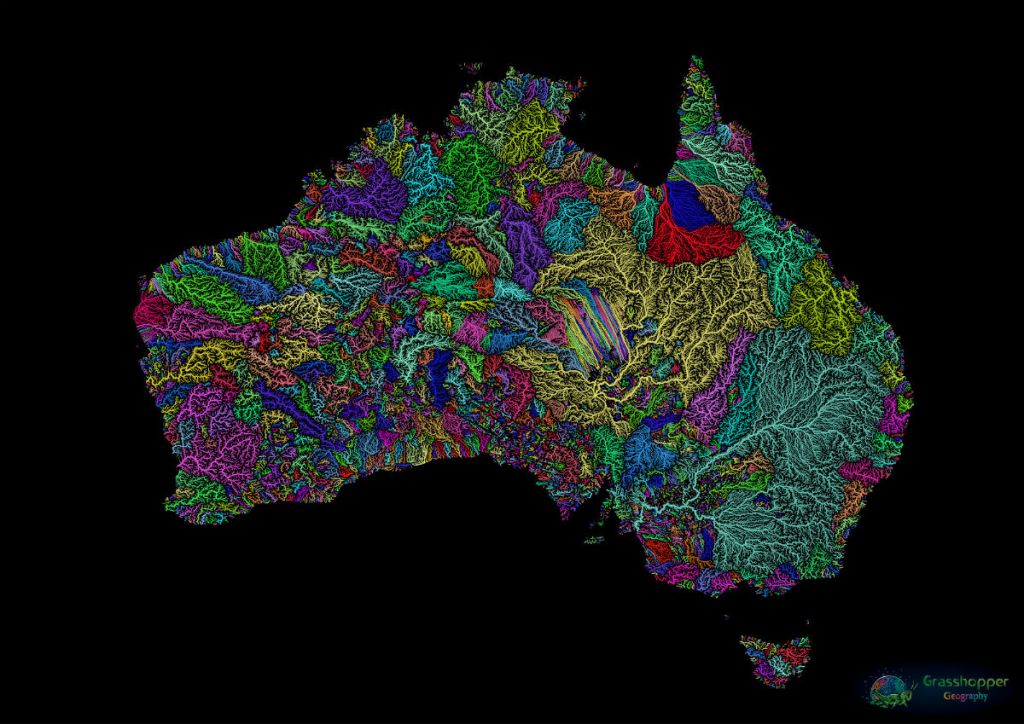
Rivers get the rainbow treatment in a gorgeous series of maps from Hungarian cartographer Robert Szucs, who has a background in geographic information systems (GIS). He created the gorgeous maps because he was bored by standard river maps with "all the lines blue, all the same width," he said.
Super blood moon eclipse
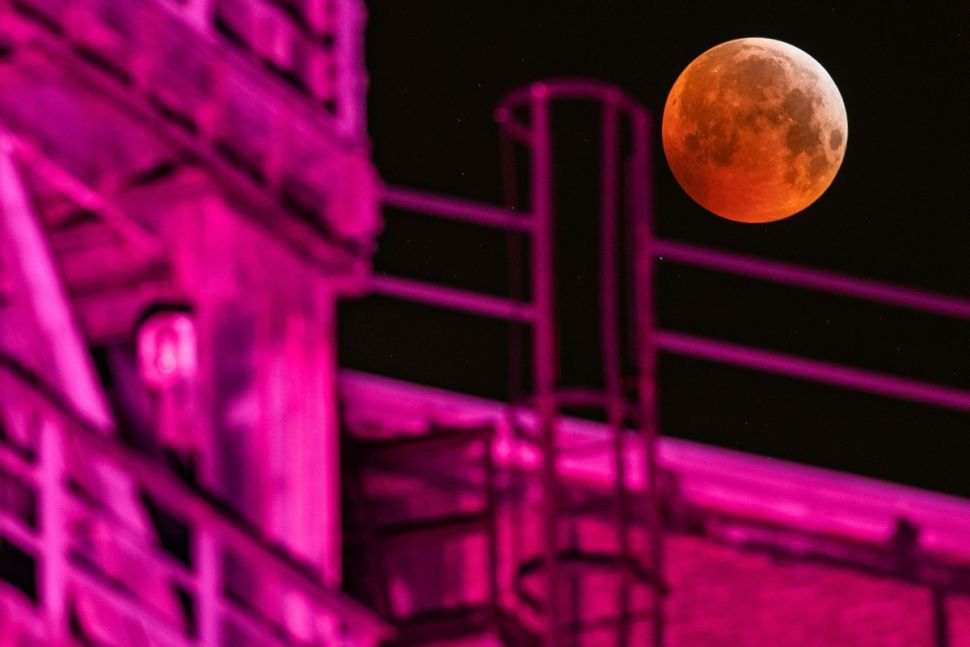
The super blood wolf moon lunar eclipse graced the skies late-night on Jan. 20, 2019, as our lone satellite began its trek into Earth's outer shadow or penumbra. The pinnacle of the show, the total eclipse, happened between 11:41 p.m. and 12:43 p.m. EST (8:41 p.m. and 9:43 p.m. PST), when Earth's umbra had entirely engulfed the moon. Here, Marcel Kusch captures this image in Duisburg, Germany, showing the super blood moon eclipse above an industrial plant.
Humpback whale mama
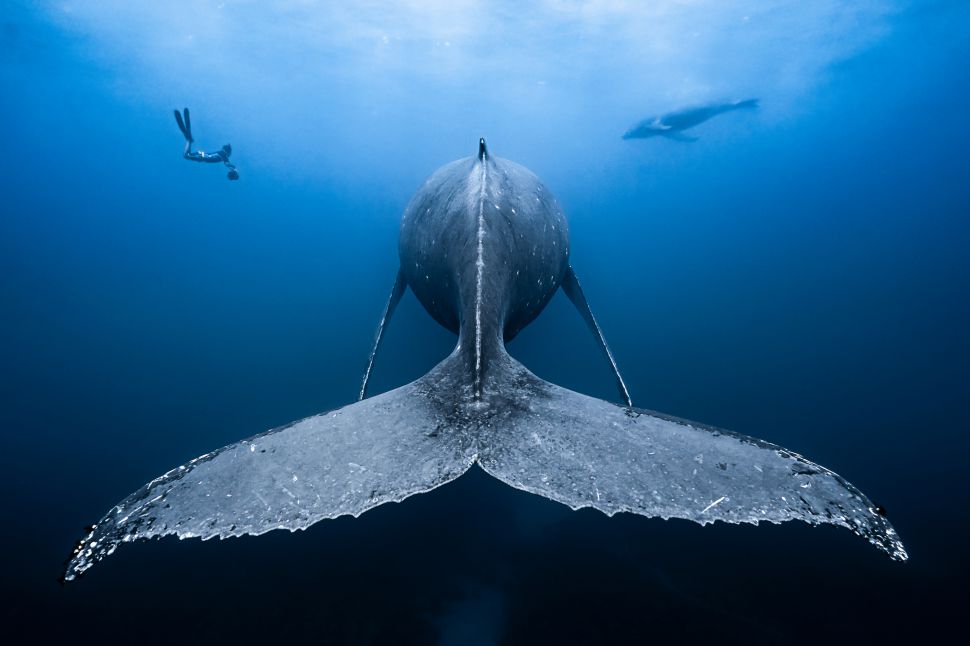
Photographer François Baelen was diving near Reunion Island in the Western Indian Ocean when he captured this otherworldly image of a mother humpback whale and her calf (top right). The photo took the top prize in the Ocean Art 2018 wide-angle category, whose winners were announced in January 2019.
Ray courtship
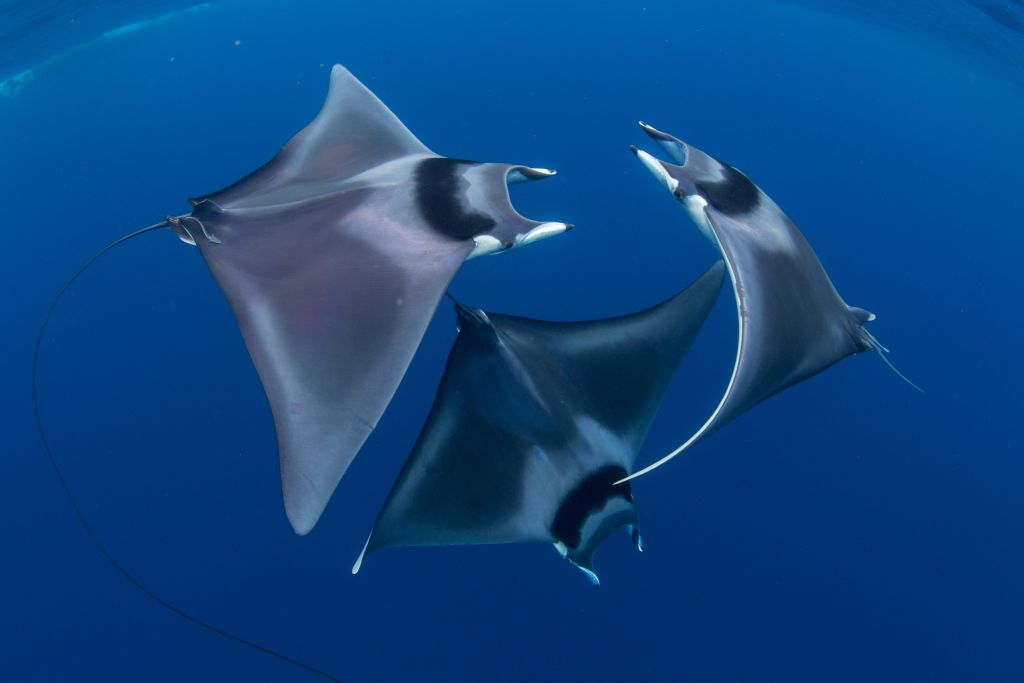
This spectacular image of a trio of spinetail devil rays (Mobula japonica) won the Best in Show in the 2018 Ocean Art underwater photography competition held by Underwater Photography Guide. The winners were announced in January 2019.
Black hole jets

Kyle Parfrey of NASA's Goddard Space Flight Center in Greenbelt, Maryland, and his colleagues created a computer model showing how charged particles near the edge of a black hole generate twisting and rotating magnetic fields. Here, a simulation of so-called collisionless relativistic plasma shows the density of positrons, or antimatter partners to electrons, near a rotating black hole.
Milky Way star map

At the end of January, scientists at the University of Hawai'i at Mānoa (UH) created a map that they hailed the biggest release of astronomical data of all time. By compiling data from four years of observations by the Pan-STARRS observatory in Maui, the researchers created a mosaic of the Milky Way (red smear in the middle) and its cosmic neighborhood. The map showed more than 800 million stars, galaxies and roving interstellar objects.
Get the world’s most fascinating discoveries delivered straight to your inbox.
Deepest universe view
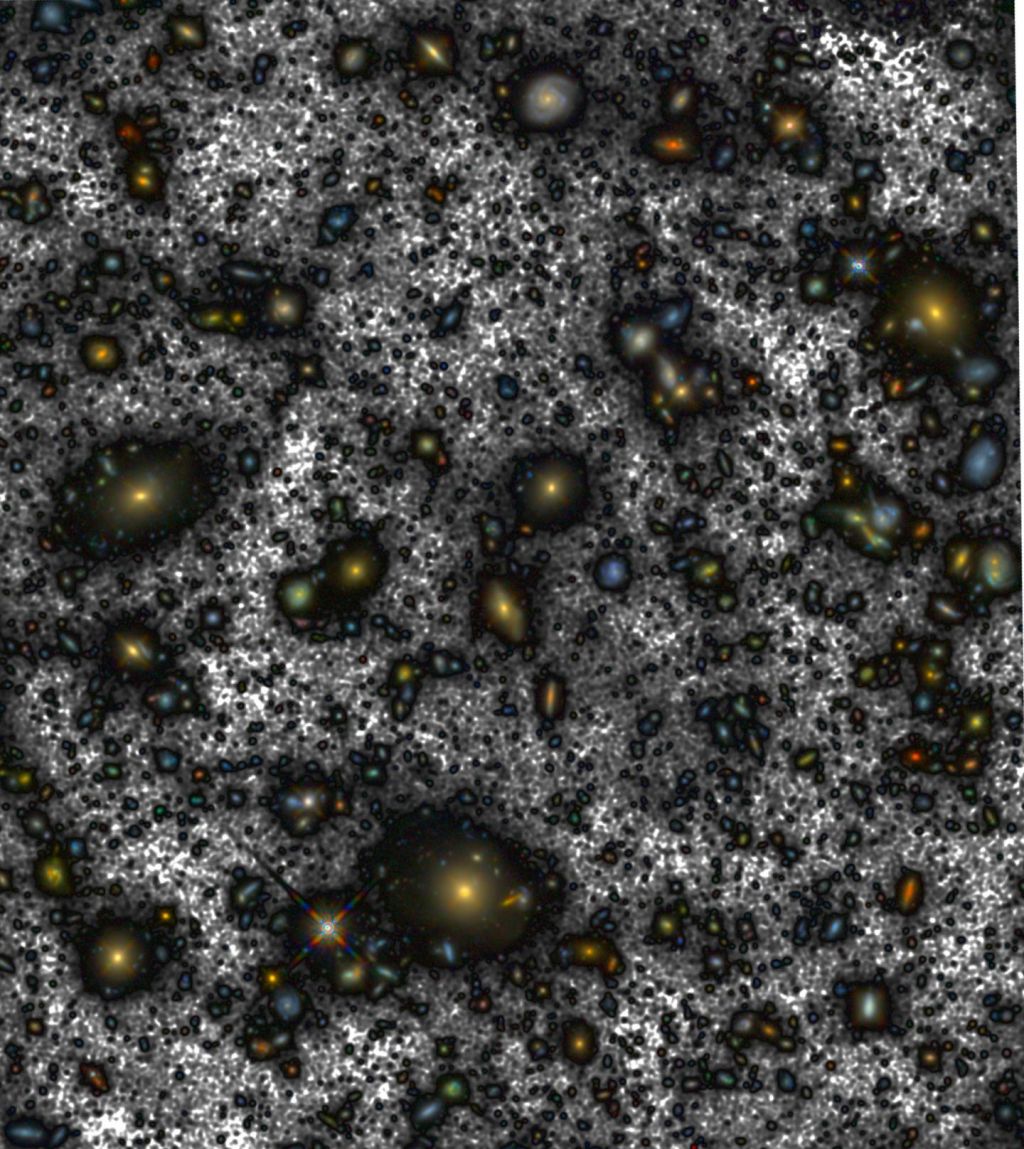
The Hubble Ultra-Deep Field (HUDF) combines hundreds of images taken by the Hubble Space Telescope over multiple years to create the deepest view of the universe ever created. The composite photo, released in January, contains a whopping 10,000 galaxies.
Twisted milky way
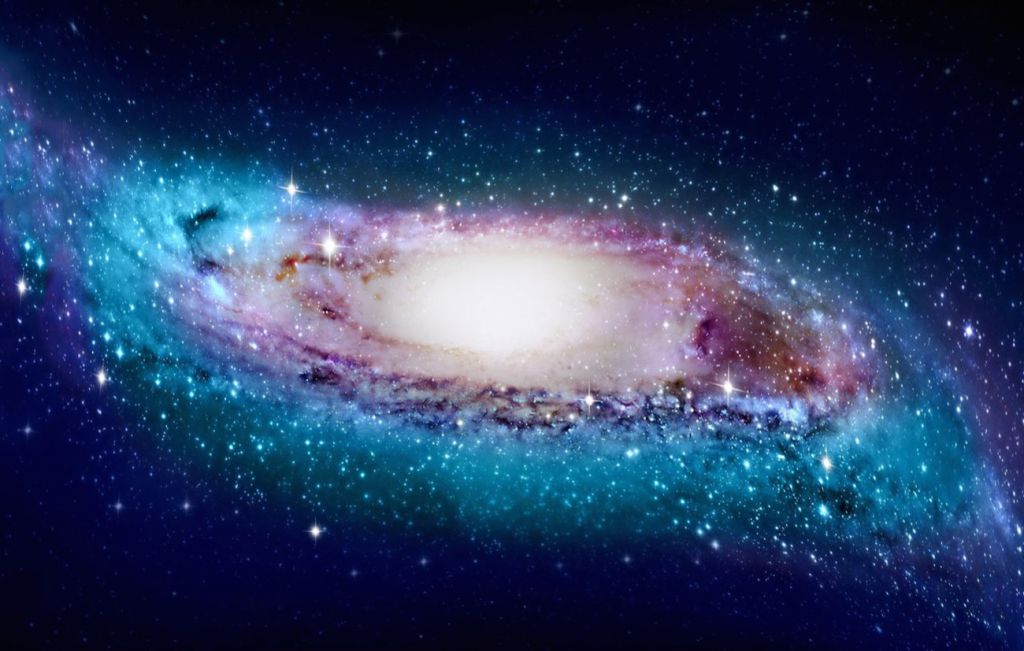
Our home galaxy changed shape this year, or at least how we view it. Scientists found that at the edges of the Milky Way, where the pull of gravity weakens, the shape of the galaxy warps. Instead of lying in a flat plane, the galaxy takes on a bit of a twisted "S" shape.
Painted wolves
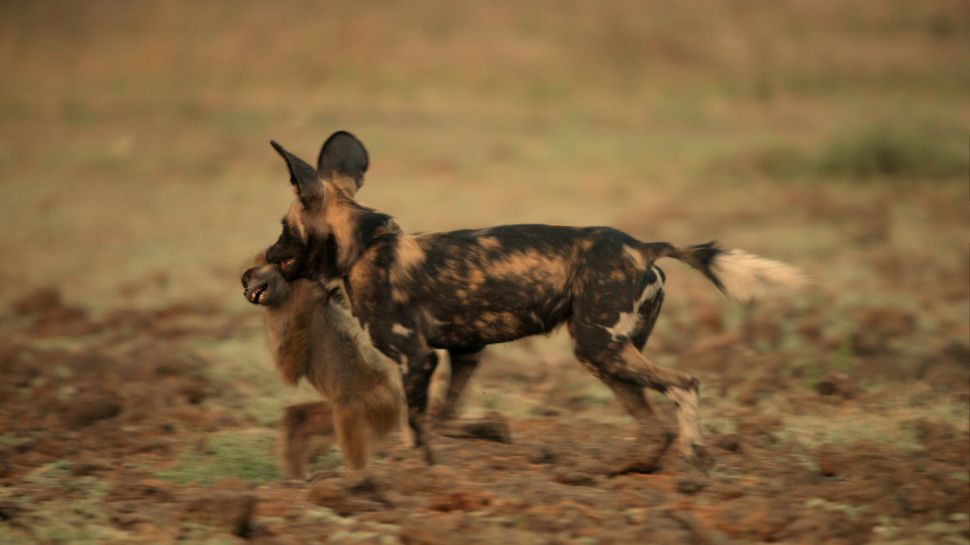
Painted wolves, also called African wild dogs (Lycaon pictus), are the underdogs of African carnivores. And they are perhaps the coolest looking, with their distinct markings, goofy ears and charismatic posturing. This year, BBC America's "Dynasties" showed the first documented evidence of painted wolves hunting and eating baboons.
Wildlife photography awards
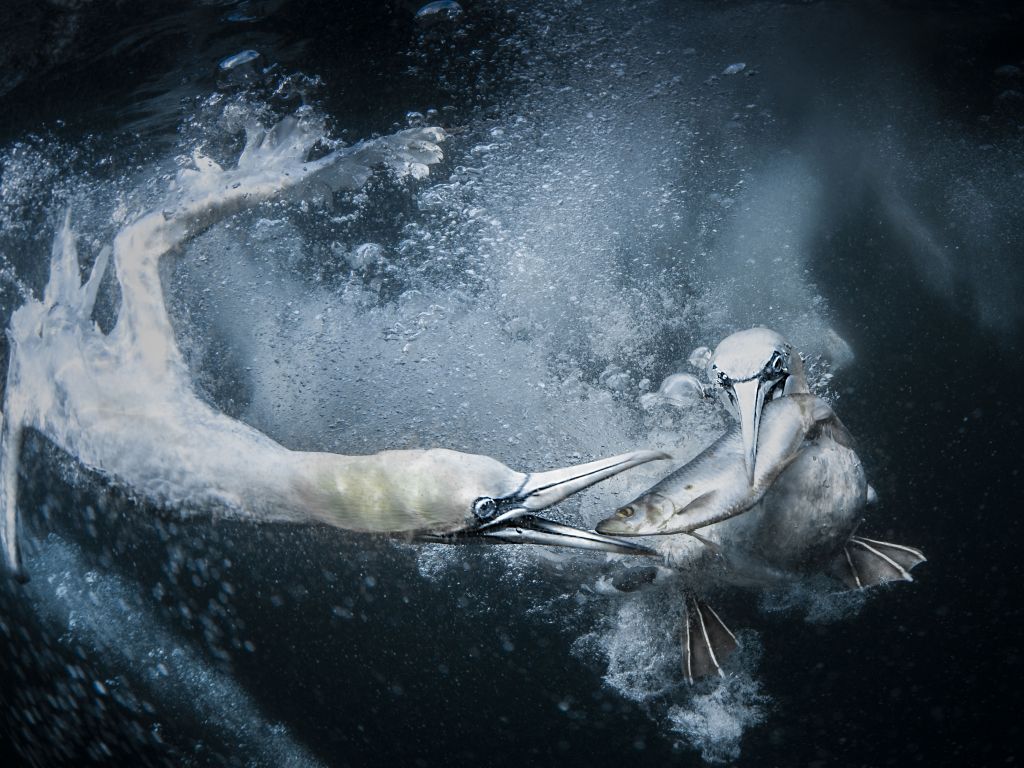
Tracey Lund, of the United Kingdom, captured this action shot of gannets snagging fish underwater, and in doing so, Lund also snagged a finalist spot in the Natural World & Wildlife category of the 2019 Sony World Photography Awards.
Penguin Chicks Warm
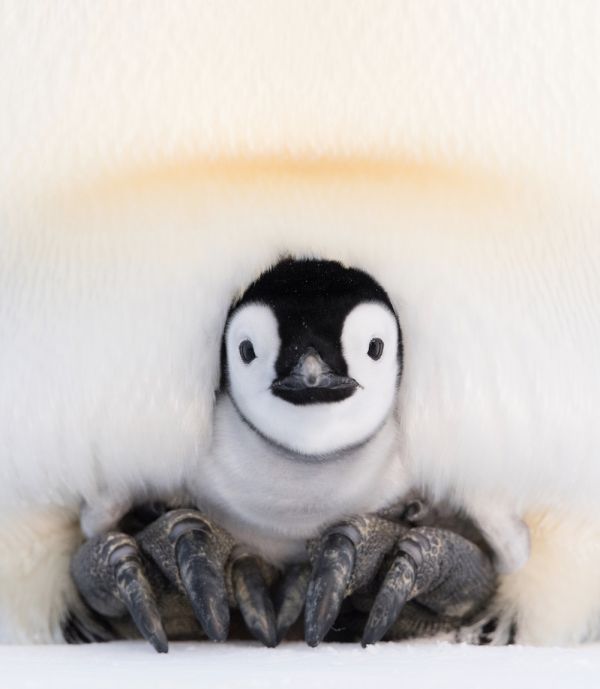
In an episode of BBC America's "Dynasties" that aired in February, scientists followed a colony of emperor penguins (Aptenodytes forsteri) as the tuxedoed birds contended with Antarctica's inhospitable climate to keep their fragile eggs cozy. Here, a 2-week-old chick balances on its mother's feet and stays warm in her fuzzy brood pouch.
Cardinal gynandromorph
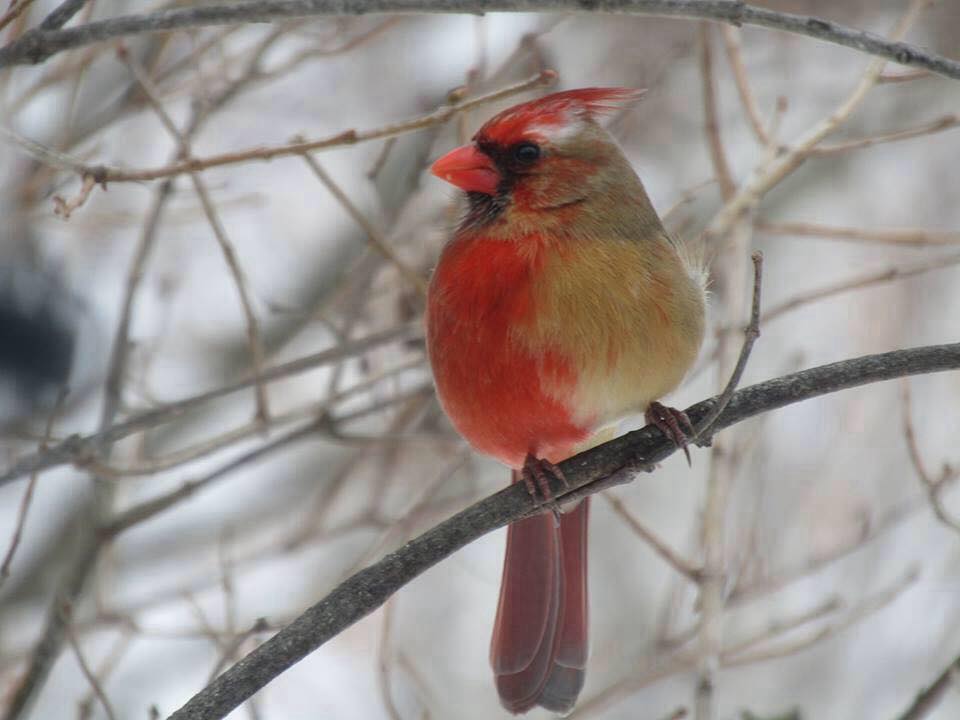
A Pennsylvania couple spotted this quirky-looking cardinal roosting outside their home in Erie early this year. Its feathers are scarlet on one side and taupe on the other — a telltale sign that this bird is a gynandromorph, or half male, half female.
Fly testes
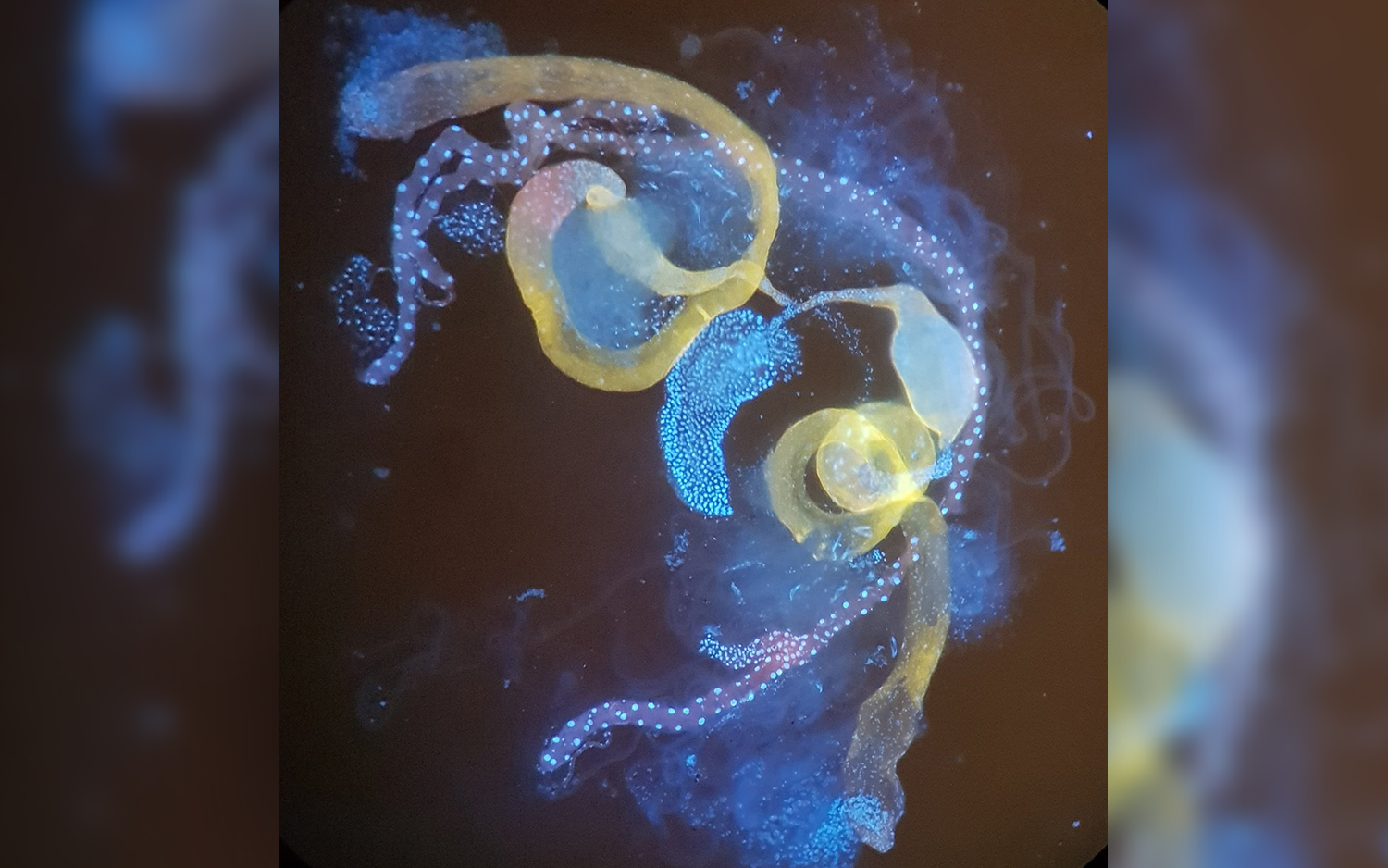
Glittering galaxy? Nope, just a sparkly image of a fruit fly's sex organs. Biologist Ben Walsh, a doctoral candidate in the Department of Evolution, Ecology and Behaviour at the University of Liverpool in the United Kingdom captured the glorious image. He stained the testes of a dissected fruit fly with fluorescent dye and then captured the result through a microscope using the camera on his iPhone.
Yosemite firefall
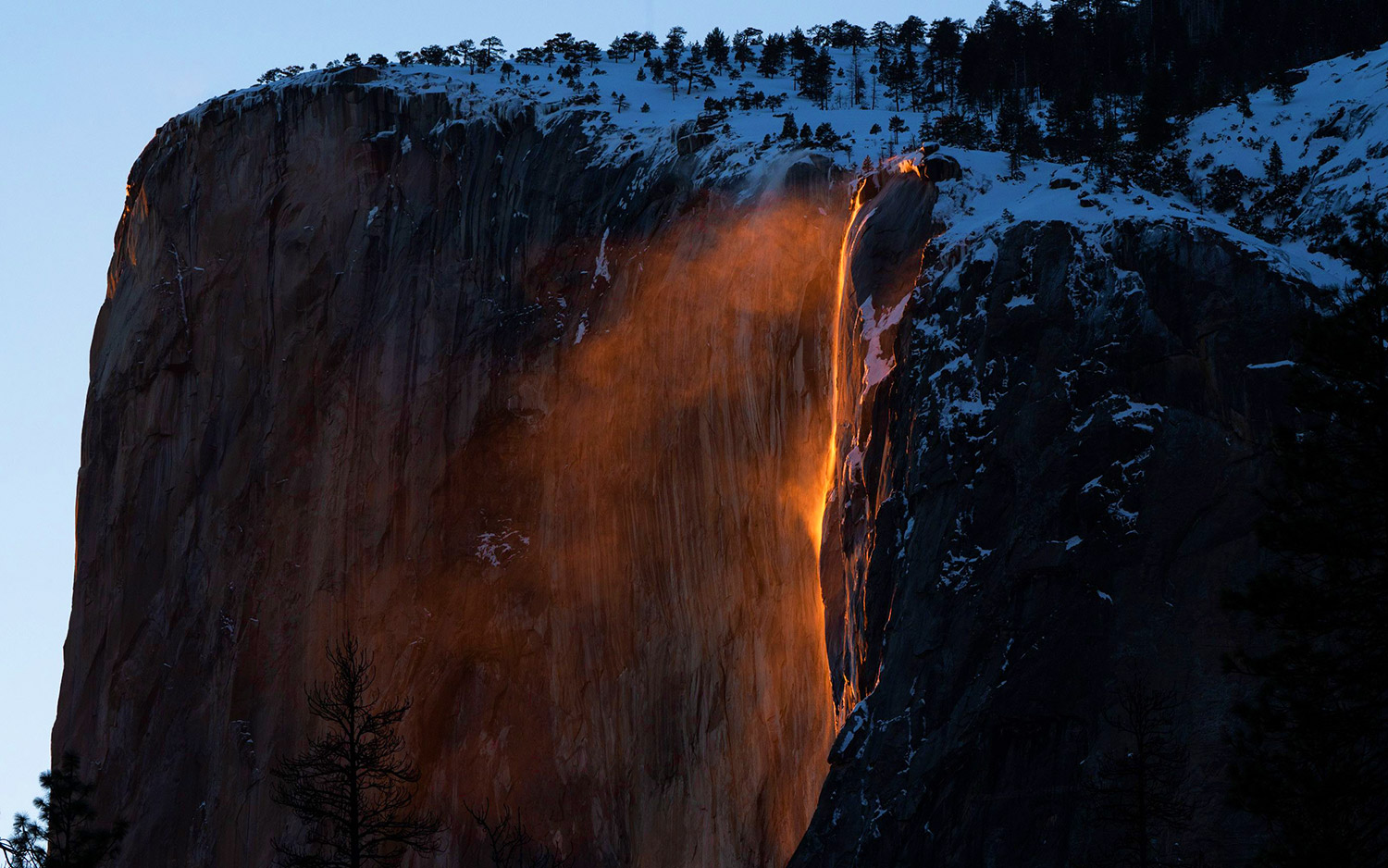
What appeared to be a sizzling fire poured over Yosemite's iconic El Capitan rockface this year. But it wasn't hot nor was it a flame. Rather, this so-called firefall happens when the winter light hits the melting snow just as the sun is setting. The fiery display occurs at the same time every year.
Hookwinker sunfish
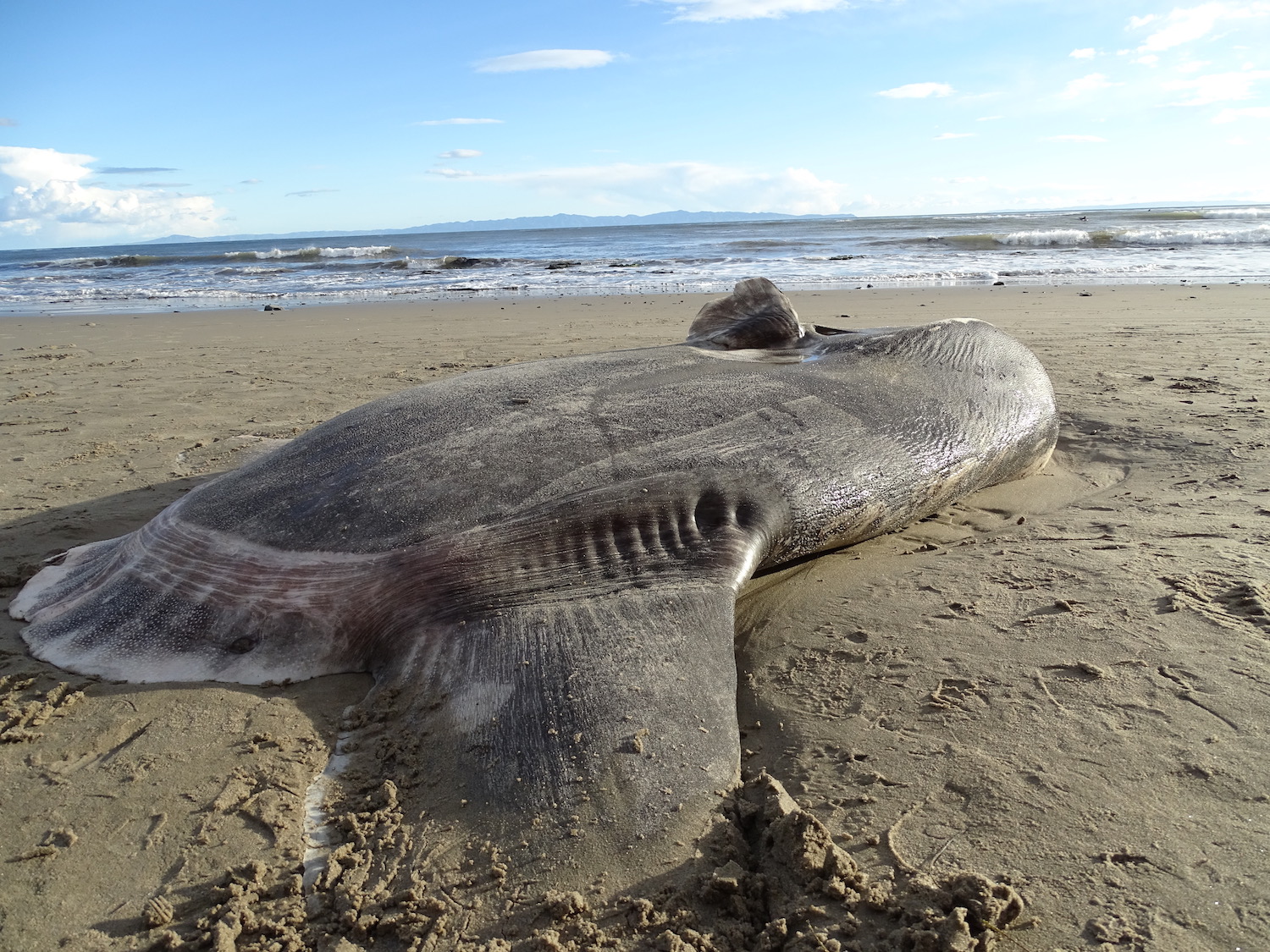
A mysterious and hefty fish called the hoodwinker (Mola tecta) showed up in the Northern Hemisphere for the first time this year. The 7-foot-long (2.1 meters) fish washed ashore in Sands Beach in Santa Barbara County, thousands of miles away from its home turf in southeastern Australia, New Zealand, South Africa and possibly Chile.
Tarantula eats opossum
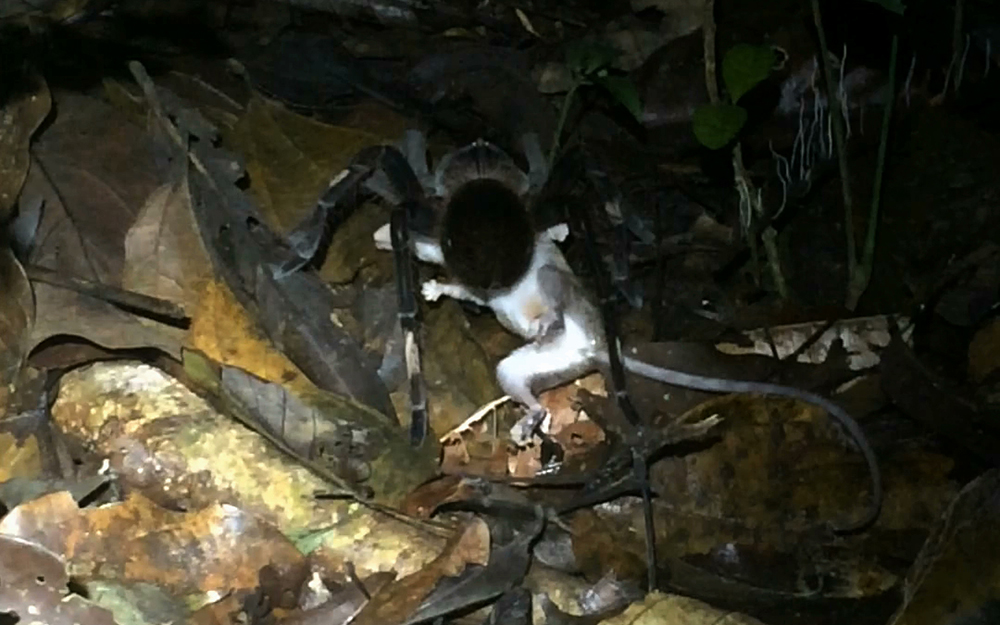
Researchers made a gruesome discovery and took some gruesome images of it. They found that spiders in the Peruvian Amazon regularly dine on frogs, lizards and even small mammals. Here, in all its glory, a tarantula in the genus Pamphobeteus preys on a mouse Marmosops opossum. Dinner anyone?
Tiny ancient frog
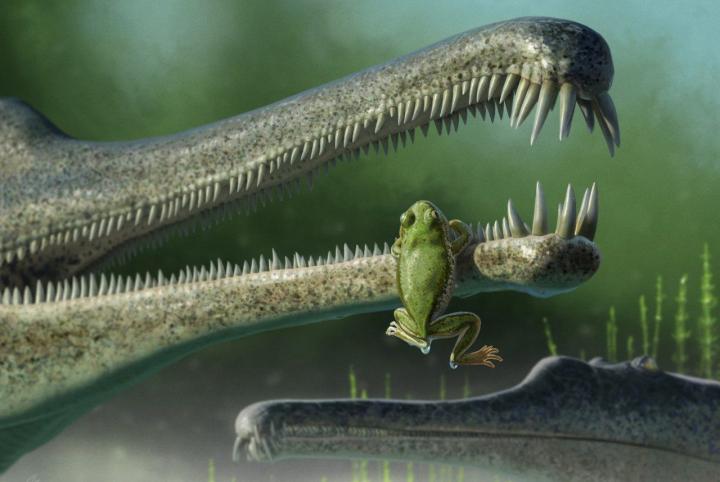
Hang on, little guy! This tiny frog lived some 216 million years ago and was so small it could have fit on the tip of your finger. Researchers found the specimen of this amphibian — now considered the oldest known frog relative from North America - in the Chinle Formation of northern Arizona. Luckily, if a giant phytosaur did snap its toothy maw at the Chinle frog, it missed.
Shark captures parrotfish
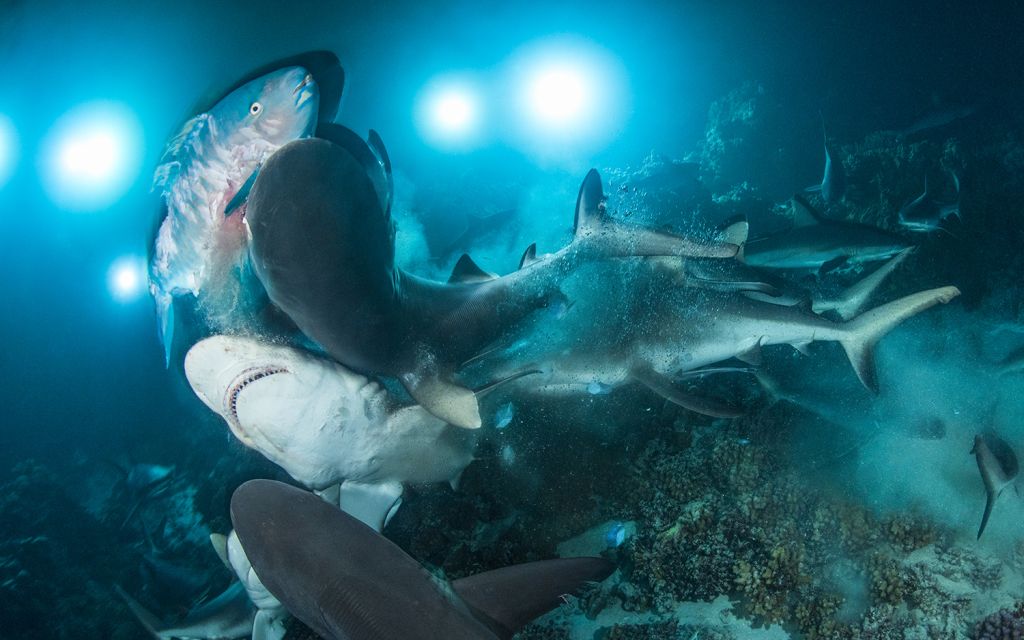
Photographer Richard Barnden captured the last moments of a doomed parrotfish's life in the depths of French Polynesian waters. In doing so, Barnden snagged the twin titles of Underwater Photographer of the Year 2019 and British Underwater Photographer of the Year for 2019. The parrotfish in the photo looks almost panicked, as it frantically seeks shelter from the hungry sharks on hot pursuit.
Hitchhiking argonaut
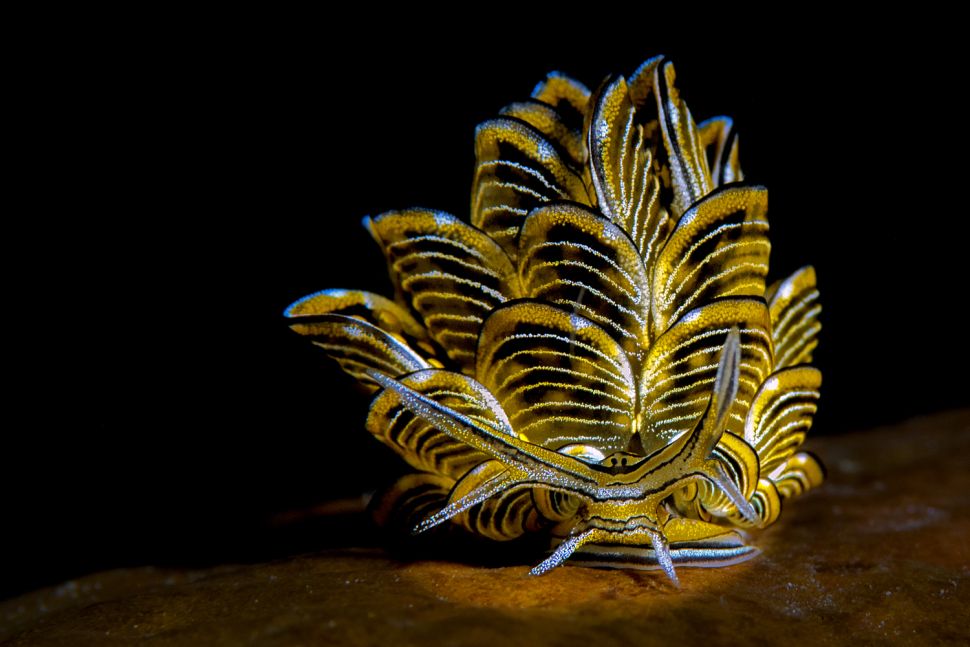
In that same photo contest, photographer Songda Cai collected a Commended award in the Behavior category this year. Her snazzy photo illuminates a jellyfish carrying a type of deep-sea octopus called an argonaut — males rely on jellyfish for protection from predators.
Cosmic bat
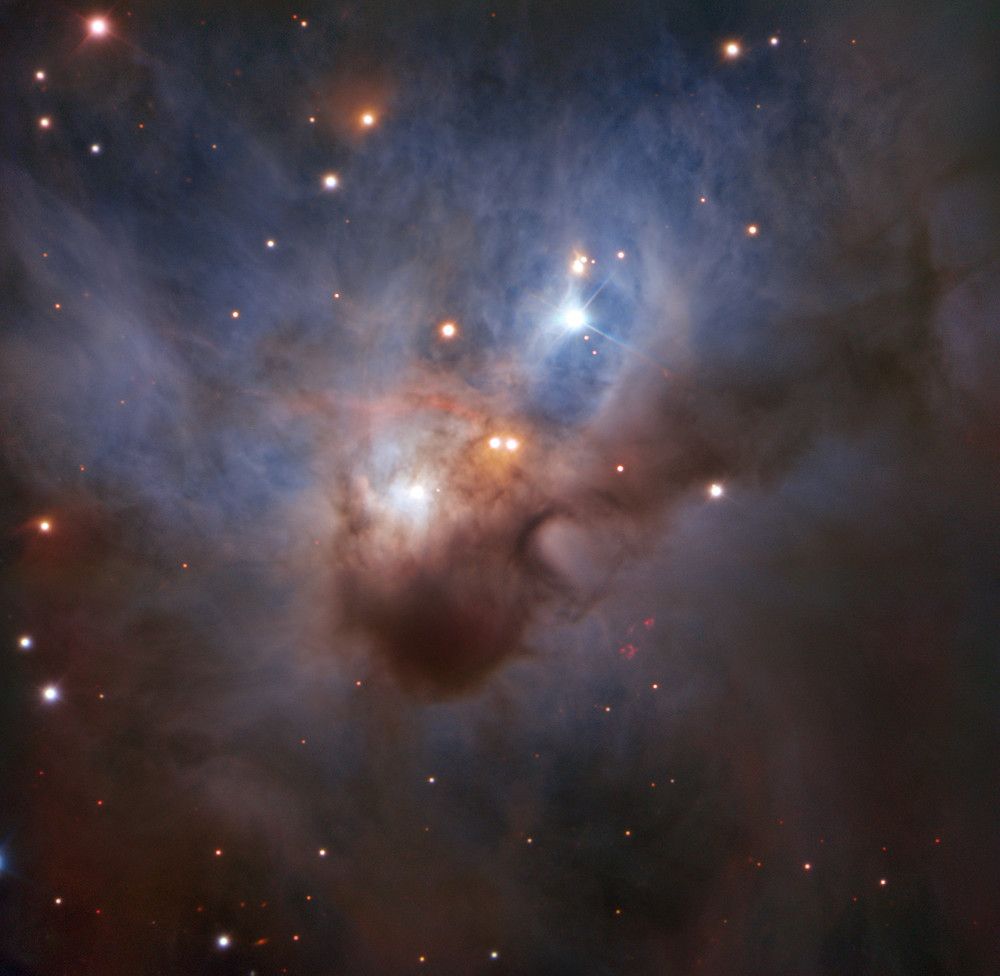
As if swooping from the darkness, a giant bat of dust and gas spread its ghostly wings this year just beyond Orion's right hip. And the European Southern Observatory's Very Large Telescope snapped this stunning image of the spooky scene. Called the "Cosmic Bat," this formation is considered a reflection nebula because it glows "like fog around a street lamp," NASA says.
Equinox Earth

In March, Earth showed a two-toned face in a satellite glamour shot snapped during the spring equinox. In the image, half of our blue orb was illuminated, while the other half was steeped in darkness. What caused such beautiful symmetry? On the equinox, the amount of daylight and darkness are nearly equal at all latitudes, according to the National Oceanic and Atmospheric Administration (NOAA).
Long-tusked elephant
A photo posted by @willbl on Mar 18, 2019 at 3:38am PDT
An elephant matriarch in Kenya named F_MU1 died of old age this year, after spending some 60 years living in the Tsavo region. And she was an impressive sight to the very end. Known as a big tusker, this African elephant sported tusks long enough to brush the ground. Fortunately, photographer Will Burrard-Lucas captured stunning images of the stately pachyderm in the weeks prior to her death. Burrard-Lucas nicknamed F_MU1 "Queen of the Elephants."
Saturn ring moons
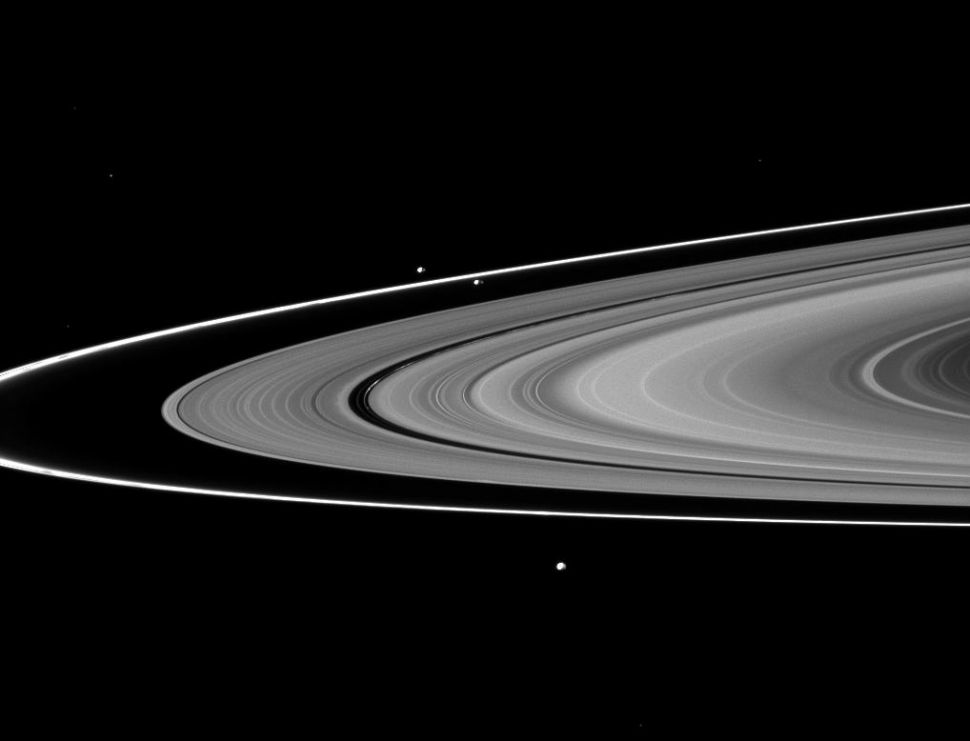
Saturn's moons Prometheus, Pandora and Epimetheus hang like specks of dust among the planet's rings in this image snapped from the Cassini spacecraft. In fact, new views like this have suggested these moons likely coalesced from the planet's rings, acquiring their color from either ice volcanoes or a mysterious red material in the rings.
Inside-out toad
Sorry for the gross picture. This was a toad - but it was turned inside out. I’ve never seen anything like it before - the result of some kind of predator? @MyFrogCroaked pic.twitter.com/HwuZPLmq9pMarch 24, 2019
Sometimes gross is also "amazing," as in this inside-out toad! Jan Freedman, curator of natural history at The Box museum in Plymouth told Live Science that he was walking with his family at a reservoir when his 8-year-old son spotted the gory corpse. You can see the toad's translucent intestines spilling out, while the peeled skin of its underside, which is still attached below the jaw, stretches over the toad's back.
Baby crocodile
This year, Natalia Rossi, the manager of the Cuba Program for the Wildlife Conservation Society (WCS), wrote about her amazing work as a crocodile specialist and the difficulty of being in such a male-dominated field. "When you jump into muddy waters full of crocodiles and all male eyes are on you, and you feel the silent wonder: Is she going to make it?," Rossi said. Here, an image she snapped of a baby American crocodile (Crocodylus acutus) as it hatches from its shell in Cuba.
Buff monkey
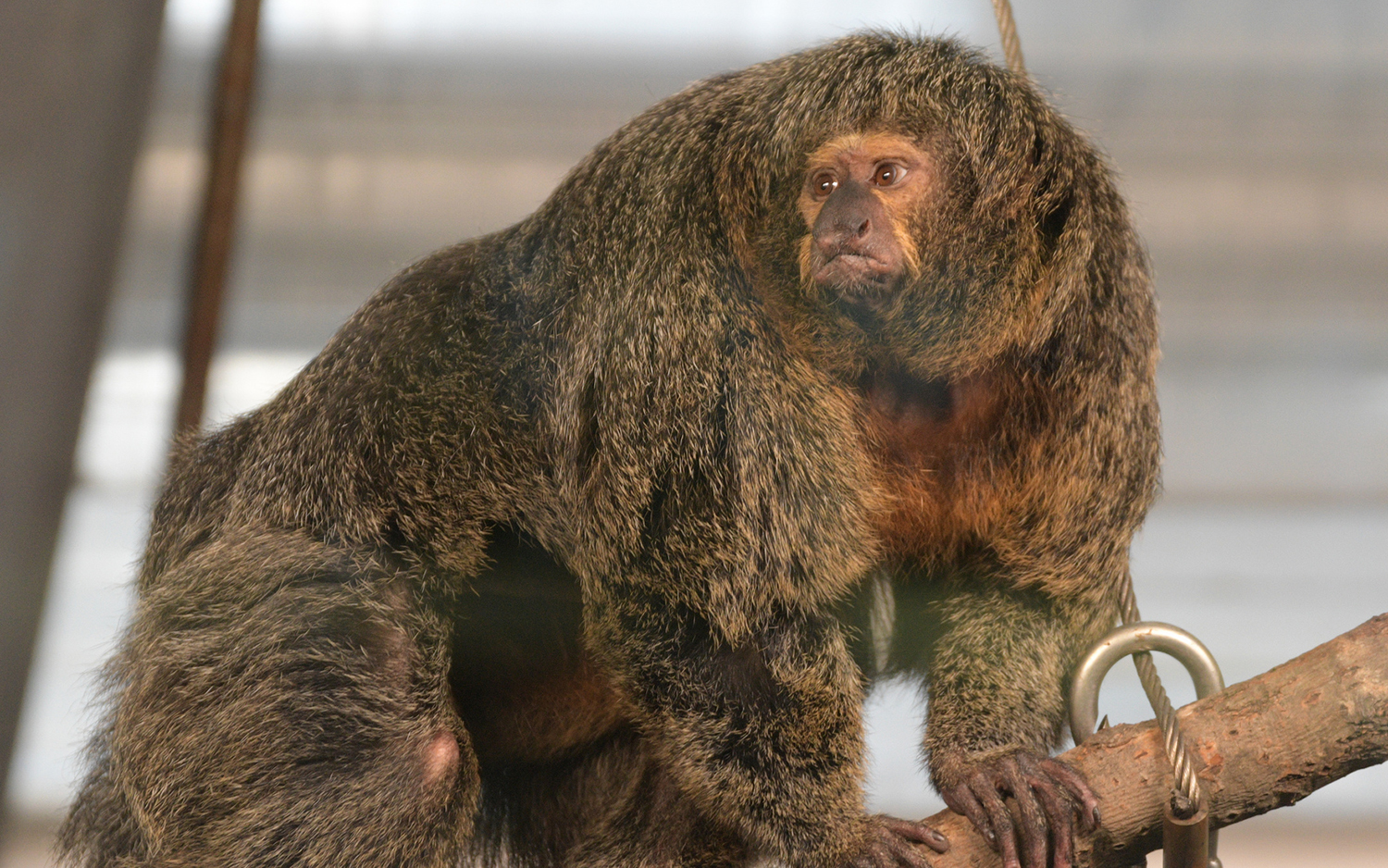
This spring, an image of a monkey in a Finland Zoo got quite a bit of attention on social media for her particularly buff body. In the image, a female white-faced saki monkey (Pithecia pithecia) named Bea crouches on a branch in her enclosure at the Helsinki Zoo. Her arms, chest and legs looked exceedingly bulky relative to her small face. Turned out, she was not a furry bodybuilder, but rather had the ability to puff up her fur.
Bering Sea ice

Images released this year highlighted the transformation of the planet's surface as a result of climate change. At the point when the Arctic's sea ice was supposed to reach its maximum thickness, scientists found that it was almost gone across the Bering Sea. In early April, the sea was almost entirely free of ice, scientists with the National Oceanic and Atmospheric Administration (NOAA) pointed out. The image shows the iced-over Bering Sea this time of year in 2014 (left), and what it looked like on March 31, 2019 (right).
Phantom predator
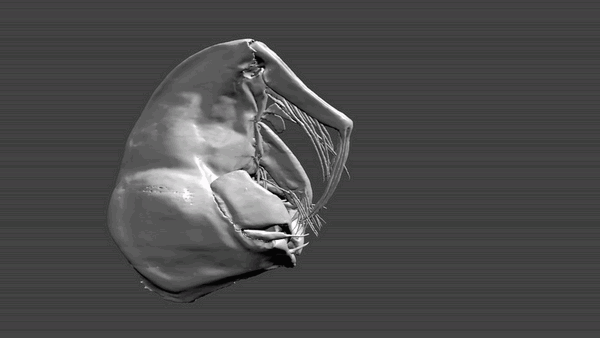
Scientists using high-speed video revealed a horror scene beneath the water's surface: the gruesome and deadly attacks carried out by glassworms — one of the fastest seen in animals. In the videos, you can see multiple-jointed mouthparts extending from the heads of these teensy creatures extended; Inside those mouthparts are branching structures that catch and hold squirming prey — even when the prey sprouted "teeth" from its neck.
Mantle blobs
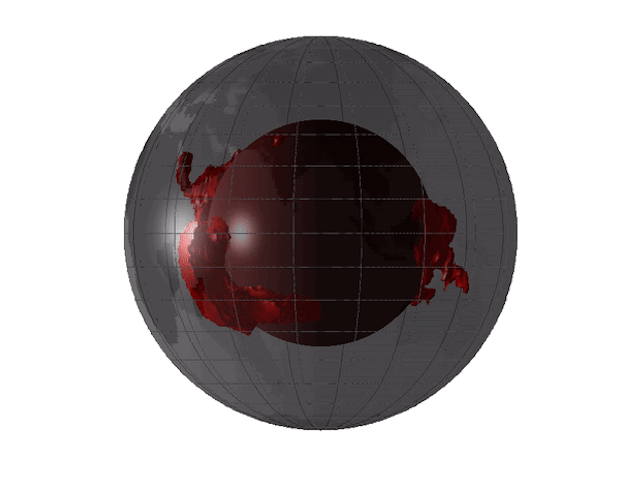
Meet the Blobs: Two continent-size mountains of hot, compressed rock hidden in the gut of the planet, deep beneath the crust. This year, the official news site of the American Geophysical Union, called Eos, revealed an unprecedented view of these so-called "blobs." One of these blobs lies beneath the Pacific Ocean, and the other is buried beneath Africa and parts of the Atlantic.
Glacier tongue
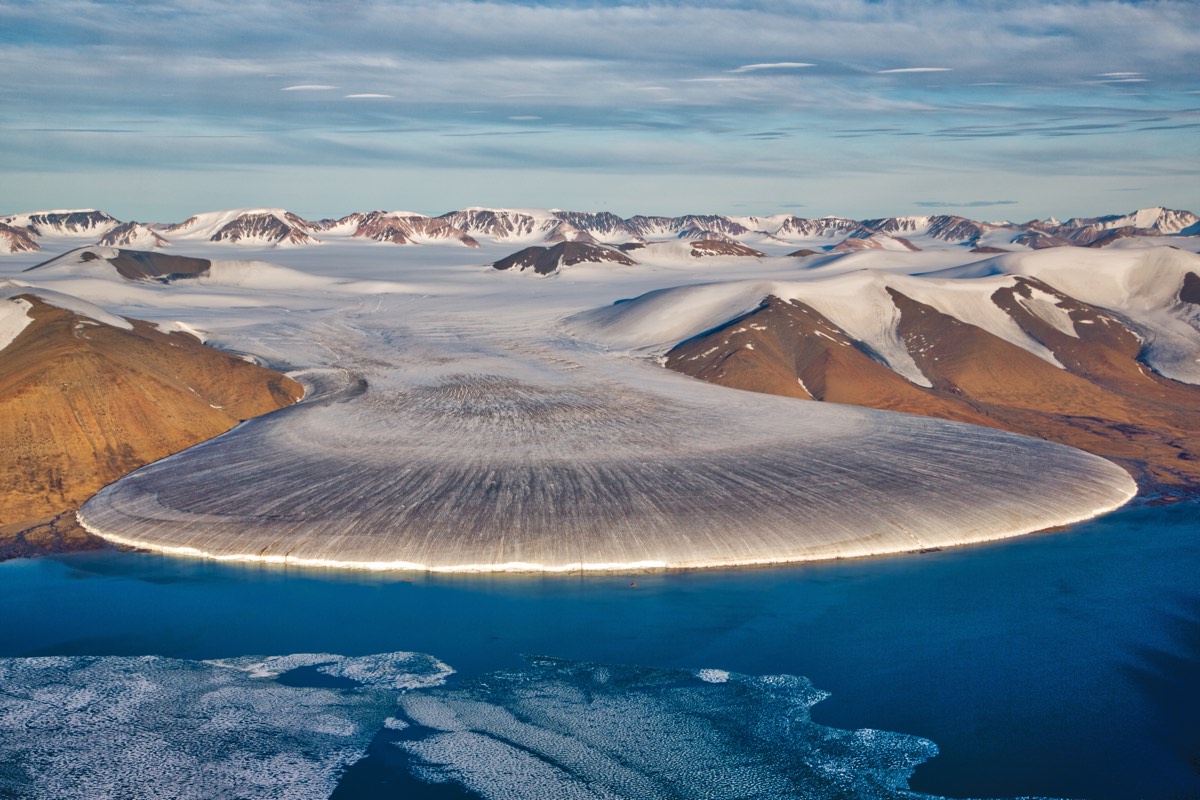
In a study out this year, researchers equipped with computer models looked at climate changes during the Quaternary period, which started around 2.59 million years ago and continues into today. They found that Earth has not undergone any such changes as rapid as those seen today. During the Quaternary, glaciers would have crept down from Greenland (shown here) to cover much of North America and northern Europe.
Deep-sea vent
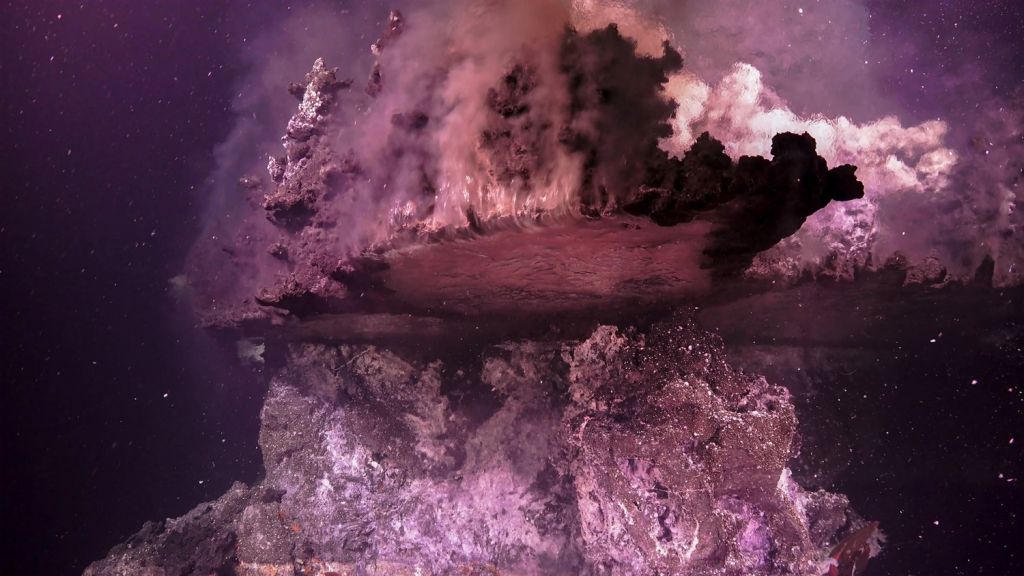
Here, hydrothermal fluid bubbles upward, gets trapped by a mineral ledge, and spills up and over the edge. That's just one scene scientists discovered deep in the Gulf of California this year. There, they found a fantastical expanse of hydrothermal vents, full of crystallized gases, glimmering pools of piping-hot fluids and rainbow-hued life-forms.
Alps glaciers
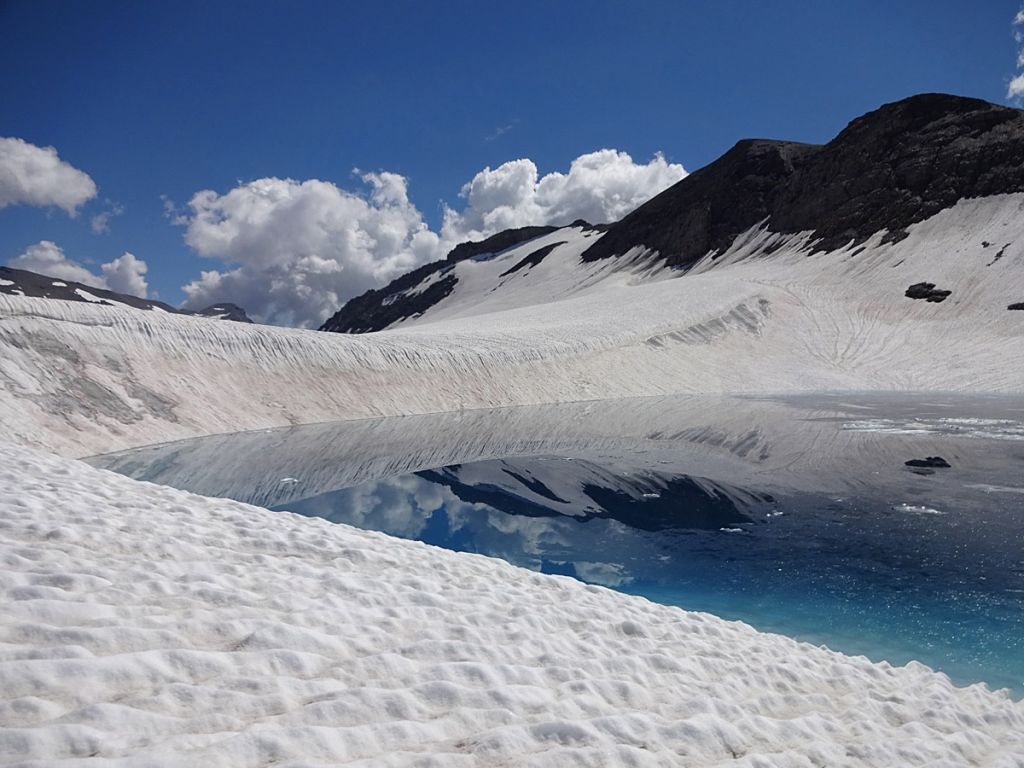
If human-caused global warming greatly increases over the next several decades, scientists say that the glaciers that cover the European Alps could disappear by 2100. Here, a supraglacial pond on Plaine Morte glacier, the largest plateau glacier in the European Alps.
Isopods devour alligator
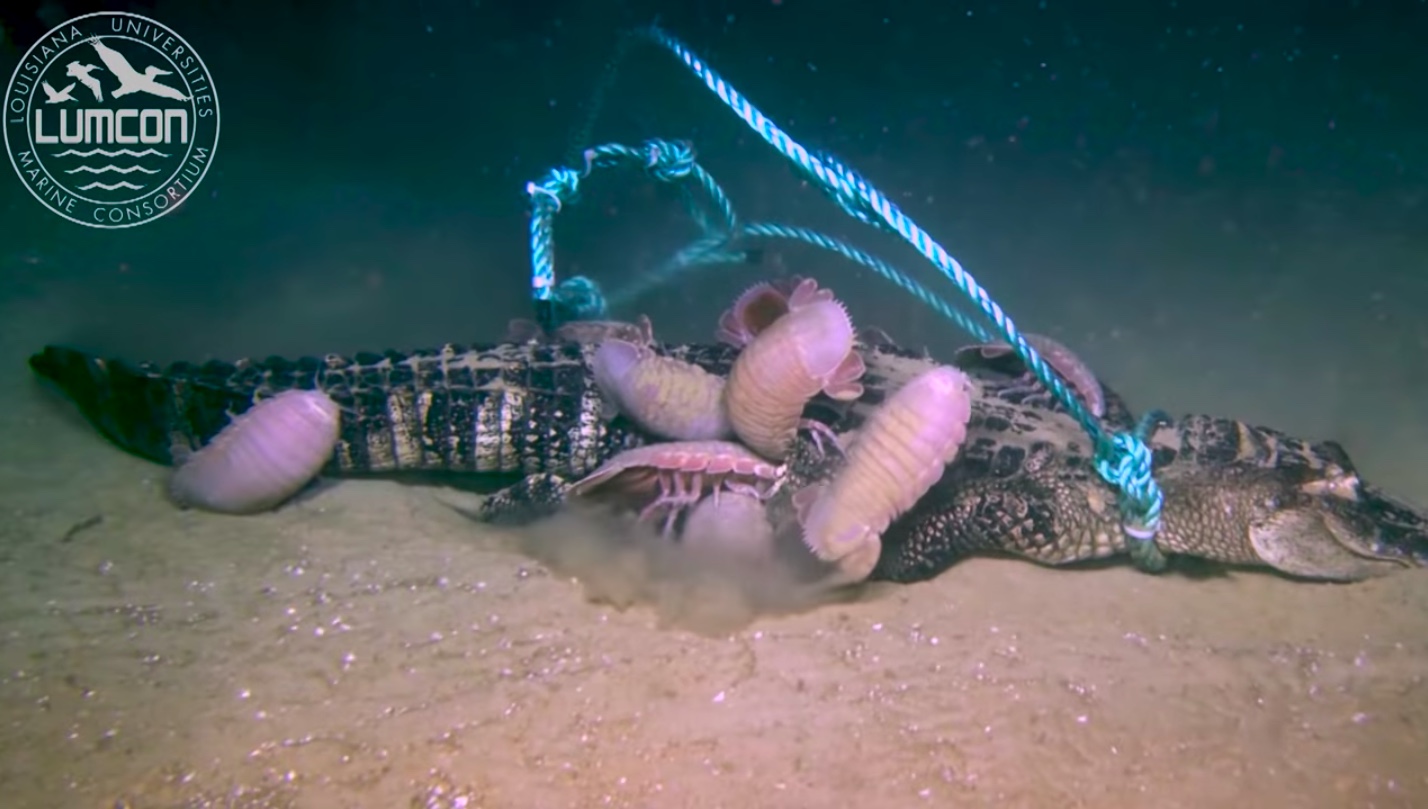
A creepy video released in April and fit for a scene from a horror flick shows nightmarish lobster-like "bugs" emerge on the seafloor of the Gulf of Mexico to attack the corpse of an alligator. Those football-size isopods (related to pill bugs) use their mandibles to break through the scaly skin and feed on the juicy insides.
First black hole image
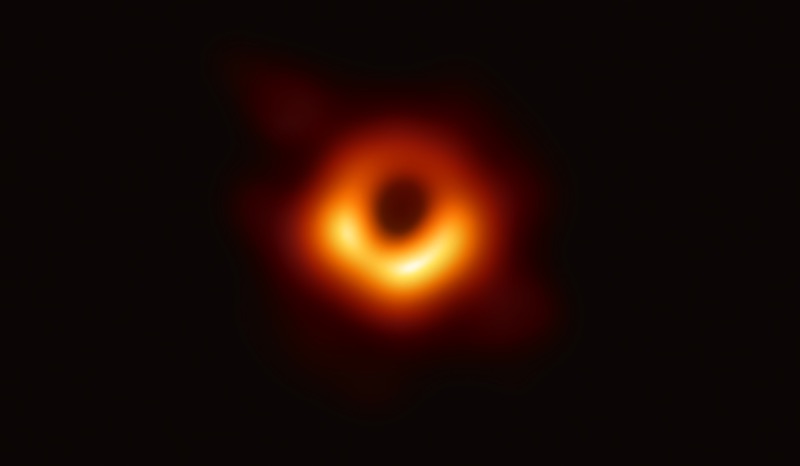
This image is "amazing" not so much because it's a "looker," but for the sheer scientific prowess that went into capturing it. In April, an international team of scientists released the first-ever close-up picture of a black hole (or, more technically, its shadow). The black hole called M87 lurks at the center of the Virgo A galaxy. The team spent 2 years trying to zoom in on M87's singularity. This image shows the contours of the black hole's event horizon, the point beyond which no light or matter can escape.
Balloon creature
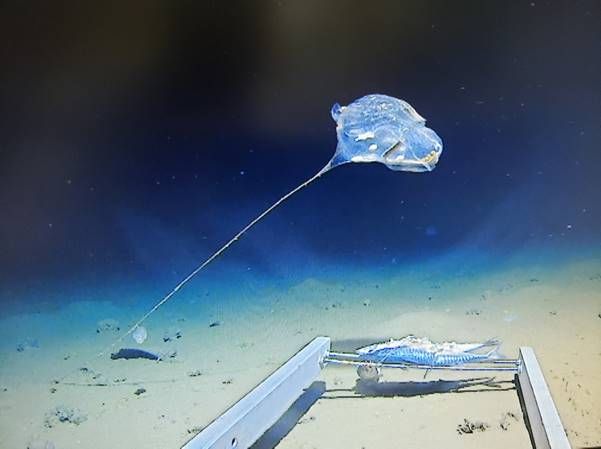
Balloon-y! A bizarre creature that looks a bit like a balloon on a string turned up this spring during a dive to the Java Trench in the Indian Ocean. "We were just watching the video back and saw the thing come out of the darkness," said Alan Jamieson, the chief scientist on the expedition and a senior lecturer at Newcastle University in the U.K. "It drifted right towards the camera... and then drifted off again." Jamieson thinks the gelatinous creature may be a new species of ascidian (also called a sea squirt).
Notre Dame burning

Paris' iconic Notre Dame cathedral caught fire this year, with part of the building's spire collapsing in flames. The cause of the fire has not been nailed down yet, but it could have been linked to ongoing renovation work on the building, according to a BBC report. The damage to the church, including the famous stained glass, was extensive.
Superbloom
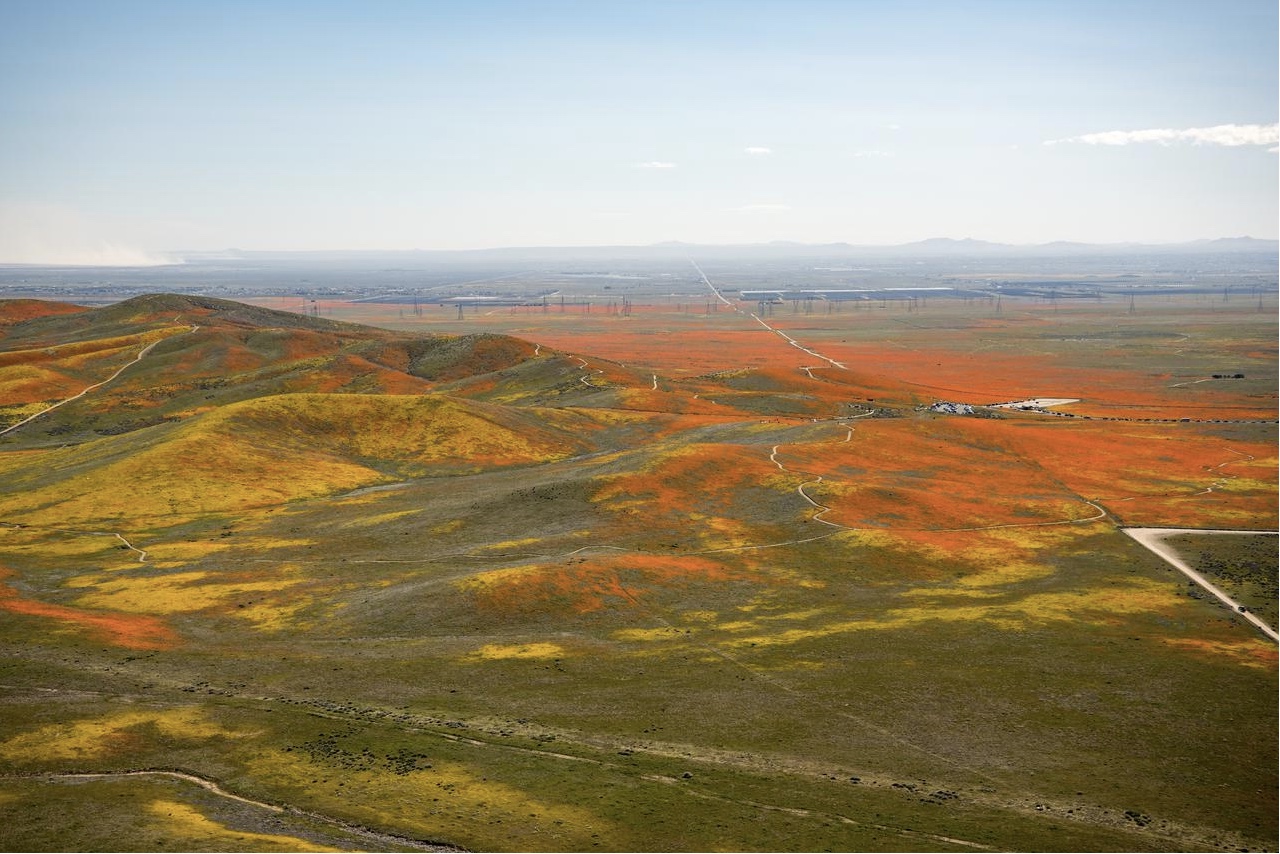
Wildflowers in orange and yellow hues blanketed Southern California's Antelope Valley this spring. And photographer Jim Ross — with NASA’s Armstrong Flight Research Center — captured a stunning aerial shot of the mosaic from a T-34 airplane on April 2. The spray of color is known as a “superbloom,” a phenomenon boosted by the year’s wet winter.
Cassowary
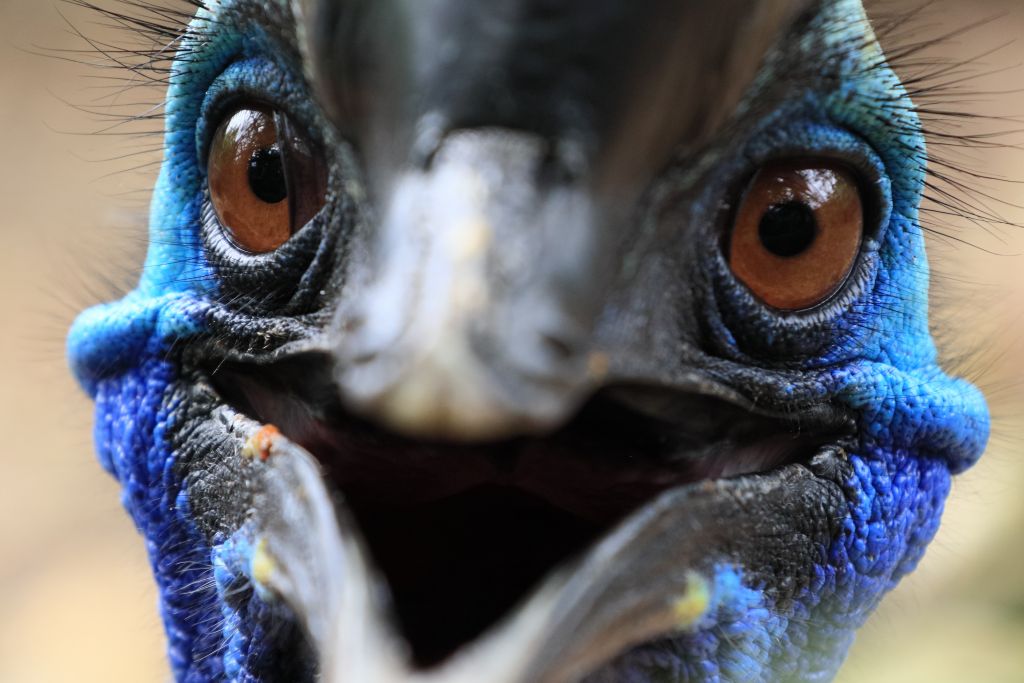
This spring, Florida-resident Marvin Hajos died after being attacked by one of his cassowaries — a giant, flightless bird native to Australia and Southeast Asia. Rescue workers reportedly found Hajos lying dead between two cassowary pens, perhaps having been attacked by a female protecting her eggs, the medical examiner said at the time. While the mug shot here does not show one of Hajos’ killers, it is the same type of bird. In fact, at the owner’s pre-mortem behest, the cassowary was put up for auction, along with about 100 other exotic animals on his estate.
Nightmare crab
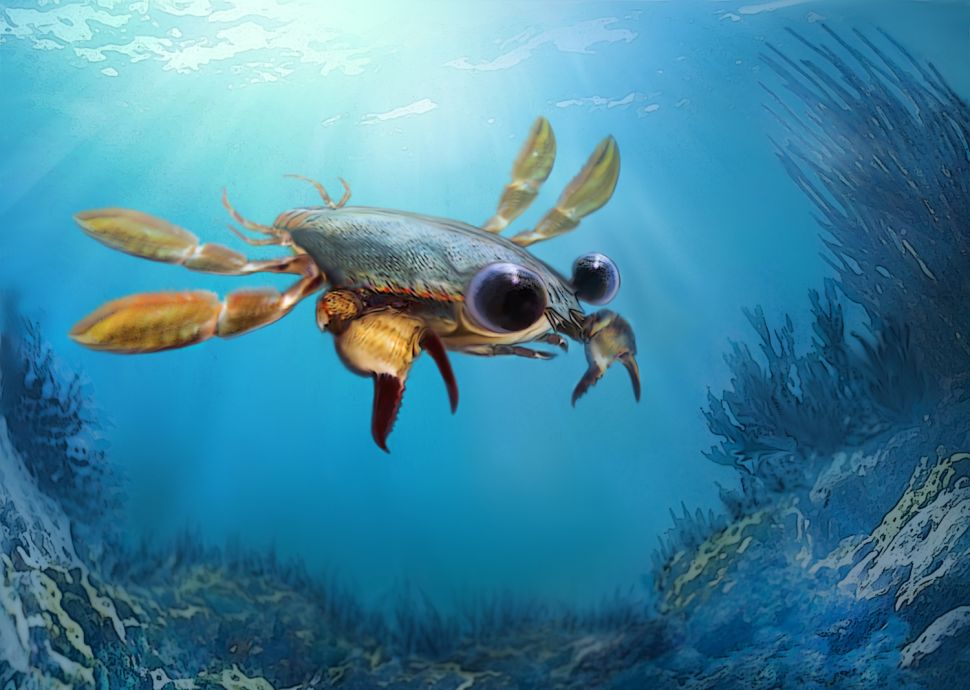
A newfound crab named Callichimaera perplexa, which means "perplexing beautiful chimera,” lived up to its name. The creature had a mouth of a shrimp, claws of a modern frog crab, the shell of a lobster and paddle-like appendages reminiscent of a sea scorpion. Oh yeah, perhaps lucky for us, this chimera is no longer alive, reaching its heyday more than 90 million years ago.
Solar flare
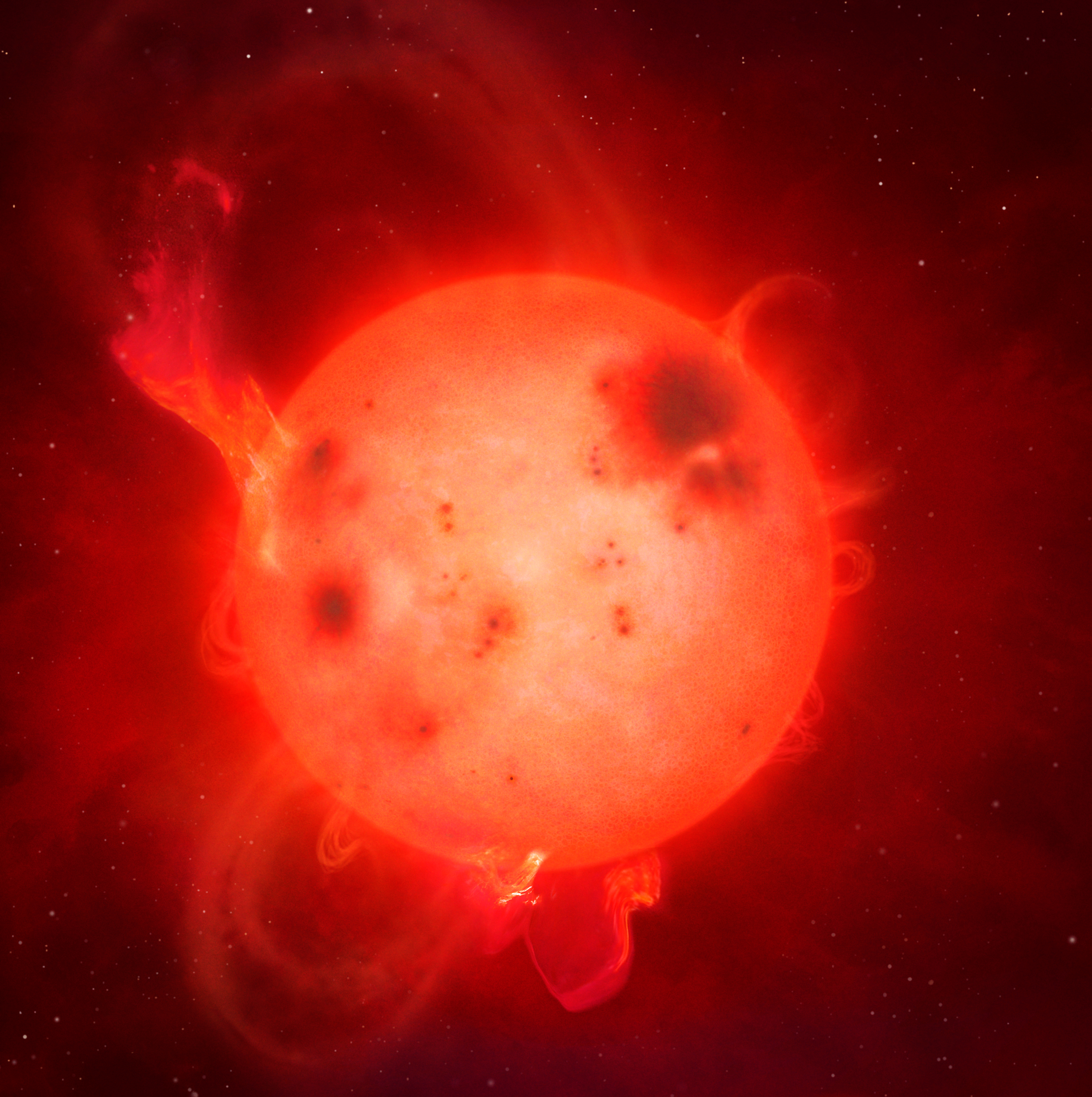
A powerful magnetic explosion erupted from a tiny star, astronomers reported this year. While stars do have tantrums of this sort from time to time, what caught scientists’ eyes was the fact that this star — residing some 250 light-years from us — is the coolest and smallest star known to emit such a rare white-light superflare. This type of superlare describes a sudden eruption of magnetic energy that unleashes huge quantities of radiation. Here, an illustration of this mega eruption.
Cracked moon
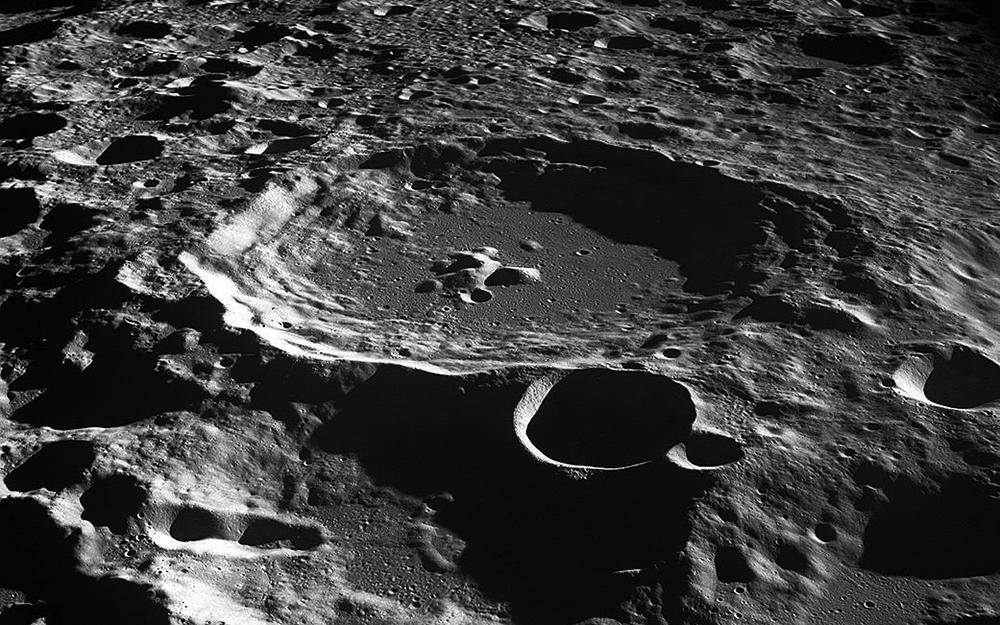
This glamour shot of the Daedalus Crater on the far side of the moon made its way online this year (it was captured during the Apollo 11 mission) to illustrate that the moon is, indeed, all it’s cracked up to be … and more. A new analysis of our moon’s surface revealed it is far more fractured than anyone thought. The researchers found that cracks from asteroid impacts extend to depths of 12 miles (20 kilometers). Using computer simulations, the team found that a single asteroid impact could fragment the lunar crust into blocks about 3 feet (1 meter) wide, opening surface cracks that extend for hundreds of kilometers.
Peru forest disappearance
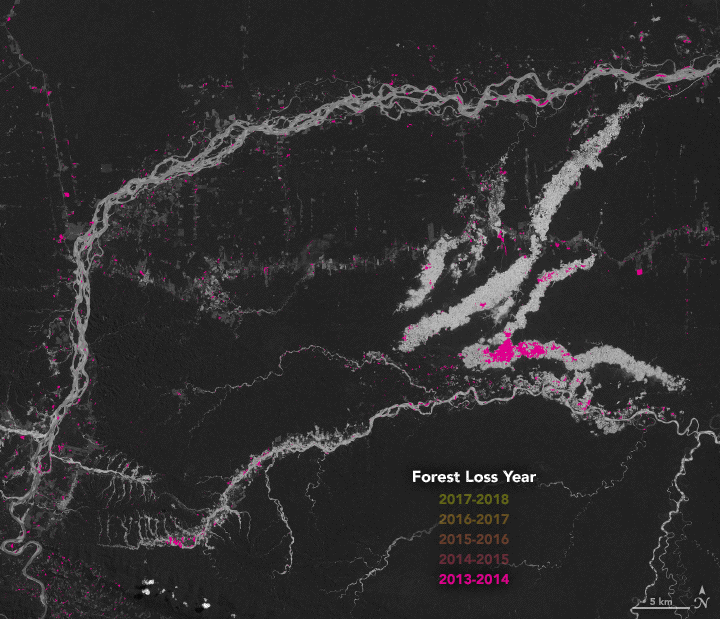
In the “sad but pretty” category, NASA’s time-lapse animation showing the disappearance of Peru’s forests from five years of satellite observations does make an impact. The animation focuses on the devastating depletion that took place between 2013 and 2018 in the forests of southeastern Peru's Madre de Dios region.
Ancient millipede
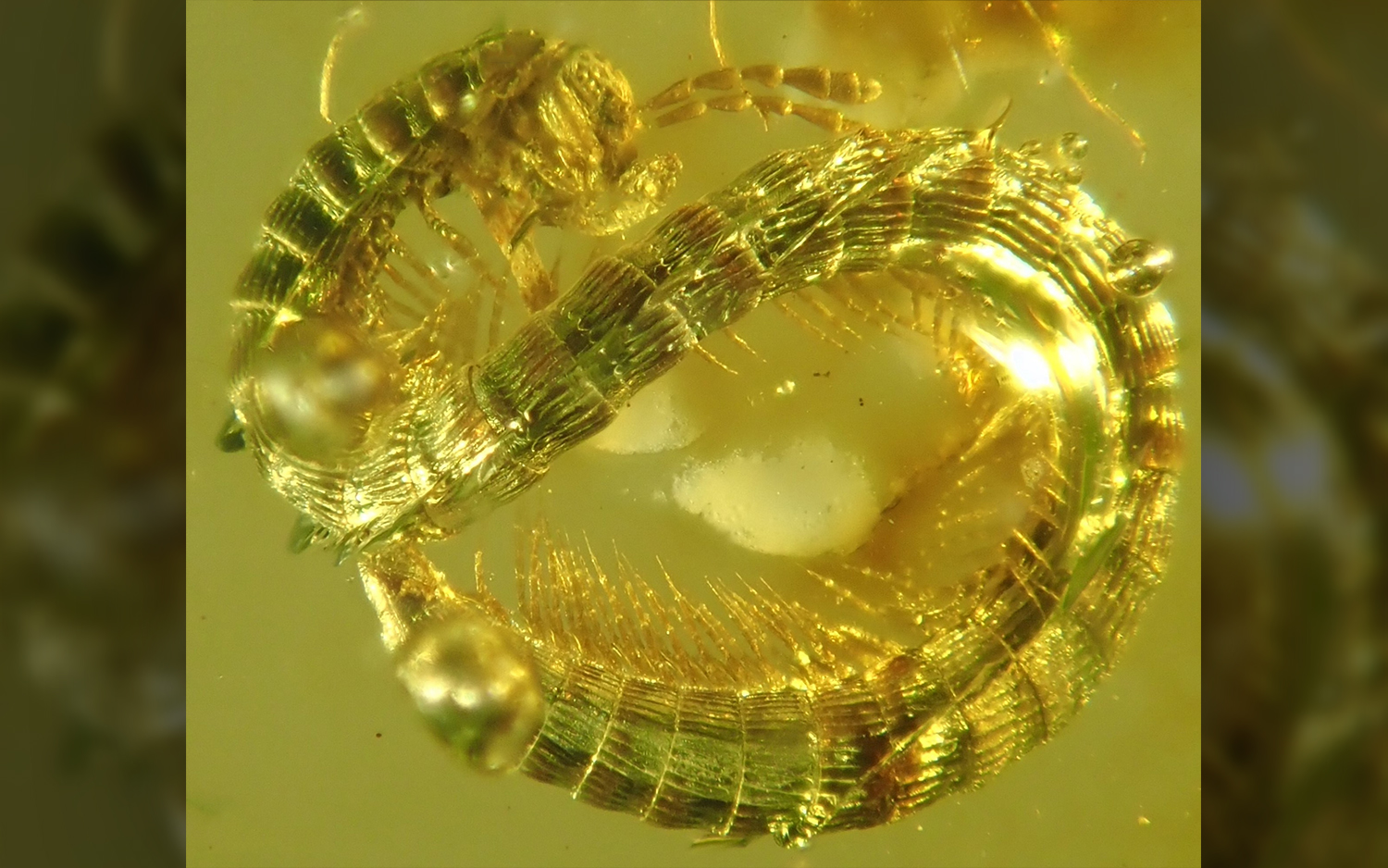
About 99 million years ago, a Cretaceous millipede scampered over the forest floor in what is now Southeast Asia, avoiding being squished by neighboring dinosaurs. But the millipede, now called Burmanopetalum inexpectatum, did stumble into a sticky patch of sap, said researchers who found the tiny corpse entombed in the hardened form of that sap called amber.
3-eyed snake
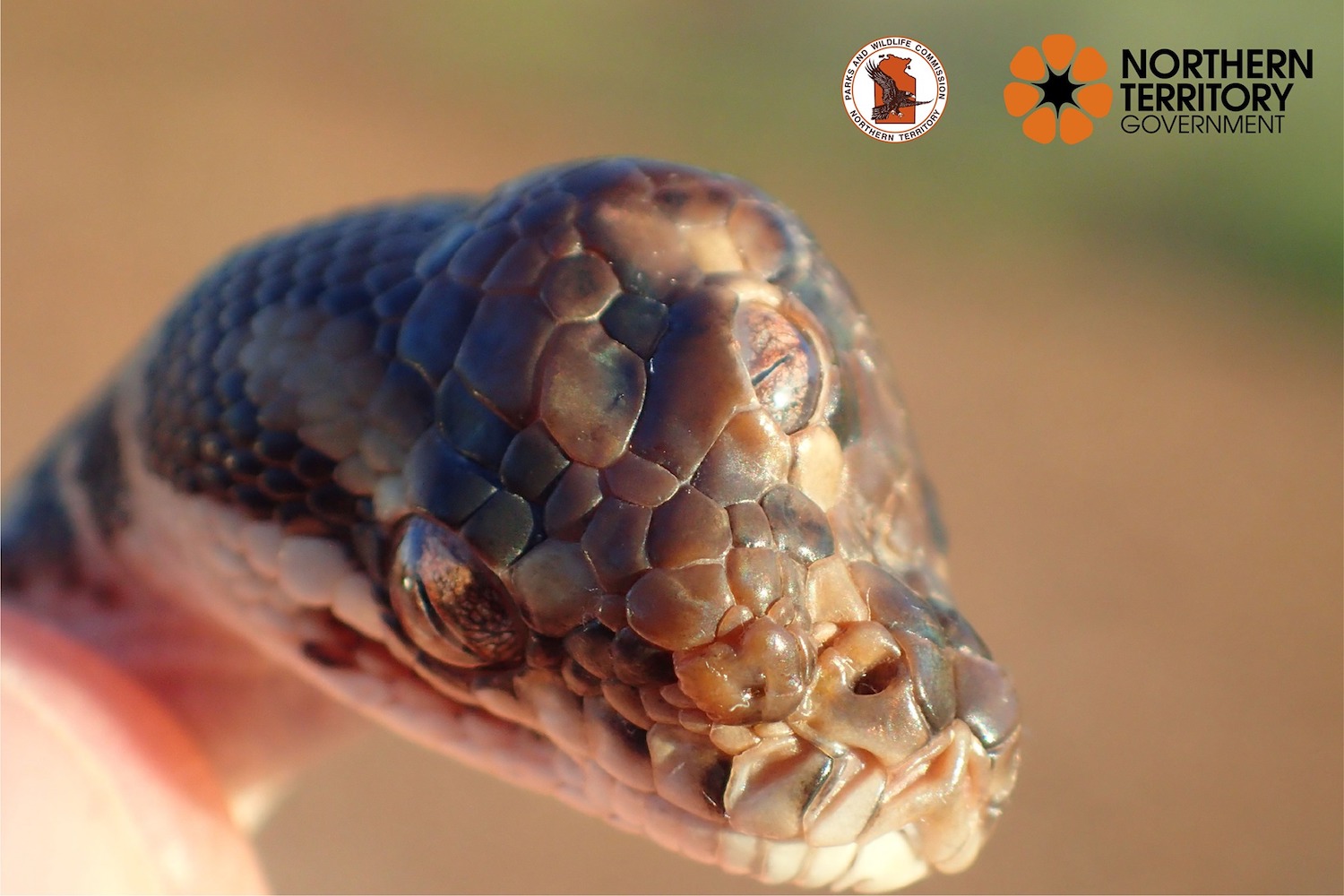
Rangers in Australia could hardly believe their eyes this year when they spotted a wild carpet python snake with not two but three functioning eyes. The condition of having a third eye on the forehead is extremely rare, a biologist told Live Science about the snake case.
Milk ducts
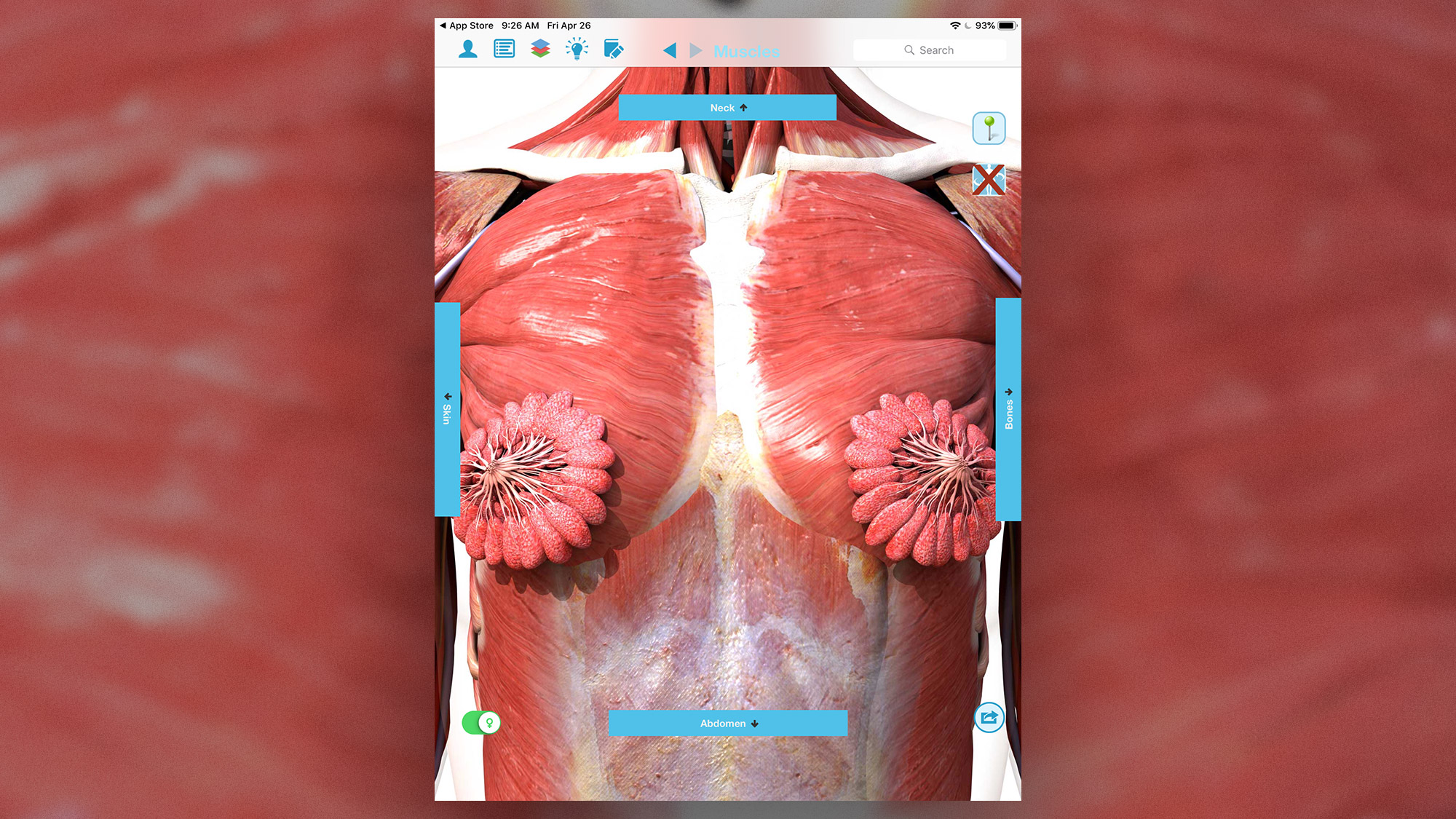
An illustration of seeming “flower petal” milk ducts went viral this year on Twitter. But alas, the image is not an accurate portrayal of a woman’s mammary glands. The most glaring error in the image, which was created with an iPad app called Anatomy & Physiology, is that it shows skeletal muscles; a woman’s breasts don’t contain skeletal muscles, though some parts have circular or smooth muscle in place.
Slingshot spider
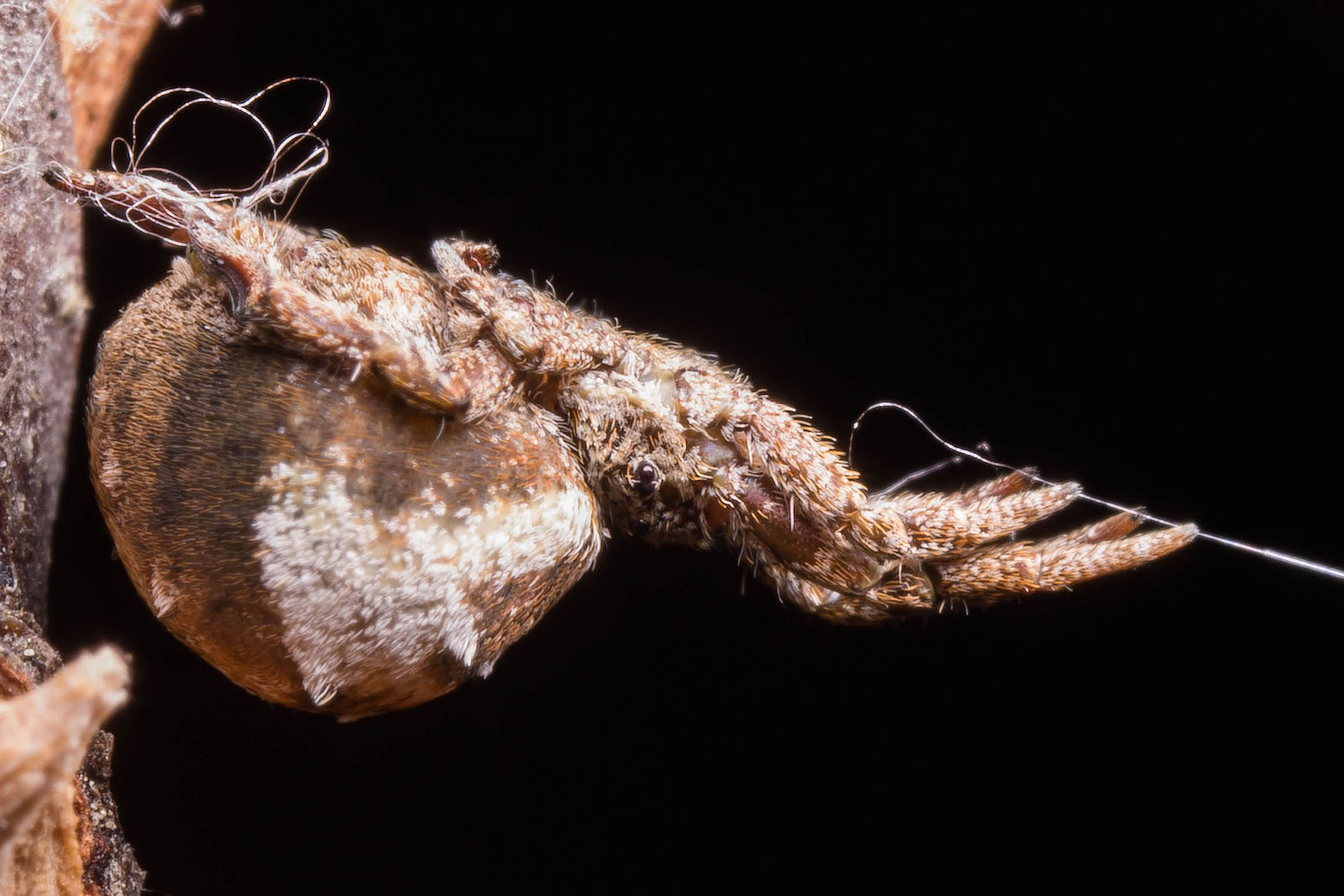
The triangle weaver spider (Hyptiotes cavatus) is now the only known creature, besides humans, to employ a catapulting strategy known as "external power amplification, a new study out this year found. Once prey lands in this spider’s web, the arachnid releases silk at its back leg, which is the rear anchor line; then it (and the web line) shoots forward with alarming speed to ensnare its next meal. [The web catapult is pretty intricate and wild if you want to read more about it.]
Great white shark
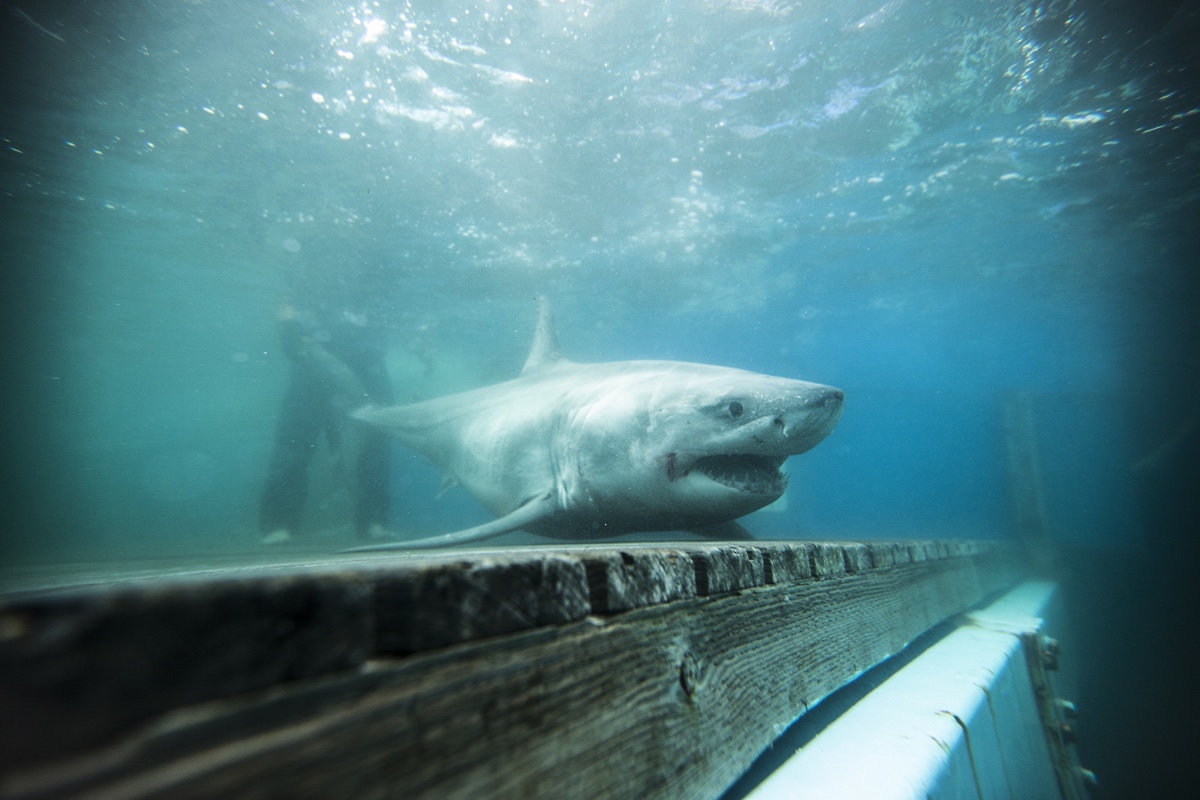
A great white shark thought to have entered Long Island Sound (a potential first for great whites) may not have been there at all, Live Science reported in May. OCEARCH scientists had outfitted the great white shark dubbed Cabot with a tracking device in 2018 off Nova Scotia. Then this spring, the 9-foot-8-inch-long (nearly 3 meters) male shark’s dorsal fin tag pinged a location that appeared to be off the coast of Greenwich, Connecticut. However, a day later the ping showed the shark was far outside the Sound.
Face mites
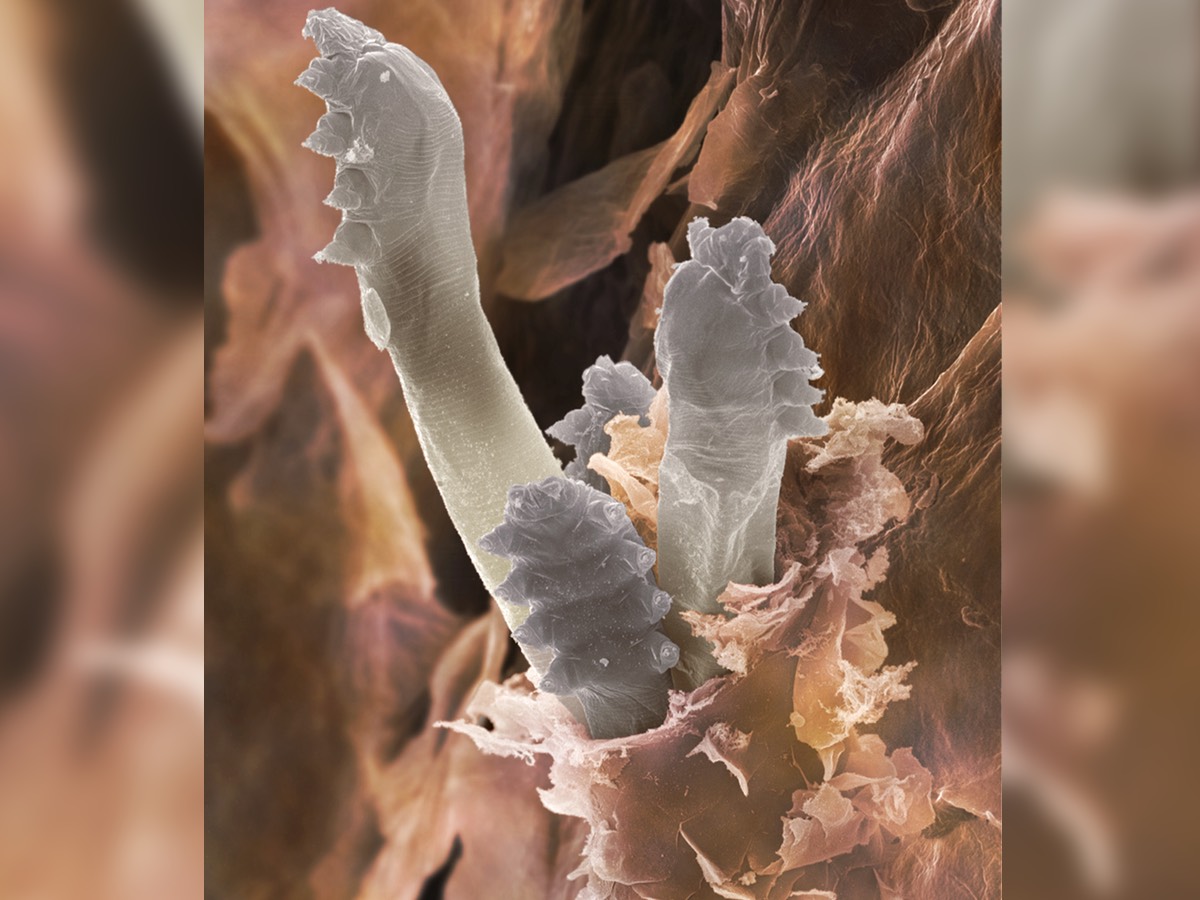
We found out this year just what’s living on our face: Dozens of Demodex mites are burrowing head-first inside the pores at the bottom of hair follicles lodged in your face. The tick-like arachnids gorge themselves on the natural oils inside those pores. And the public media organization KQED San Francisco created a brilliant video showing a zoomed-in look at the face-feast.
Albino panda
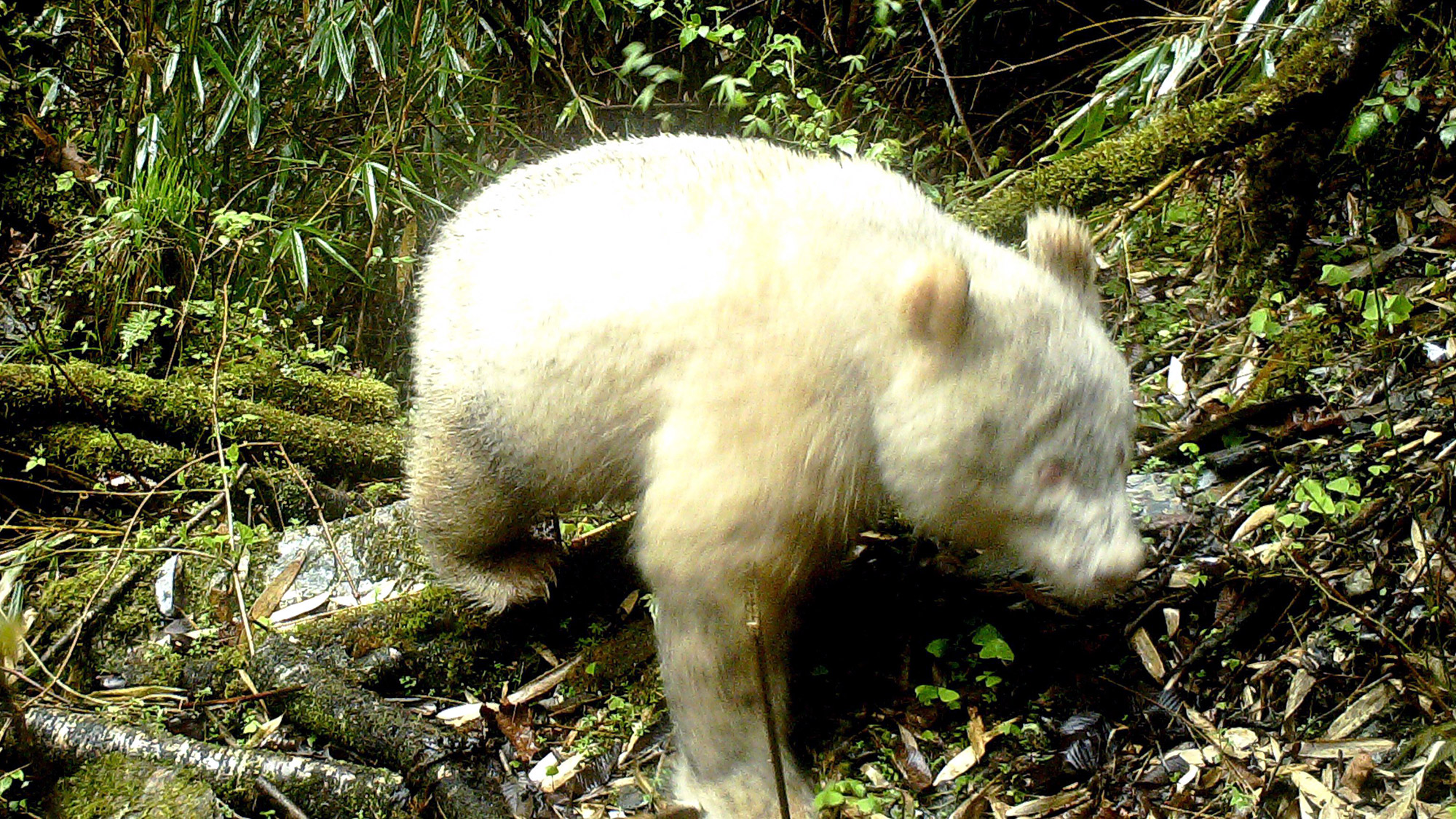
The world got its first glimpse at a wild albino panda this year. The stunning all-white, red-eyed furball was captured on camera while tramping through a bamboo forest in China.
Creepy, invisible teeth
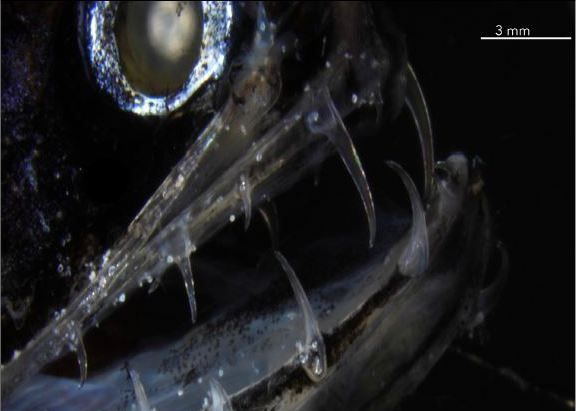
They may be wee — just 6 inches (15 centimeters) long — but dragonfish are fearsome, at least for the teensy sea life they call prey: The fish sports “massive” jaws lined with nearly transparent, razor-sharp teeth. Scientists this year figured out how the glow from the fish’s body doesn’t light up its clear teeth to tip off potential meals. When they looked at the chompers under an electron microscope, the researchers found an array of grain-size nanocrystals speckled across each fang's enamel; those specks keep light from reflecting off its open jaws.
Volcano shadow
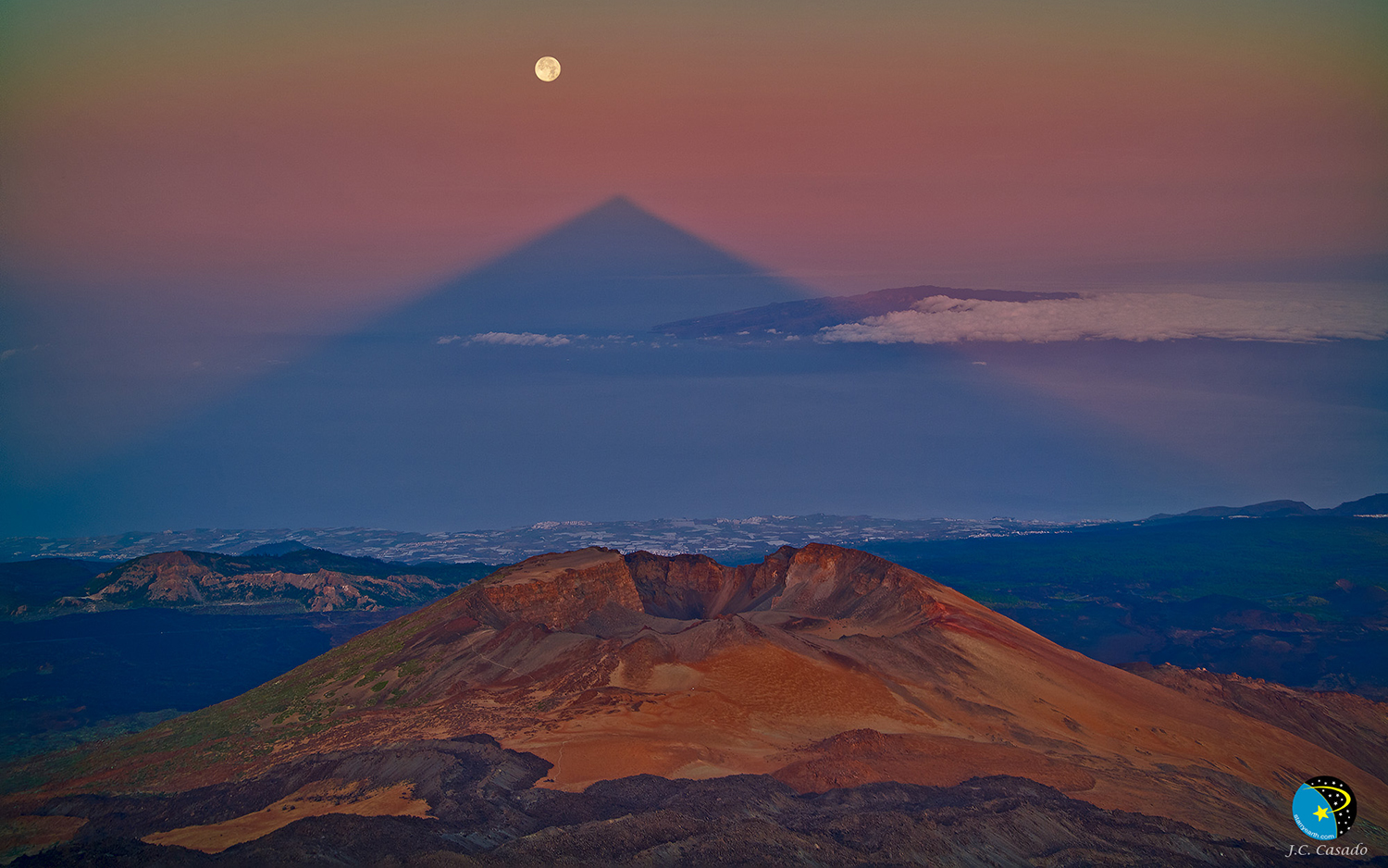
Something odd stands out in this image captured by photographer Juan Carlos Casado: The flat-topped peak of a dormant volcano in Spain’s Canary Islands casts a shadow that forms a perfect triangle. The volcano, called Mount Teide or Pico de Teide, towers some 12,000 feet (3,700 meters) above sea level on the island of Tenerife.
Permafrost melting

Research out this year finds that permafrost across the globe is melting at an alarming rate. For instance, layers of permafrost in the Canadian Arctic that were expected to remain frozen for at least 70 years began thawing. Here, melting permafrost on the Jamal region of Russia.
Glowing tears
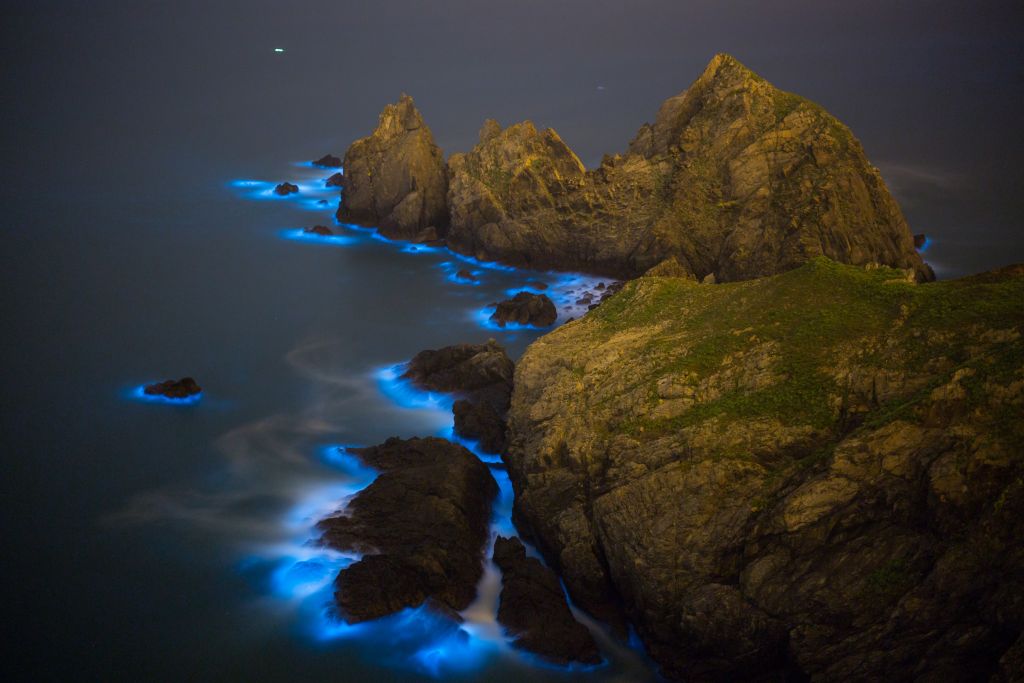
China’s “blue tears” are not streaming from people’s eyes, but rather created by a bloom of toxic bioluminescent creatures called dinoflagellates. And their toxic “tears,” which create a beautiful glow in the waters of the East China Sea, are growing bigger every year, researchers found.
Antarctica seal
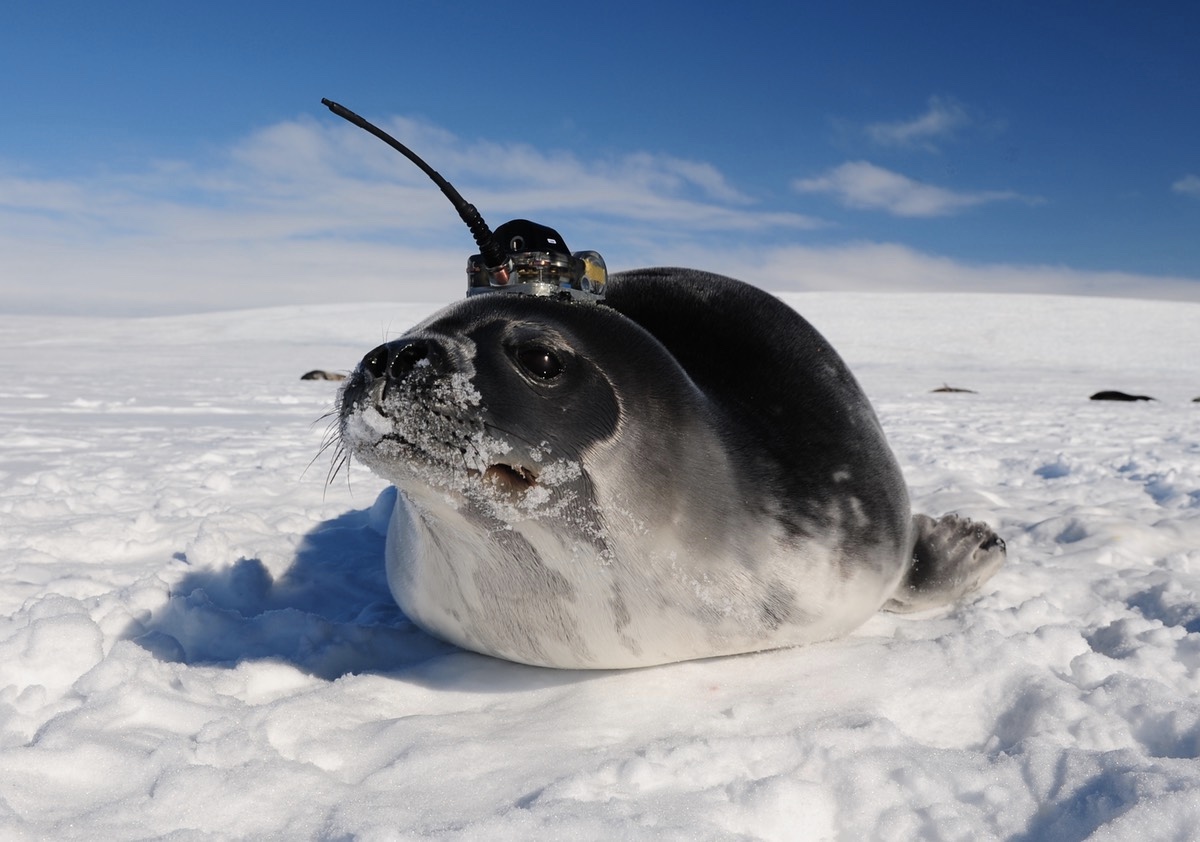
Scientists equipped seals in Antarctica with satellite tags, so they could collect data on water conditions there beneath the chilly continent’s ice. With the help of these seal scientists and floating robots, the researchers hoped to figure out why enormous holes have been popping up sporadically in Antarctica’s winter ice pack since the 1970s. Added bonus: Darling seals!
Moon anomaly
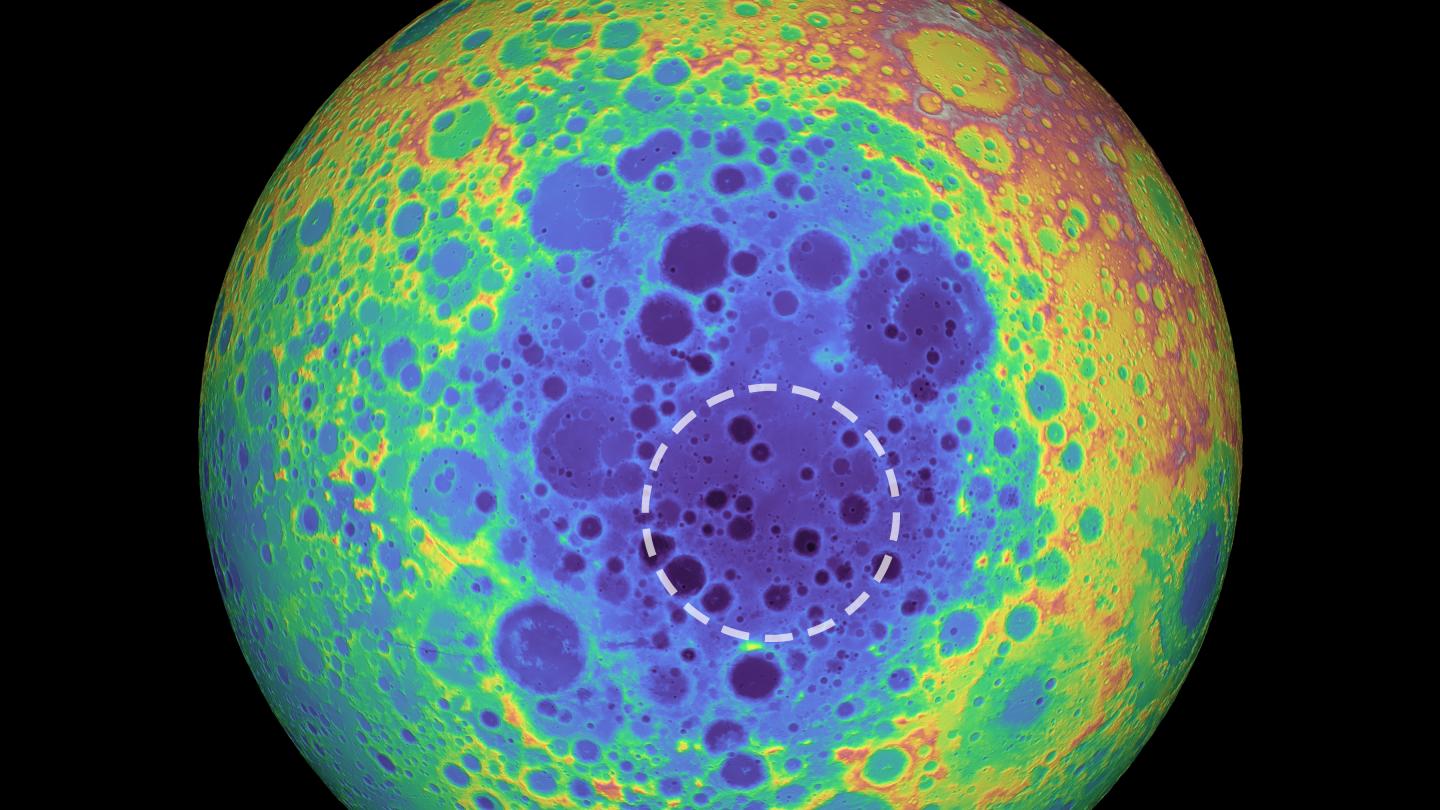
Deep below the lowest point of the biggest crater in the solar system (the moon's South Pole-Aitken basin, shown in blue in this false-color topographic map), scientists discovered an "anomaly" of heavy matter about the size of Hawaii (circled). That gargantuan anomaly could be the remnants of a 4-billion-year-old asteroid.
Giraffe baby
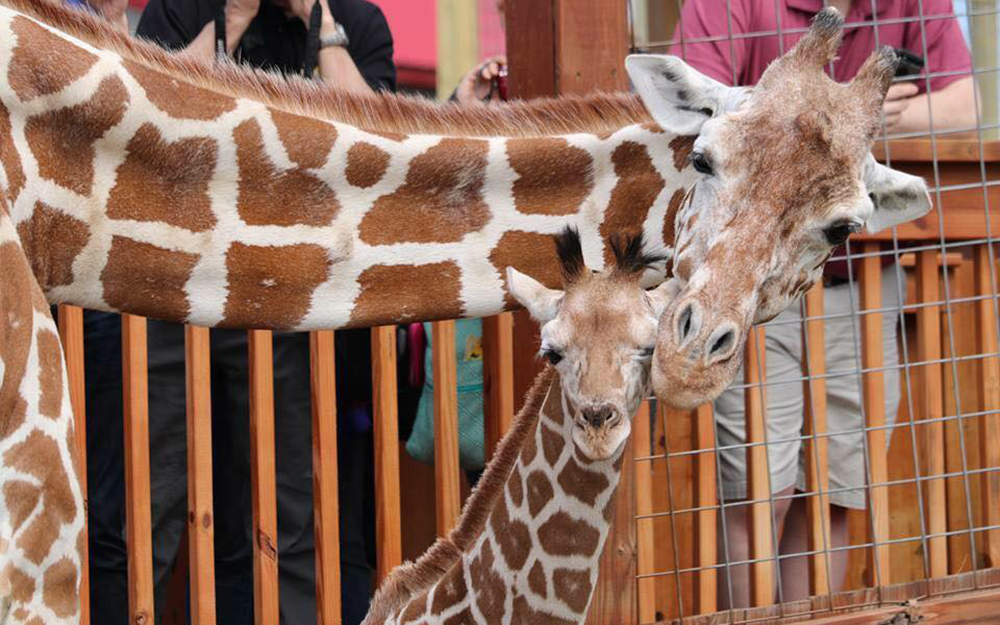
On March 16, the Internet famous giraffe April had another calf! After giving birth under the prying eyes of thousands of fans across the globe (yes, it was livestreamed) in 2017, April had her fifth calf, named Azizi. And that will be her last, as the park where she lives announced April would begin taking contraceptives this past summer.
Sparkling DNA

Rather than a kaleidoscope of glowing ice-cream sprinkles, this image is an unfettered and detailed view of the exact locations of DNA and RNA inside a living cell. Each glowing dot represents an actual cell. The new method, called DNA microscopy, that provided this glorious peek inside our cells took six years to develop, said the researchers who revealed the imaging this year.
Space atlas
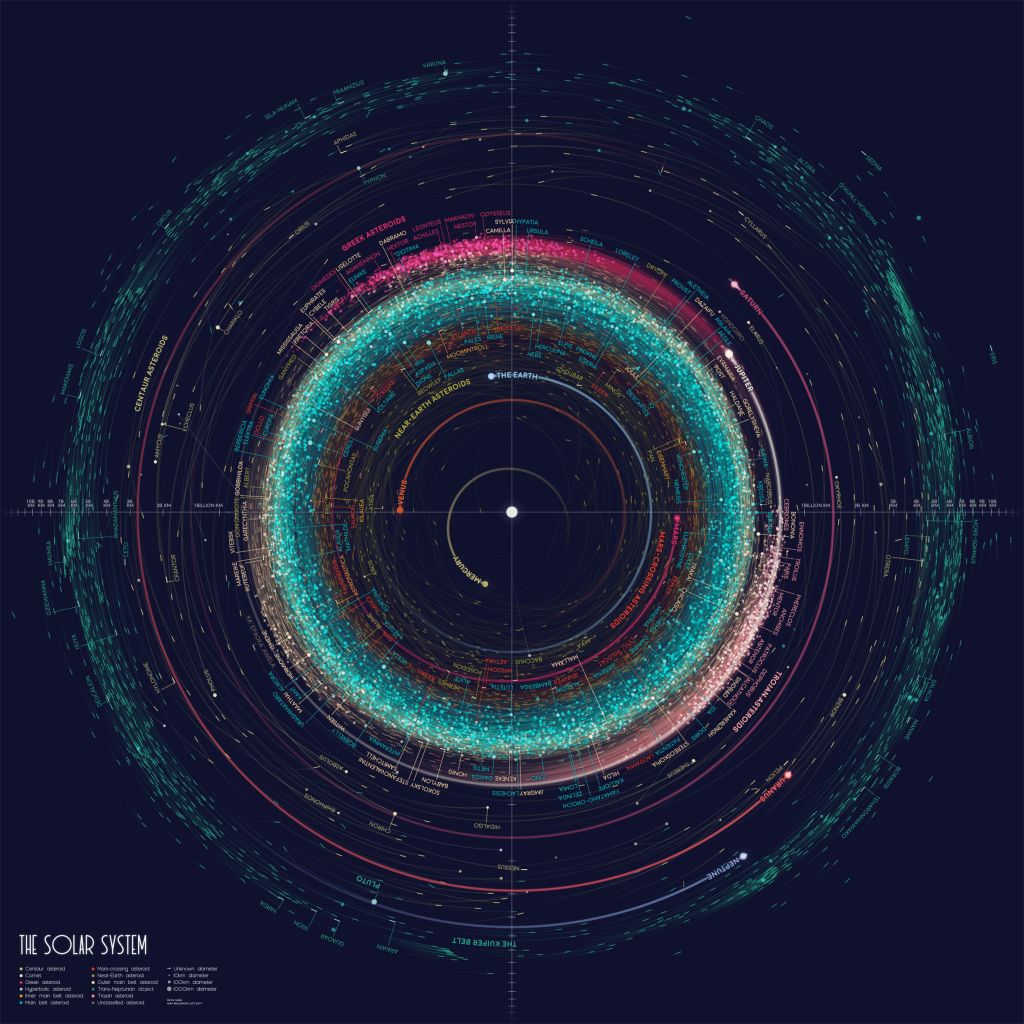
Biologist Eleanor Lutz unveiled this amazing map of the solar system showing the precise orbital paths of more than 18,000 near celestial objects. With such incredible detail, this guide brings to light the asteroid belt between Mars and Jupiter and the Kuiper Belt beyond Neptune.
Greenland sled dogs
Set out to recover #climate monitoring stations on #seaice, warm days, Inglefield Fjord #Greenland 13 Jun. Could not push through here, but made it before breakup days later. Back @DMIdk, huge thanks to the team; Ângît, Paulus, Aksel, @BG10BlueAction @ICEARCEU @SalienSeas #H2020 pic.twitter.com/eGvfoTg7gCJuly 5, 2019
Sled dogs waded through water in Greenland on June 13, part of an expedition that was forced to turn around due to anomalous early ice melt. In fact, even two days before summer started there, scientists sounded the alarm about stunning ice melt in Greenland.
Raikoke volcano
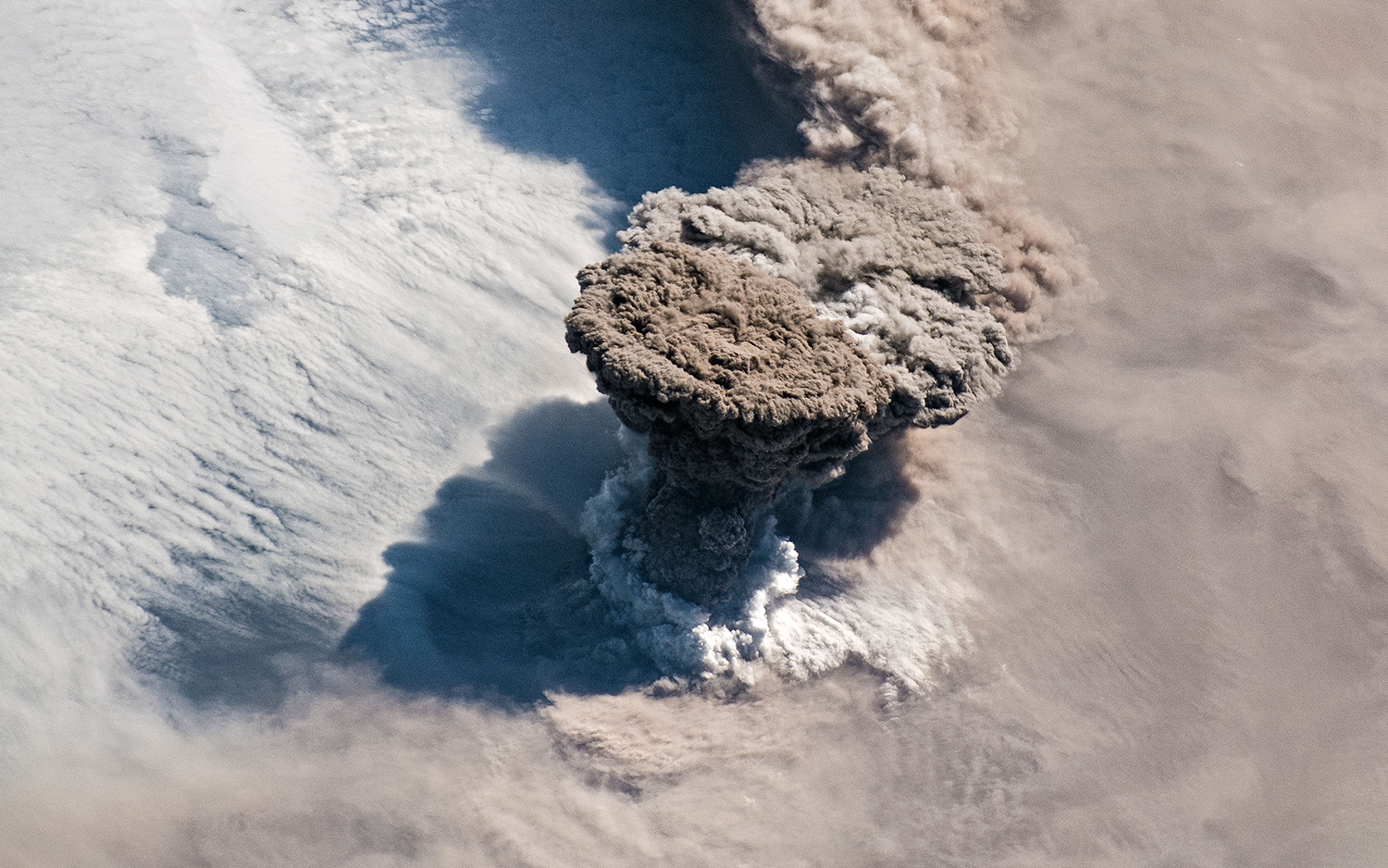
The Raikoke volcano blew its top on June 2, the first time since 1924 when it had last erupted. An astronaut aboard the International Space Station captured a spectacular view of a towering mushroom-shaped cloud of ash and smoke that rose from the volcano on an island in the Pacific Ocean.
Astronomy photo contest

In this award-winning photo by Alexander Stepanenko, a majestic, bird-shaped aurora spreads its wings over a destroyed military hydroelectric station outside of Murmansk, Russia. This image and other spectacular skyscape beauties were shortlisted this year for the Astronomy Photographer of the Year contest, organized by the Royal Observatory, Greenwich in the United Kingdom.
Astronomy photo contest

Australian photographer Steven Mohr also made it into the shortlist for the Royal Observatory’s the Astronomy Photographer of the Year contest for this “Running Man Nebula” image. He captured the sparkling nebula from Carapooee, Victoria, Australia, as it lurks in the constellation of Orion, located some 1,500 light years from Earth.
Eclipse and hurricane
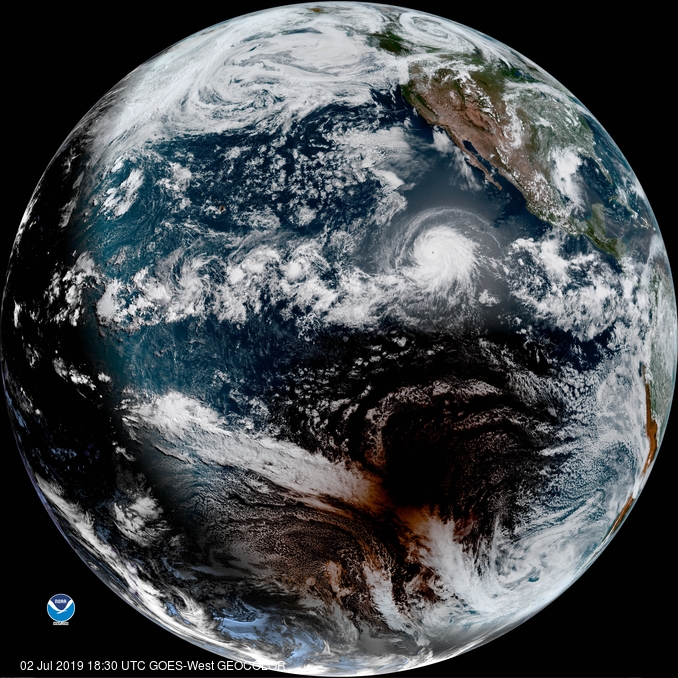
The moon's shadow passes south of Hurricane Barbara during the total solar eclipse of July 2, 2019, In this photo captured by the NOAA/NASA GOES West satellite, the moon’s ragged shadow can be seen passing south of Hurricane Barbara during the July 2 solar eclipse.
Sea star butt
Saw a thicc ass starfish at the aquarium today 😌 pic.twitter.com/NwF0xYabHQJune 30, 2019
This Vermilion sea star (Mediaster aequalis) gained internet fame for a body part that isn't usually associated with starfish: a shapely rear end. In her sweet photo, Twitter user @Babyshoujo snapped the “thicc” starfish as it clung to a rock in an exhibit at the Aquarium of the Pacific in Long Beach, California. What’s the verdict? Cute?
SoCal quake
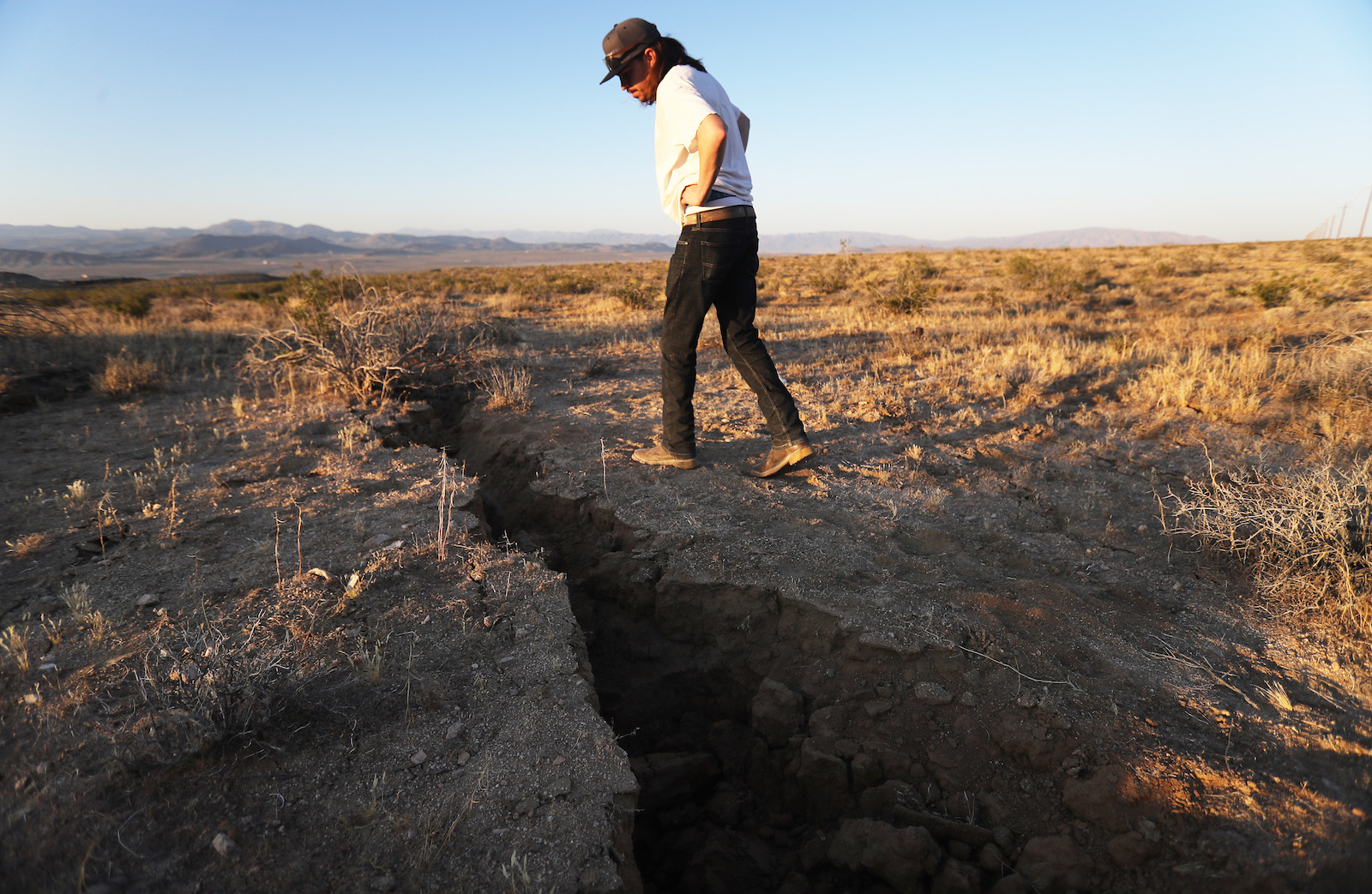
A stark image illustrates the power of a 6.4-magnitude earthquake that rumbled through Southern California on July 4 — the biggest to rattle SoCal in 20 years. Here, a man inspects a crack in the Earth near Ridgecrest in the Mojave Desert.
Python swallows
An olive python had its way with … a crocodile this year! The grisly feat, in which an olive python (Liasis olivaceus) scarfs down an Australian freshwater crocodile (Crocodylus johnstoni) was captured in all its glory near Mount Isa in Queensland by kayaker Martin Muller.
Dark Sky parks

Located on the Colorado Plateau in southeastern Utah, Natural Bridges National Monument comprises ]three huge natural bridges donned with Hopi names: "Owachomo" meaning "rock mounts" (shown here); "Sipapu" meaning "place of emergence;" and "Kachina" meaning "dancer." The nighttime sky there is so spectacular that it was made the first IDA-designated dark sky park.
Split sunset
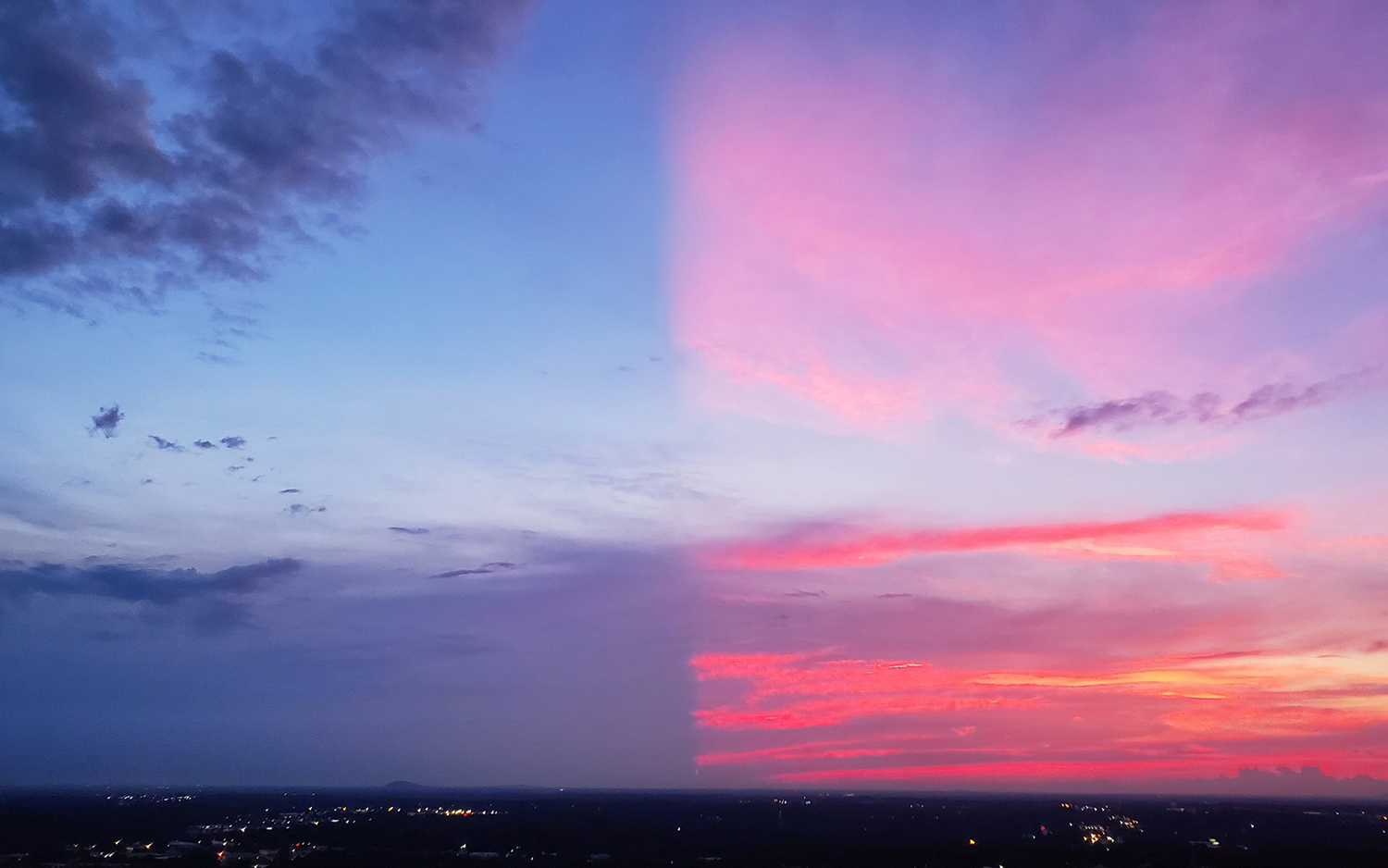
Have day and night collided? Sort of. Viewers on social media this summer were stunned by an unusual optical effect that made a sunset image shared by Uma Gopalakrishnan from North Carolina resemble a split-screen image of two different skies side by side. While the bright colors of the sunset cover half the sky, a large, distant cloud below the horizon shadows the other half.
Crystal tardigrade
Guess what I've got in my tummy? #Waterbear collected in a moss on the banks of the river Saja. #Tardigrades from Cantabria.Rafael's answer: aragonite crystals pic.twitter.com/iSZoixQf5FJuly 14, 2019
AAAHHH, a pudgy, wriggling tardigrade. Does it get any better? Yep, the little guy is shimmying around under a microscope with something weird in its belly. Biologist Rafael Martín-Ledo used phase contrast microscopy to capture the most minute details of this water bear, including its stylets — a pair of food-piercing structures flanking its mouth — as well as a treasure inside its belly — chunks of a strange crystal. What is it?
Piglet squid
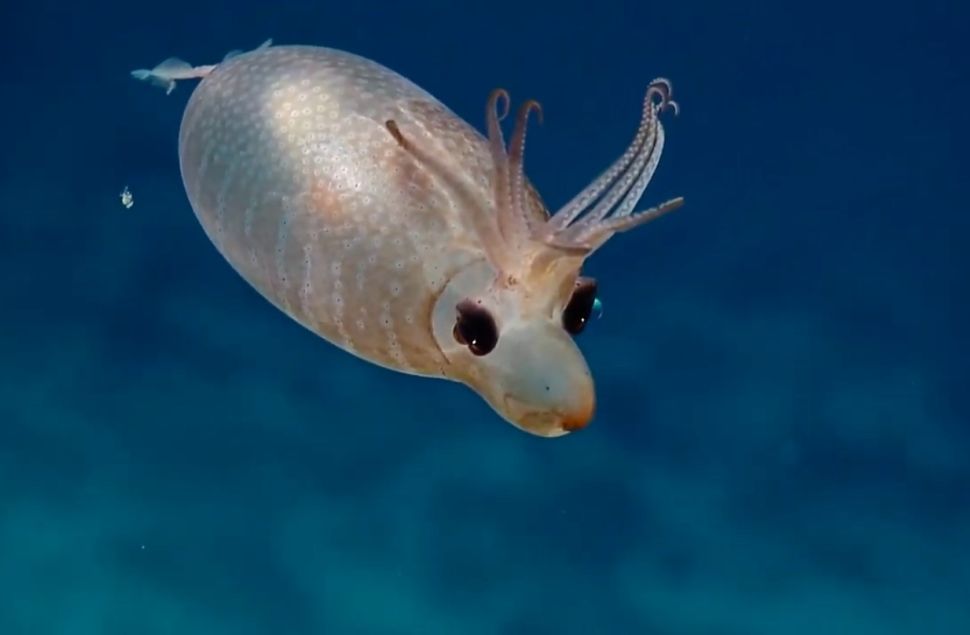
Animal cuteness abounded this year. Take this piglet squid. Marine scientists released a stunning video in July showing the cephalopod — tentacles donning its head — floating along in the central Pacific Ocean near Palmyra Atoll. The amazement of the scientists who spotted the creature while aboard the exploration vehicle (E/V) Nautilus could be heard on video: "What are you?" one of the voices in the video asked about the sweet-looking creature. "Is that a squid? I think it's a squid. It's like a bloated squid with tiny tentacles and a little hat that's waving around. And it looks like it's got a massive, inflated mantle cavity. I've never seen anything quite like this before."
Radio halo

For the first time, astronomers this year clearly detected a radio halo surrounding a galaxy, in particular, NGC 4565. The spiral galaxy is about 38.8 million light-years away; its angelic ring is the result of massive supernovas sending high-energy particles outward to the fringes of the galaxy. These speedy particles release radio waves that form rings around their home galaxy.
ISS-sun
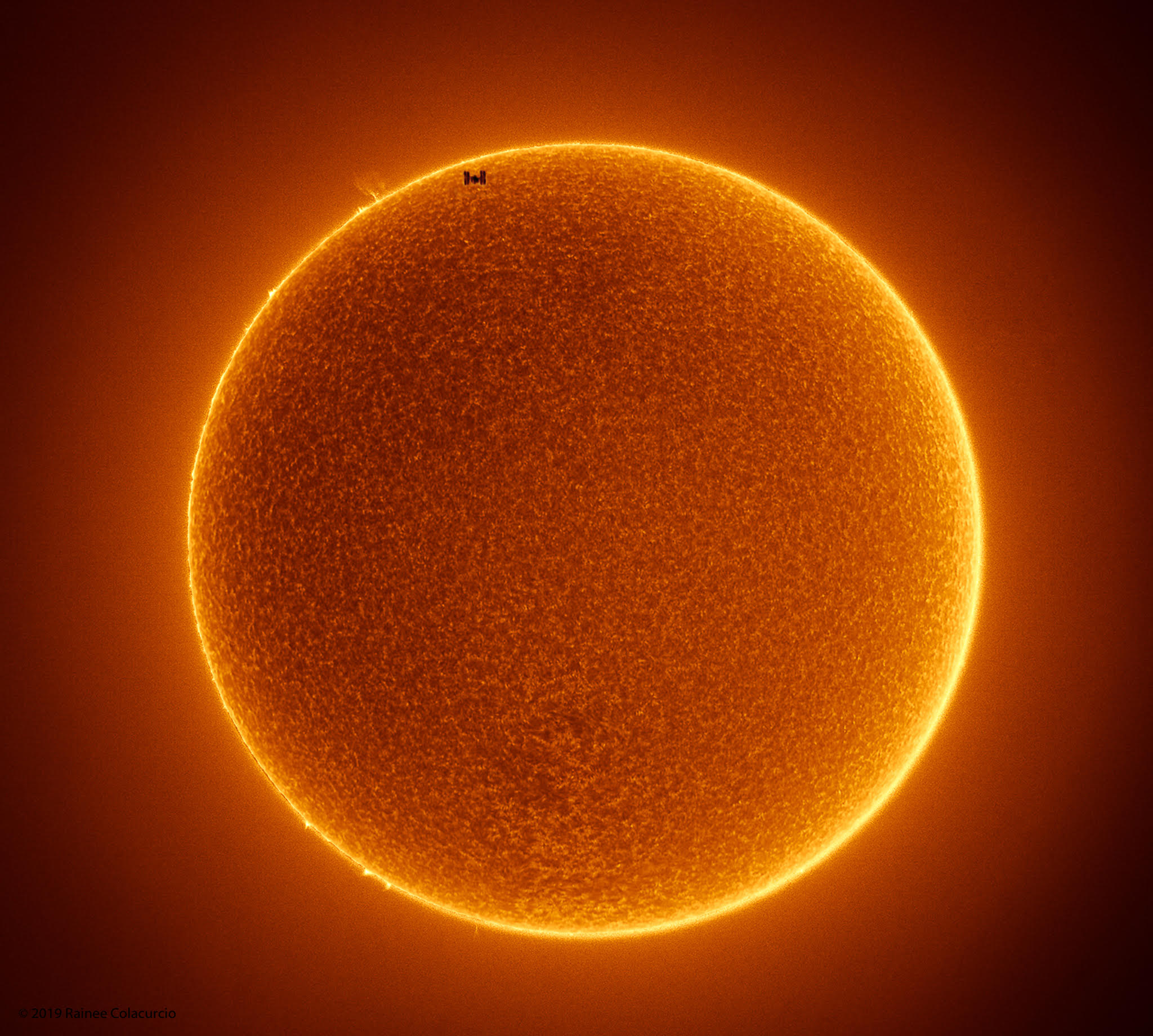
Photographer Rainee Colacurcio captured a gorgeous image of the International Space Station as it flew across the spotless sun. The ISS orbits our home planet every 90 minutes or so, and one can spot the huge ship at night as a white dot cruising through the sky. But snagging such an image during the daytime took some technical know-how. "My go-to setup is a dedicated hydrogen-alpha solar scope," which is a special telescope for observing the sun, Colacurcio told Live Science in an email.
Cosmic baby pic

A “baby pic” of the Milky Way showed off our galaxy’s humble origins, before the cosmic monster cannibalized another, smaller galaxy about 10 billion years ago. In a new study out in 2019 (the one that resulted in the glorious baby shot), researchers identified two flavors of stars in the Milky Way: a "red" group of stars containing a higher concentration of metals, and a "blue" group that was not metal rich and once belonged to that smaller, cannibalized galaxy called Gaia-Enceladus.
Baby crocs
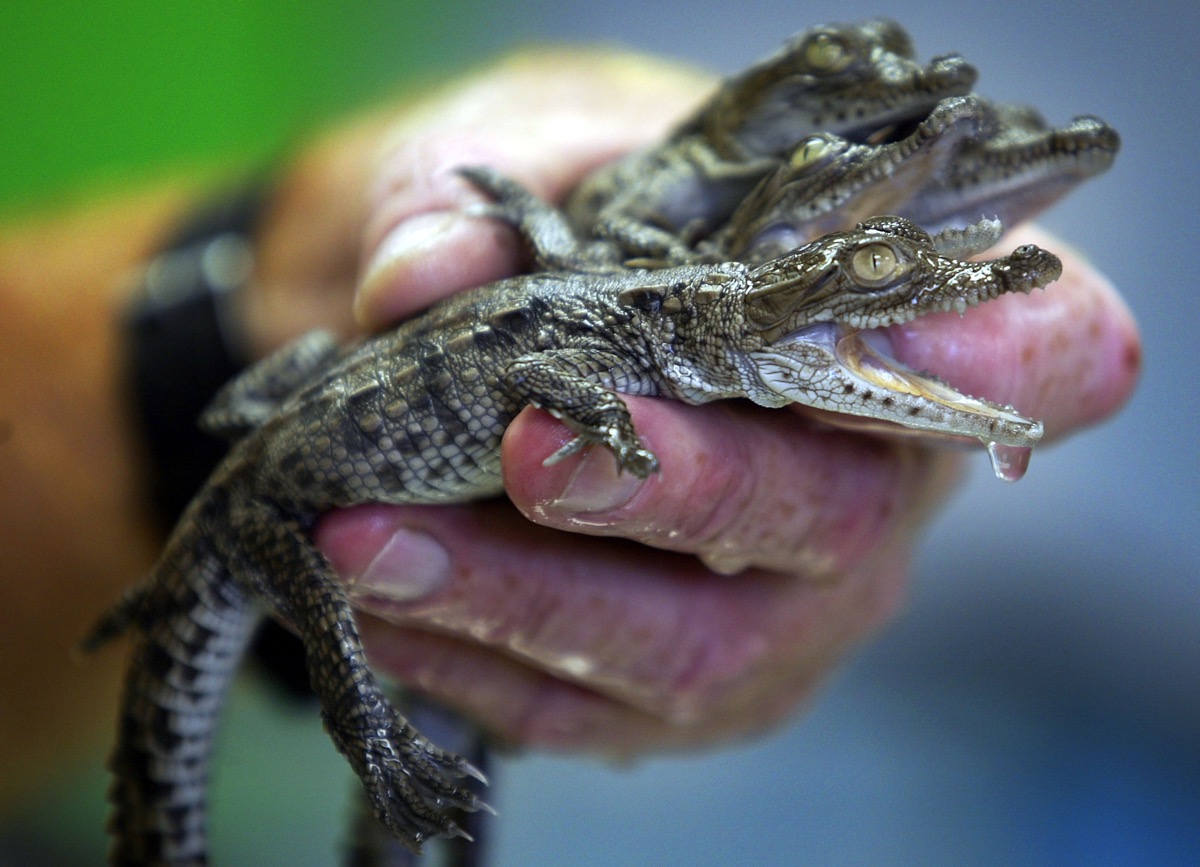
A colony of American crocodiles was found to be thriving in canals in southern Florida that carry the cooling water for a nearby nuclear power plant. This year, experts collected 73 crocodile hatchlings from these canals and implanted them with microchips. That way, researchers can keep track of the baby crocs.
Iron-shelled snail
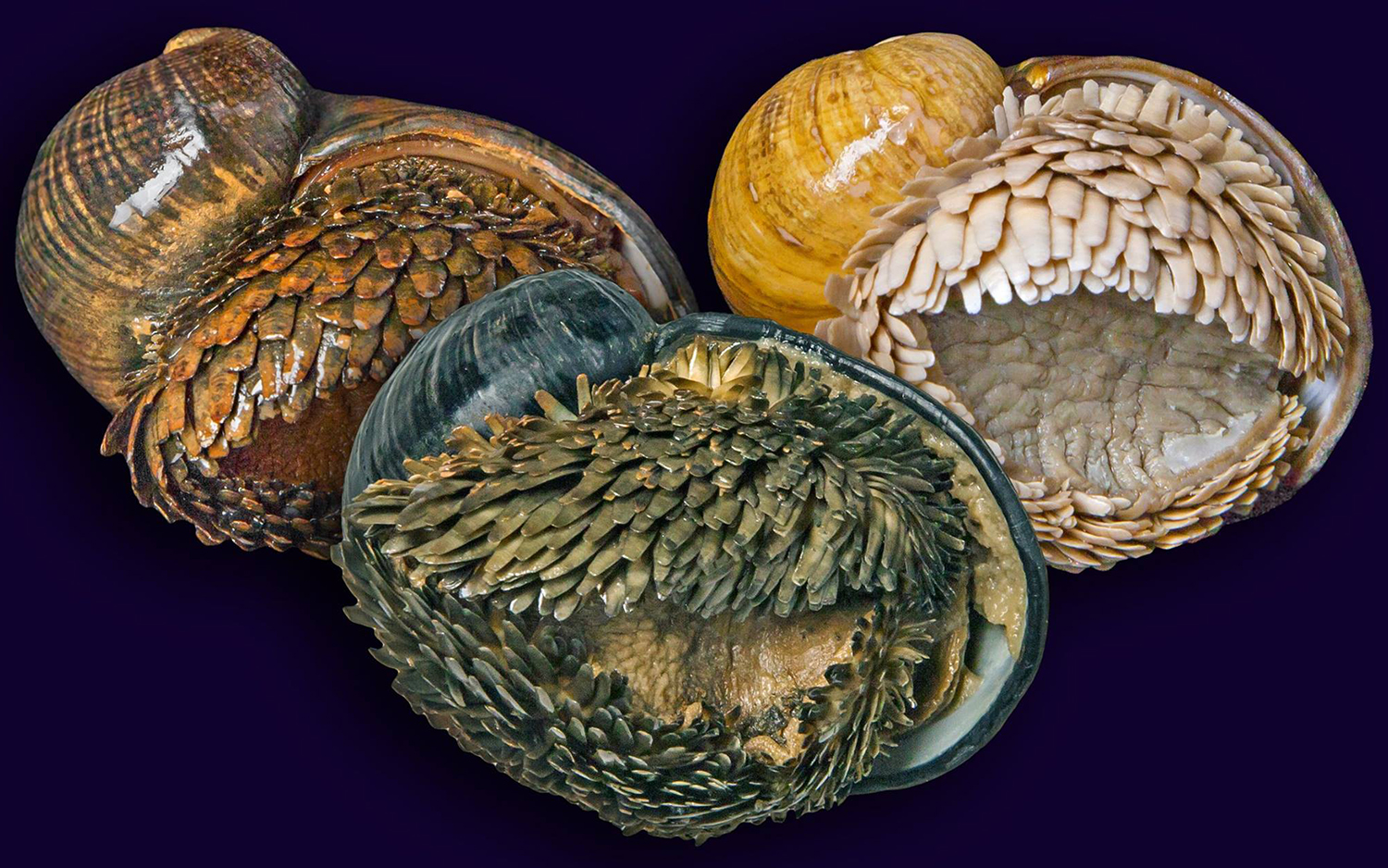
As if a miniature Iron Throne, a certain snail that lives near hydrothermal vents in the deep sea builds its own metallic armor. This scaly-foot snail (Chrysomallon squamiferum), which is also known as the sea pangolin, may look tough but not tough enough to defend against extinction. On July 18, the International Union for Conservation of Nature (IUCN) listed the snail as endangered, making it the first animal species given that status due to the threats of deep-sea mining.
Twisted Milky Way

A detailed 3D map of the Milky Way released this year showed our home galaxy in a new light, and with a twist. Turns out, its central disk, which holds the galaxy’s biggest and brightest stars, is wavy.
Firecloud

NASA’s Earth Observatory shared a haunting image this year showing the blazing heart of a fire cloud hovering above Earth. The magnificent image was snapped on Aug. 8 in eastern Washington state. Though surreal-looking, these fire clouds — also called pyrocumulonimbus or PyroCb clouds — can be quite disruptive, as they act like chimneys to funnel smoke and particles from wildfires into the lower stratosphere.
STEVE
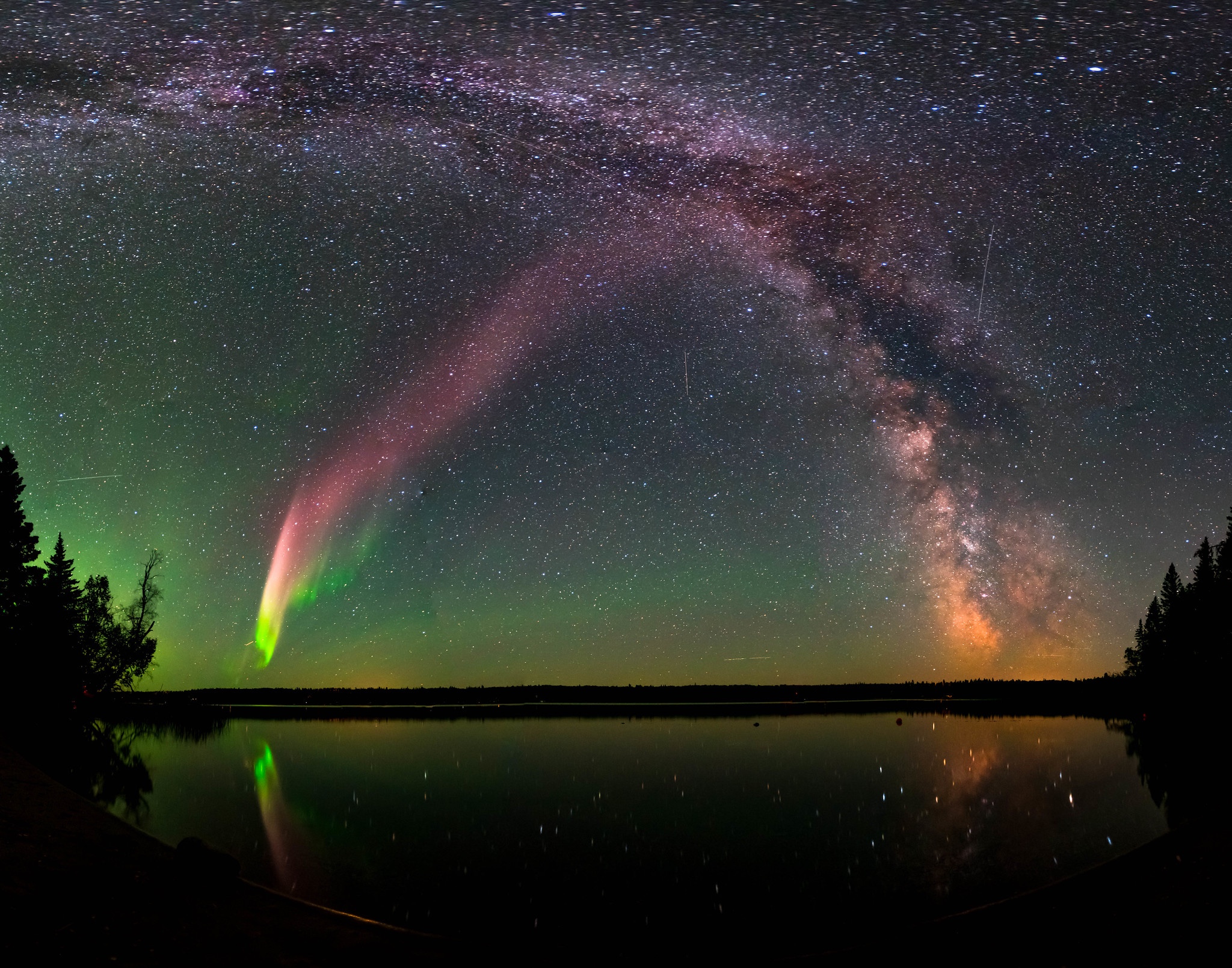
A strong solar storm over Labor Day weekend nudged the northern lights farther south than is typical. And they may not have been alone. Amidst the glowing lights, another solar visitor dubbed STEVE may have lurked. Short for Strong Thermal Emission Velocity Enhancement, STEVE is distinct from aurora in that its light comes from across the spectrum, without peaks in particular wavelengths.
Polarstern

The research vessel Polarstern is one of the world’s most indestructible ships, and this year it departed from Norway en route to the Arctic Ocean where it was tasked with the lofty goal of figuring out how climate change is reshaping the Arctic. The expedition about this icebreaker relied on hundreds of scientists from 17 countries who planned to study the ice, oceans and atmosphere during the mission.
Radio bubbles
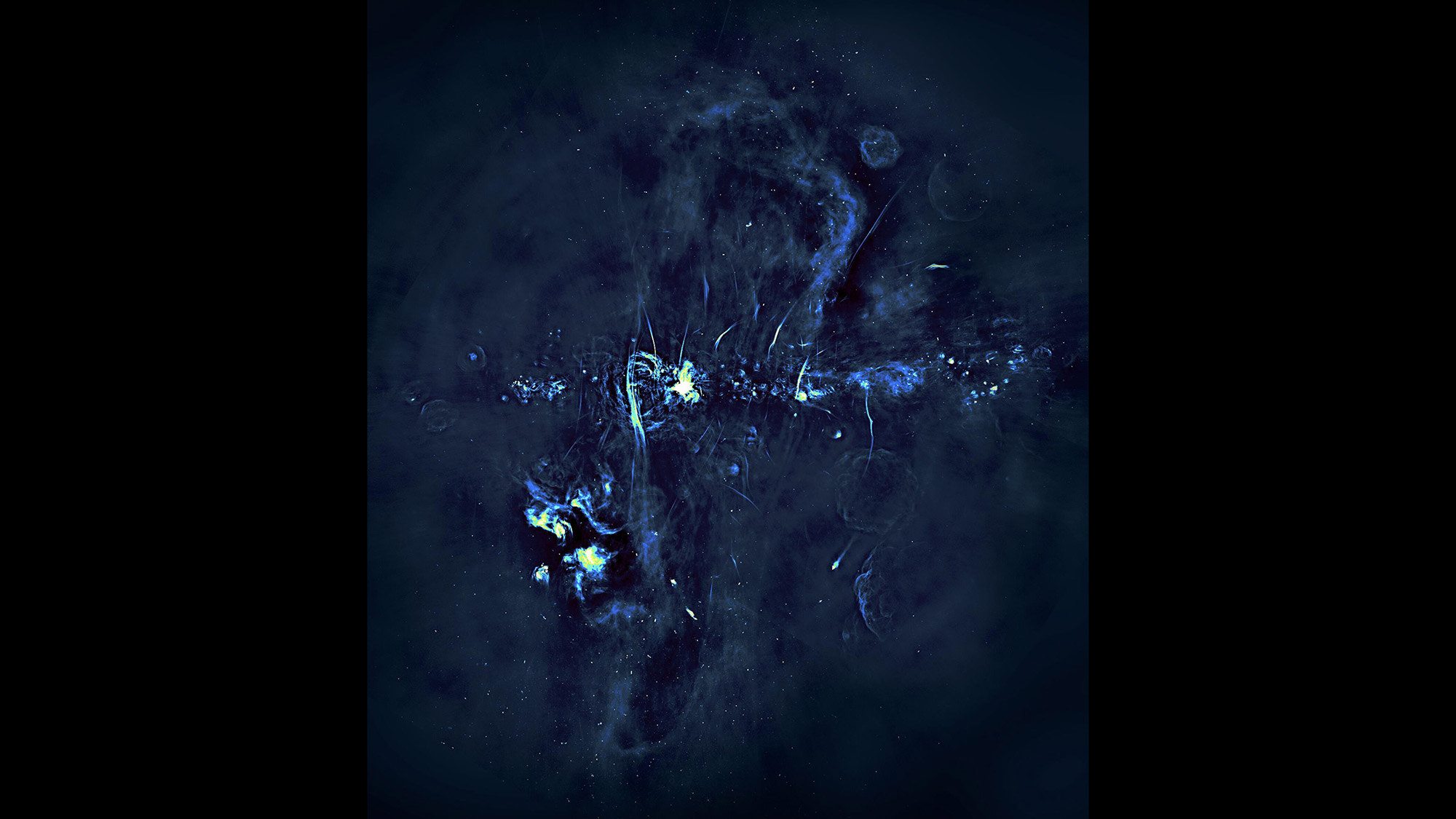
Who knew a bout of bad gas could look so pretty? Turns out, a few million years ago, a cloud of matter and electromagnetic energy erupted near our galaxy’s central black hole. The resulting speedy electrons then tore into clumps of dust and gas nearby, causing them to balloon … and balloon. These gigantic bubbles of invisible energy are still there today, each one towering some 25,000 light-years high (about a quarter of the width of the Milky Way itself). Though astronomers aren’t sure how and when this galactic bubble-blowing blast occurred, this year they reported some fresh clues after looking at the huge bubbles in the radio part of the spectrum.
Purple sunsets

The eruption of the Russian volcano Raikoke in June painted sunrises and sunsets the world over in a purple hue. Here’s how: The eruption spewed sulfur dioxide into the atmosphere, leading to tiny particles called aerosols. These aerosols scatter sunlight, generating more purples at sunrise and sunset. The image above shows one such purple sunrise above Lake Isabelle in Indian Peaks Wilderness, Colorado.
Shapeshifting jellyfish

Deep-sea scientists aboard the research vessel Nautilus in September were quite perplexed and amazed when their underwater recon robot encountered a limp, limbless creature floating over the seafloor in the Pacific Ocean. Right in front of their eyes, the bell-shaped blob suddenly transformed; it ballooned into a long, translucent windsock with a red splotch on its innards. That shapeshifting blob was one of the world’s rarest-seen and least-studied jellyfish: Deepstaria (named for the research vessel that first discovered the genus in the 1960s).
Soyuz launch trails

As if a ghostly parachute in the night sky, an image of the second stage of the launch of a crewed Soyuz capsule was captured from the International Space Station on Sept. 25. Inside were NASA astronaut Jessica Meir, Russian cosmonaut Oleg Skripochka and United Arab Emirates spaceflight participant Hazzaa Ali Almansoori. They were bound to join a crew of six living and working on the ISS.
Universe hubble
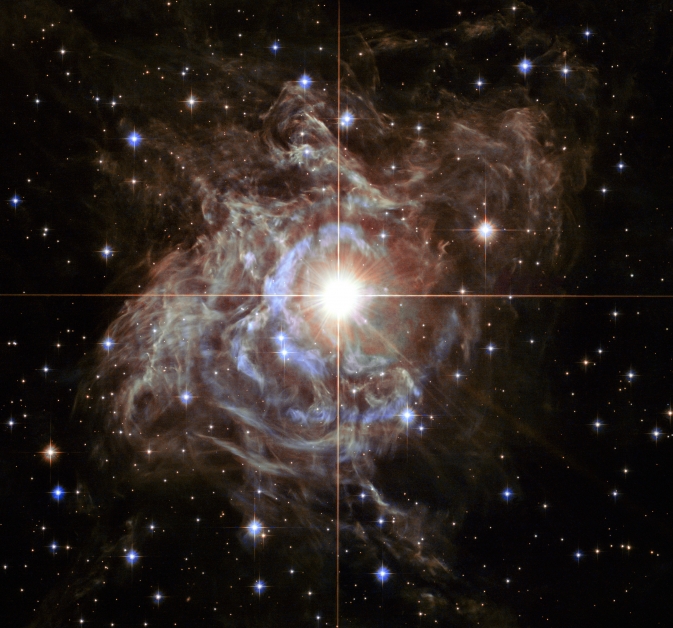
The Hubble Space Telescope captured this image of RS Puppis, one of the brightest Cepheid stars visible in our galaxy. The star lies some 6,000 light-years away in the Puppis constellation. In addition to being beautiful, stars like this one are vital to solving a long-standing astrophysical mystery: How fast is the universe expanding? Different methods, it seems, are spitting out different answers to that question. And that’s a big deal.
"If we're getting different answers that means that there's something that we don't know," Katie Mack, a theoretical cosmologist at North Carolina State University (NCSU) and co-author of a new paper on the measurements, told Live Science this year. "So this is really about not just understanding the current expansion rate of the universe — which is something we're interested in — but understanding how the universe has evolved, how the expansion has evolved, and what space-time has been doing all this time."
Whale bubble nets
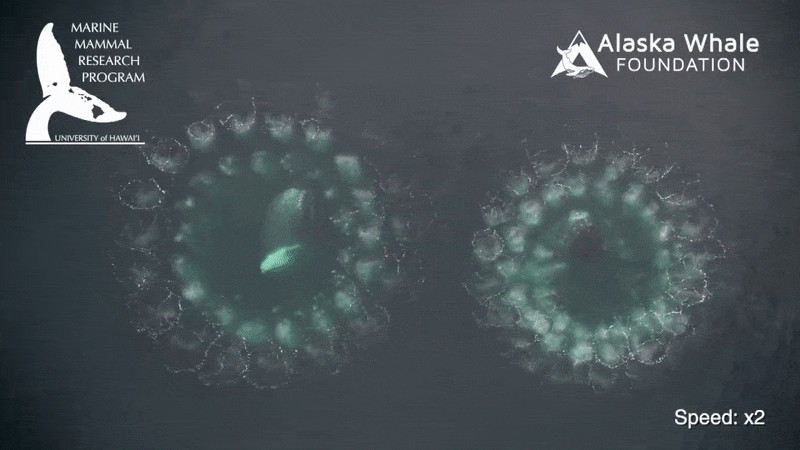
Humpback whales were spotted carrying out a magical dinner ritual this year: blowing bubbles. These behemoths of the sea blow streams of bubbles in order to create nets of air to trap tiny marine creatures that the whales eat. Rare footage captured with cameras flying overhead and those attached to feeding whales this year showed the incredible sight in waters near southeastern Alaska.
Yeti galaxy
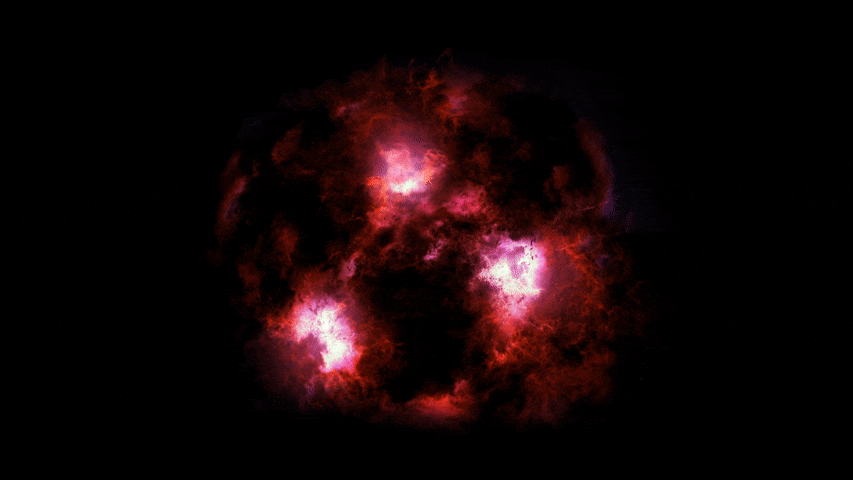
Researchers snapped the first images of a "monster galaxy" as elusive as the yeti this year. Rather than the ape-like giant of the Himalayas, this monster churns out stars at a rate that’s 100 times greater than that of the Milky Way. Astronomers seem to have found this beast’s footprints by accident. They got a glimpse of the youthful galaxy’s light as its star-forming illumination glimmered through dust clouds.
Rainbow-colored turtle embryo

The top prize in this year's Nikon Small World microphotography contest went to a developing (and colorful) turtle embryo. To create the technicolor image, a duo of scientists combined fluorescence and stereo microscopy — an optical imaging technique, resulting in the vivid pink hues highlighting the reptile’s growing skeleton and blue and green indicating the textures and patterns in the embryo’s skin and shell.
Cosmic ghost face

Just in time for Halloween, creepy starlit eyes peer out from two distant galaxies mid-collision. The galaxies are surrounded by a mishmash of stars from their galactic disks. NASA’s Hubble Space Telescope caught the action in a new image released at the end of October. Get a good luck, as the ring structure outlining the “ghost face” will stay around for only about 100 million years; the galactic merger is expected to take about 1 billion to 2 billion years.
Human-size blob of squid eggs
Divers off the western Norway came face-to-face with a human-size gelatinous blob that turned out to be a squid mama’s egg sac. In the captured video, a diver slowly circles the spherical and drifting blob enclosed in a transparent membrane. As the diver’s flashlight lights up the innards of the blob, you can see lots of tiny spheres — hundreds of thousands of eggs holding … baby squid. Squee! (Related: Find Out About All the Blobs of 2019)
Mars selfie

In this eerie image, NASA's Curiosity Mars rover sits in the Marias Pass, a low valley in Gale Crater. For the past three Martian years, the rover has been breathing in the air above the crater and analyzing that air using the Sample Analysis at Mars (SAM), a portable chemistry lab of sorts. The analysis revealed the oxygen levels there fluctuate dramatically as the seasons change, something that can’t be explained by any known chemistry.
Where no life survives
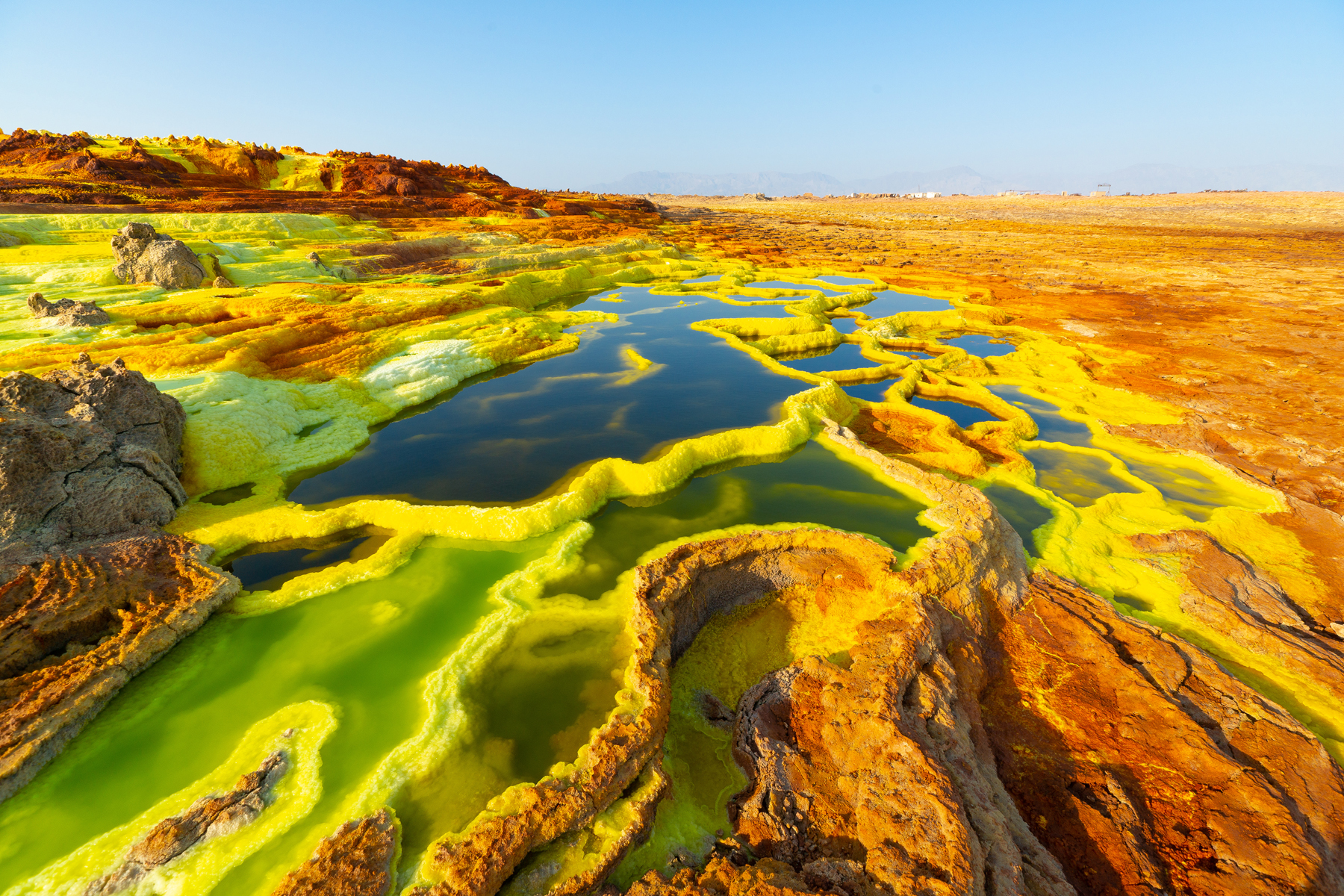
The Dallol hydrothermal pools in northern Ethiopia are harsh environments that look more alien than Earthly. The glowing green and yellow hues indicate a scorching-hot landscape that is considered one of the most extreme places on Earth. This year, scientists figured out that some of these hydrothermal pools are completely, yes completely, devoid of any life.
Cosmic waltz
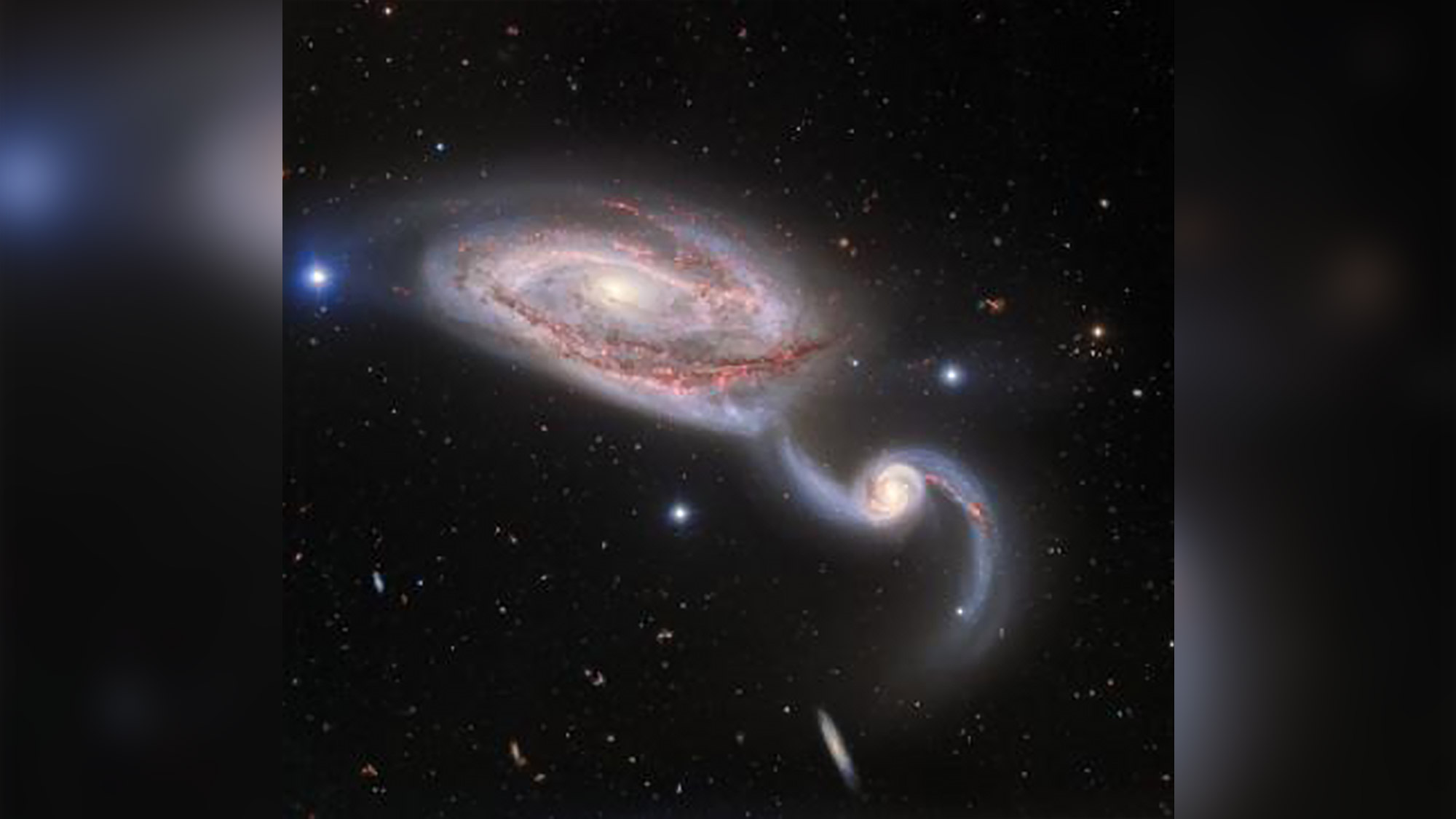
The Gemini Observatory captured one of the most graceful and glorious of cosmic duos in the universe: A pair of galaxies some 160 million light-years away called NGC 5394/5 or the Heron Galaxy. In the image, the galaxies are in a sort of waltz, and as they collide, they leave sparkling trails as evidence that stars are forming due to the partners' close moves. Both of these spiral galaxies lie in the constellation Canes: The larger galaxy on the left is about 140,000 light-years across, while the smaller one is 90,000 light-years across.
New Jupiter storm
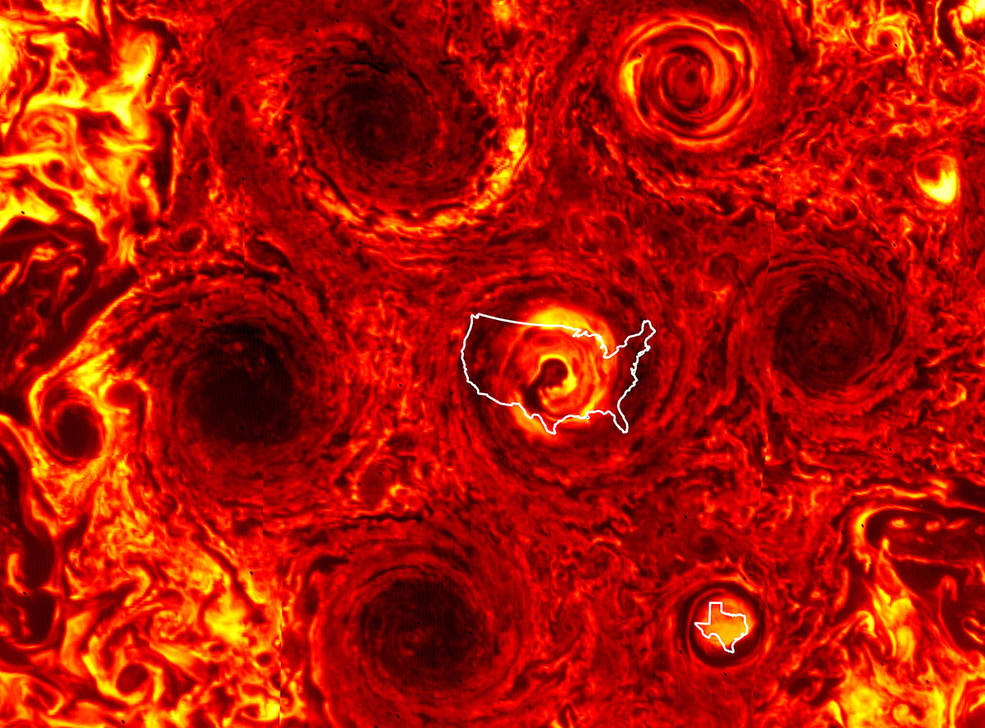
During its 22nd flyby of Jupiter, the Juno spacecraft discovered a new tempest at the gas giant's south pole. While the flyby was quite a nail-bitter as the solar-powered craft needed to avoid flying into a death trap (a huge shadow where no sun power would be available), the trip revealed a new whirling storm. The storm is part of a cool-looking formation, where six swirling storms are arranged around another, giant one that's as wide as the United States. Before now, scientists had known about the five storms whirling around a center.
"Data from Juno's Jovian Infrared Auroral Mapper [JIRAM] instrument indicates we went from a pentagon of cyclones surrounding one at the center to a hexagonal arrangement," Alessandro Mura, a Juno co-investigator at the National Institute for Astrophysics in Rome, said in a NASA statement. "This new addition is smaller in stature than its six more established cyclonic brothers: It's about the size of Texas. Maybe JIRAM data from future flybys will show the cyclone growing to the same size as its neighbors."
Amazing Antarctica
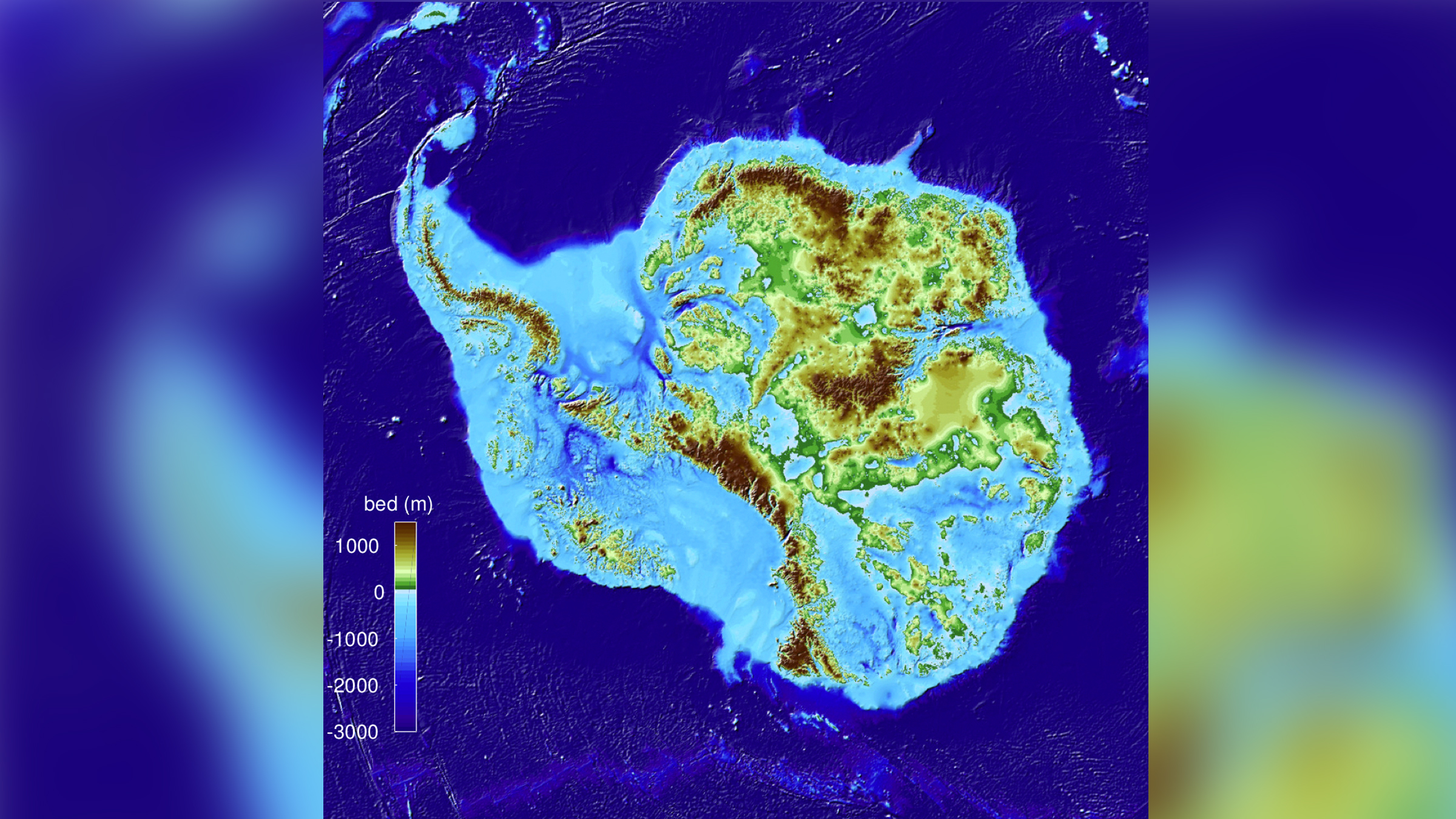
Glaciologists unveiled the most accurate image showing the contours of the land beneath Antarctica's ice sheet. The results are more than pretty; the portrait should help scientists figure out which regions will be more, or less, susceptible to global warming. The map has also divulged some of the southernmost continent's secrets. For instance, scientists found ridges that protect the ice flowing across the Transantarctic Mountains, they said in a statement.
Mount Erebus: Rising from the ice
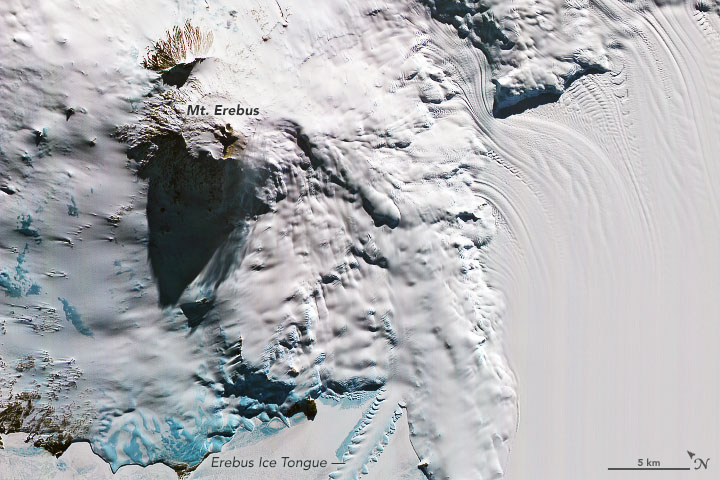
This week, NASA's Earth Observatory released a gorgeous image of Mount Erebus, protruding from the endless white that is Antarctica. While most of the continent is blanked in our planet's largest single slab of ice, this volcano makes itself known — its summit reaches an elevation of 12,448 feet (3,794 meters) — on Ross Island. Instruments aboard NASA's Terra satellite captured this image, which also shows the Erebus Ice Tongue, a fast-flowing strip of ice that cuts into McMurdo Sound.
Chasing Steve

A new documentary reveals the behind-the-scenes story of an oddball sky glow endearingly named "Steve" that was first spotted over Canada in 2016 — to the delight of aurora chasers and skywatchers alike. Steve resembled typical aurora in some ways, but its ribbons and ladders of purple and green light were shaped differently than those of other aurora. The documentary, “Chasing Steve,” is currently available to view in Canada on Vimeo, and it will soon be available to rent or purchase in the U.S. via the film's website.
Biblical snake

Hoag's Object
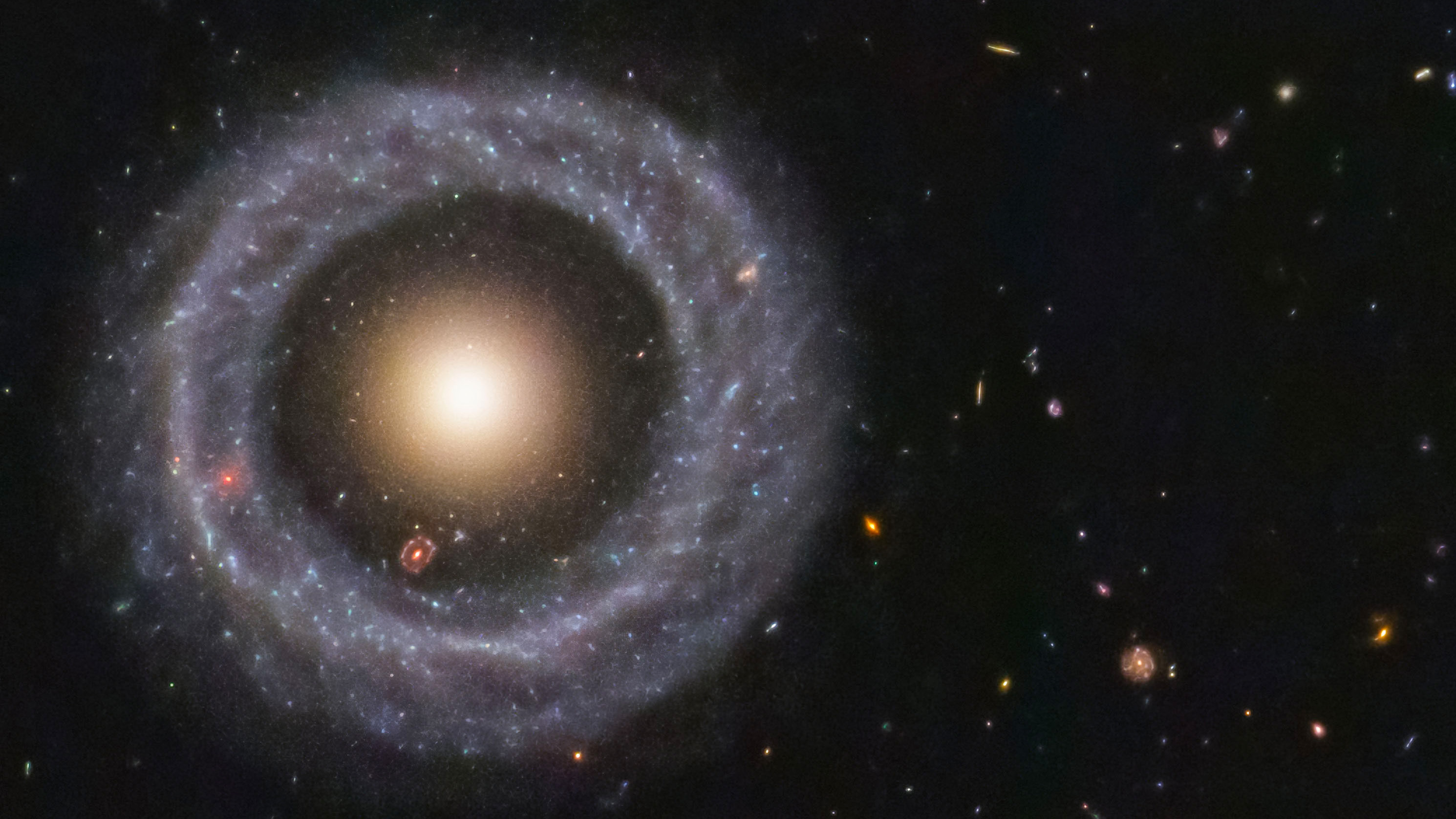
A stunning image captured by the Hubble Space Telescope and processed by geophysicist Benoit Blanco this year shows Hoag's Object — which spans 100,000 light-years across — glistening in the serpent constellation, with a billions of blue stars forming a perfect circle around a much smaller and denser orb of reddish stars; that's not all, lurking in the gap between these star circles is another ring galaxy that's much farther away from us.
Universe simulation
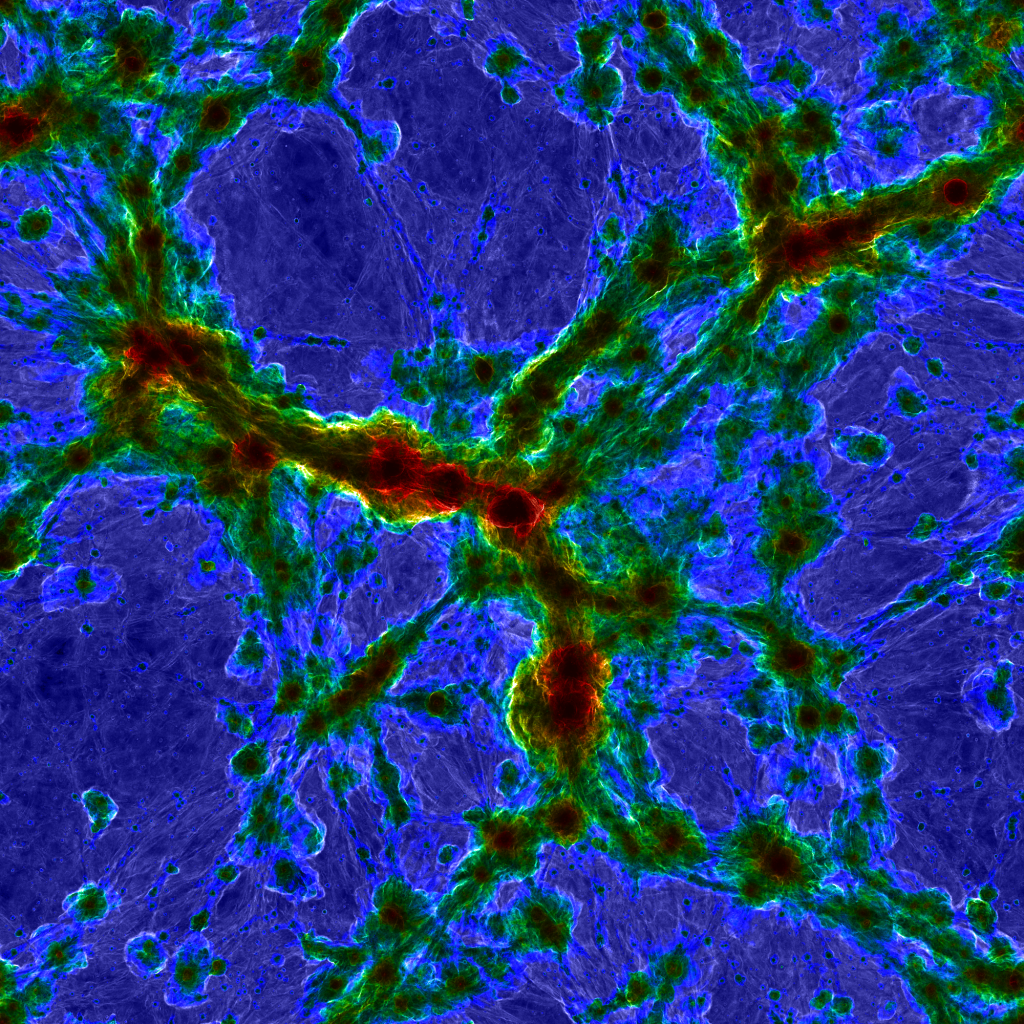
Universe simulation.
Jeanna Bryner is managing editor of Scientific American. Previously she was editor in chief of Live Science and, prior to that, an editor at Scholastic's Science World magazine. Bryner has an English degree from Salisbury University, a master's degree in biogeochemistry and environmental sciences from the University of Maryland and a graduate science journalism degree from New York University. She has worked as a biologist in Florida, where she monitored wetlands and did field surveys for endangered species, including the gorgeous Florida Scrub Jay. She also received an ocean sciences journalism fellowship from the Woods Hole Oceanographic Institution. She is a firm believer that science is for everyone and that just about everything can be viewed through the lens of science.


